The Best Players of the Super Bowl Era by Uniform Number

The Best Players of the Super Bowl Era by Uniform Number
00 — Jim Otto
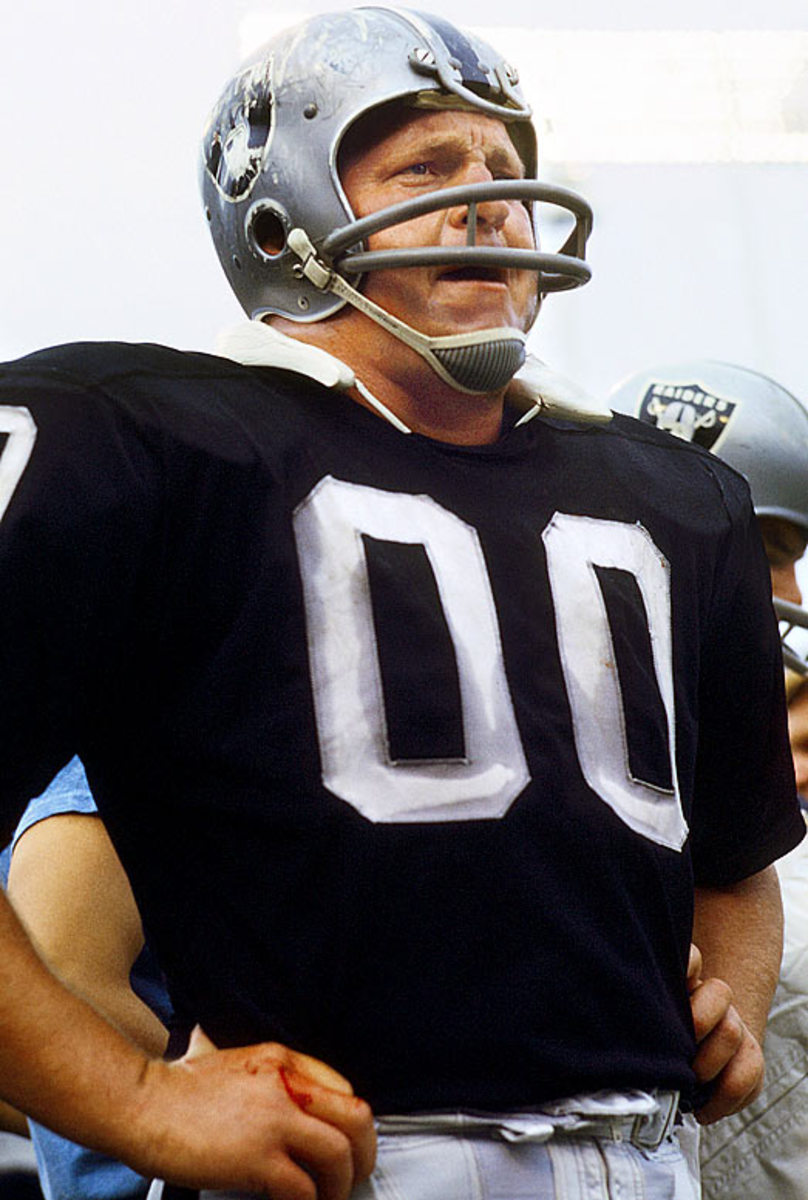
Not many players have sported the zero (or in this case, double-zero), but Otto just so happens to be one of the game's all-time great linemen. A 1980 Hall of Fame inductee, Otto was named to 12 Pro Bowls and 10 All-Pro teams. The final five of his 15 seasons came after Oakland moved into the NFL.
1 — Warren Moon
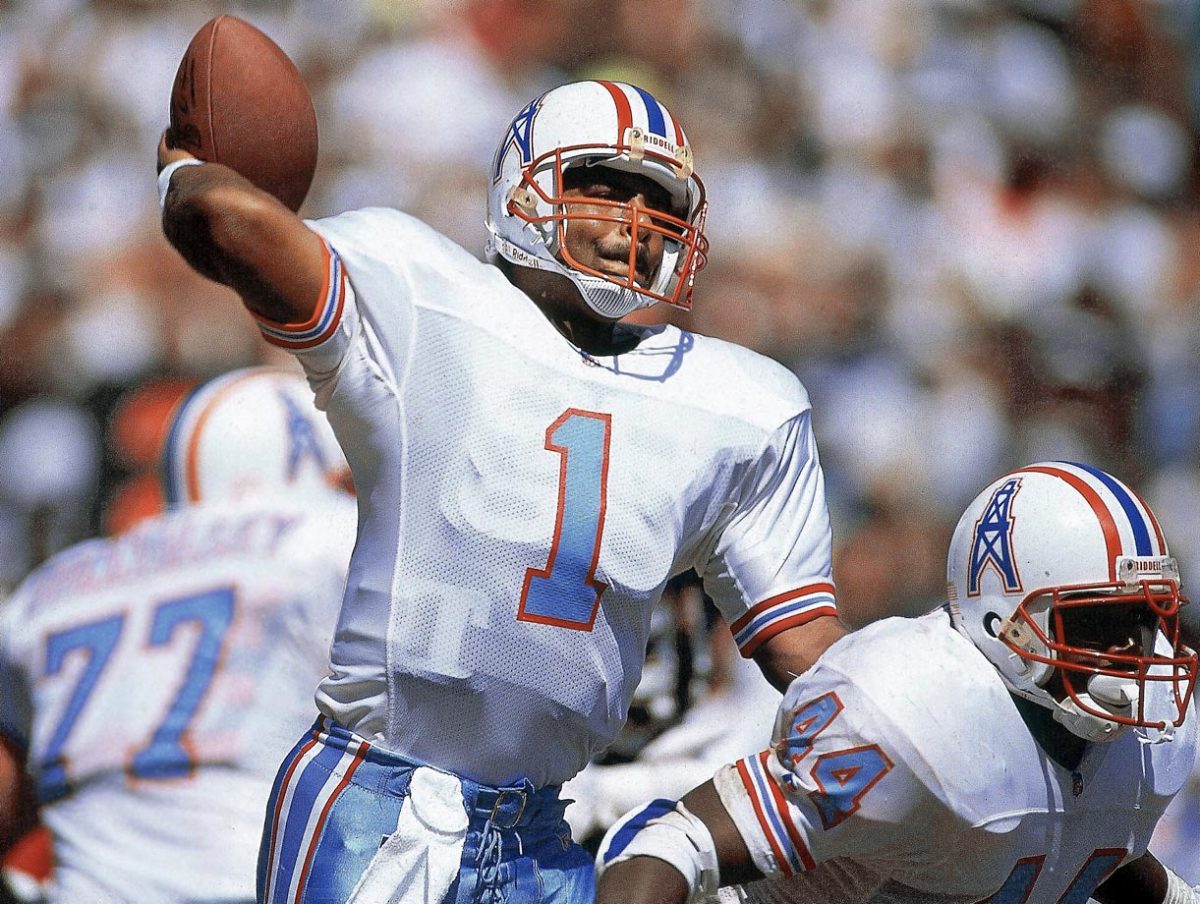
Moon threw for 21,000-plus yards and won five championships as a pro ... before even beginning his 17-season NFL career. A CFL Hall of Famer, Moon also carved out an NFL Hall of Fame career. He ranks seventh in career passing yards (49,325) and eighth in passing touchdowns (291).
2 — David Akers
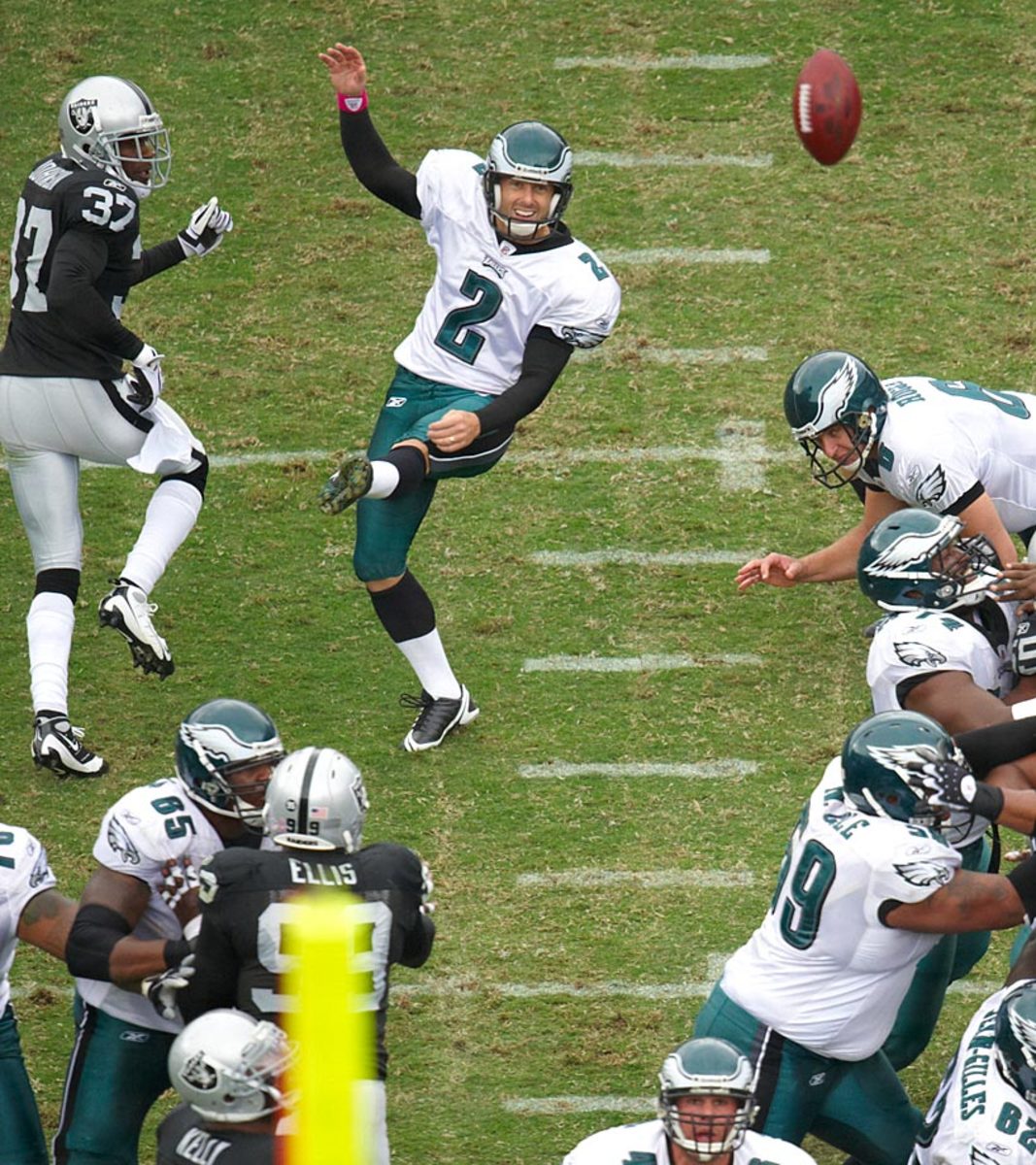
Akers led the NFL in scoring for an entire decade, posting 1,169 points from 2000–09. As a result, he was named to the second team of the Pro Football Hall of Fame's All-2000s roster. He ranks 11th all-time in career points (1,721). Could Matt Ryan eventually surpass Akers as the greatest No. 2 ever?
3 — Jan Stenerud
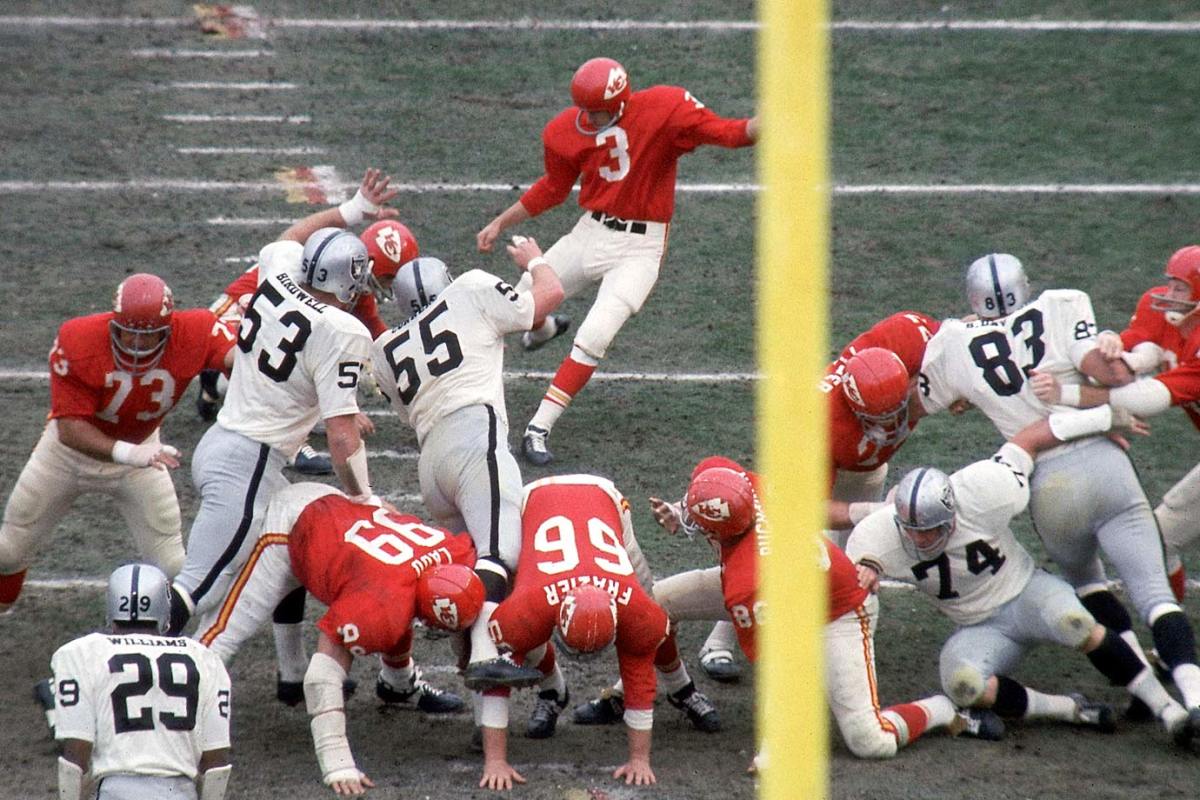
Russell Wilson may hold this honor before long. But for now, the choice comes down to Stenerud and ex-Bills/Raiders QB Daryle Lamonica. Give the nod to the Hall of Famer. Stenerud made 373 field goals and accounted for 1,699 points over a 19-year career.
4 — Brett Favre
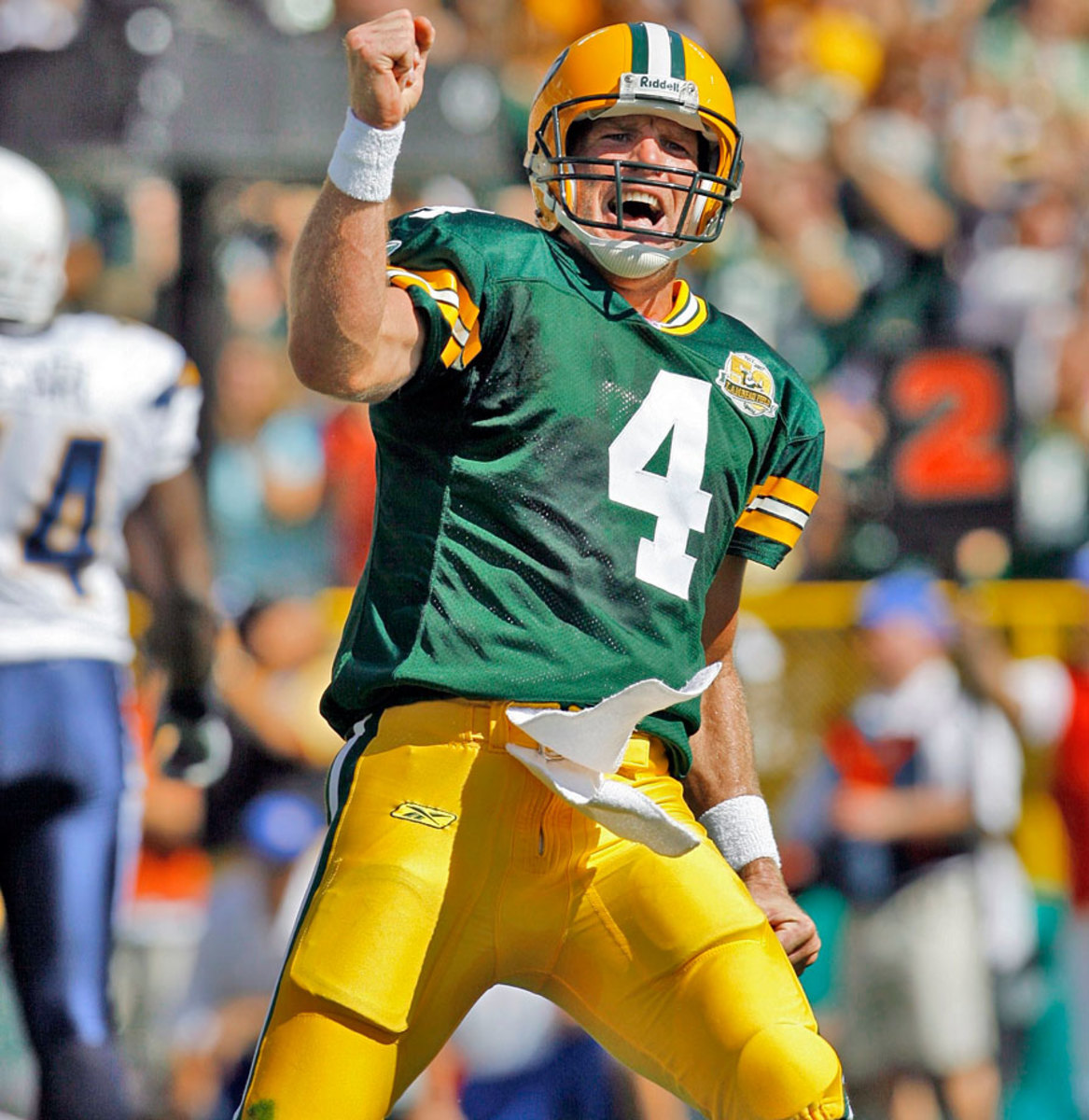
The recent (and repeat) SI cover boy should be a first-ballot Hall of Famer come February. He still holds myriad NFL records, including passes attempted, completions and passing yards. No. 4 also has been a favorite of many decorated kickers, among them Adam Vinatieri and Jason Hanson.
5 — Donovan McNabb
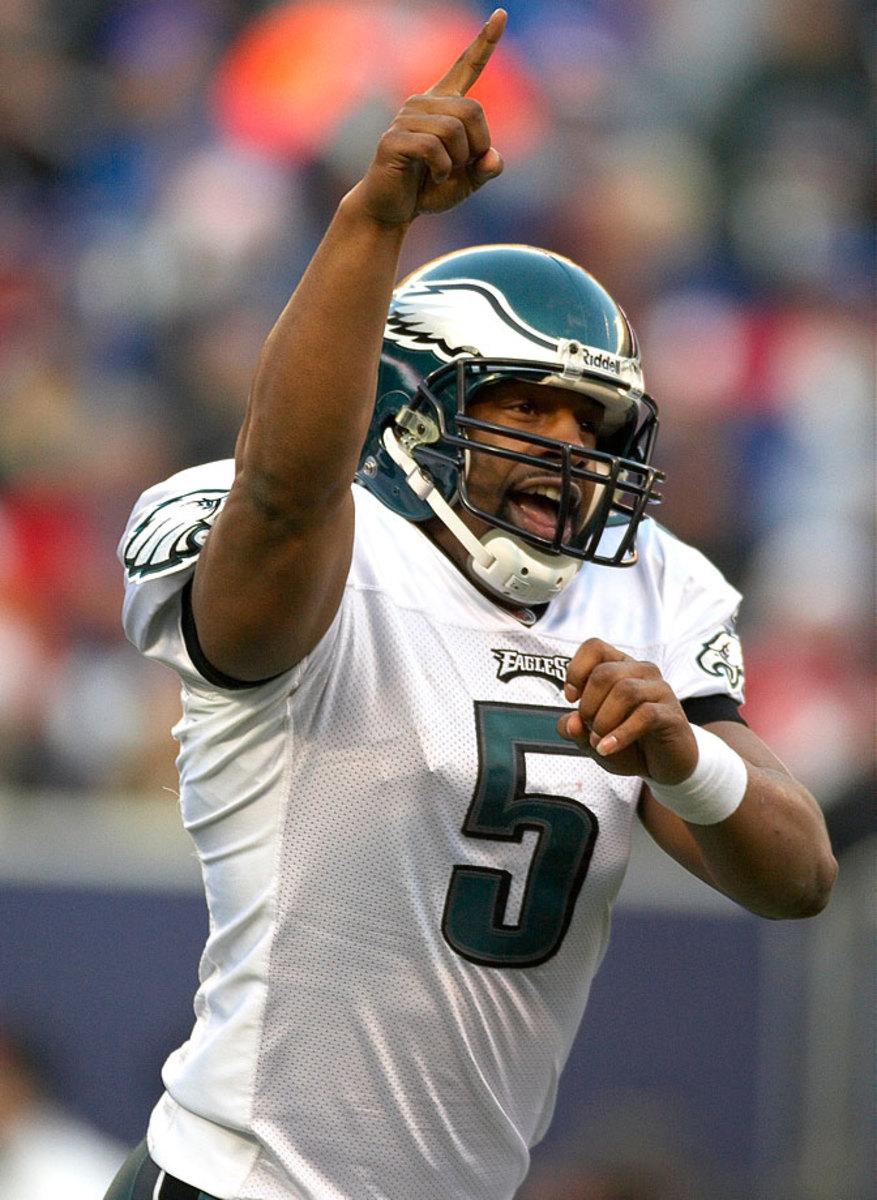
The ‘Golden Boy,’ Paul Hornung, played just one season in the Super Bowl era (and won a title), so McNabb gets the spot. A remarkable athlete in his prime, the six-time Pro Bowler turned Philadelphia into a perennial contender.
6 — Jay Cutler
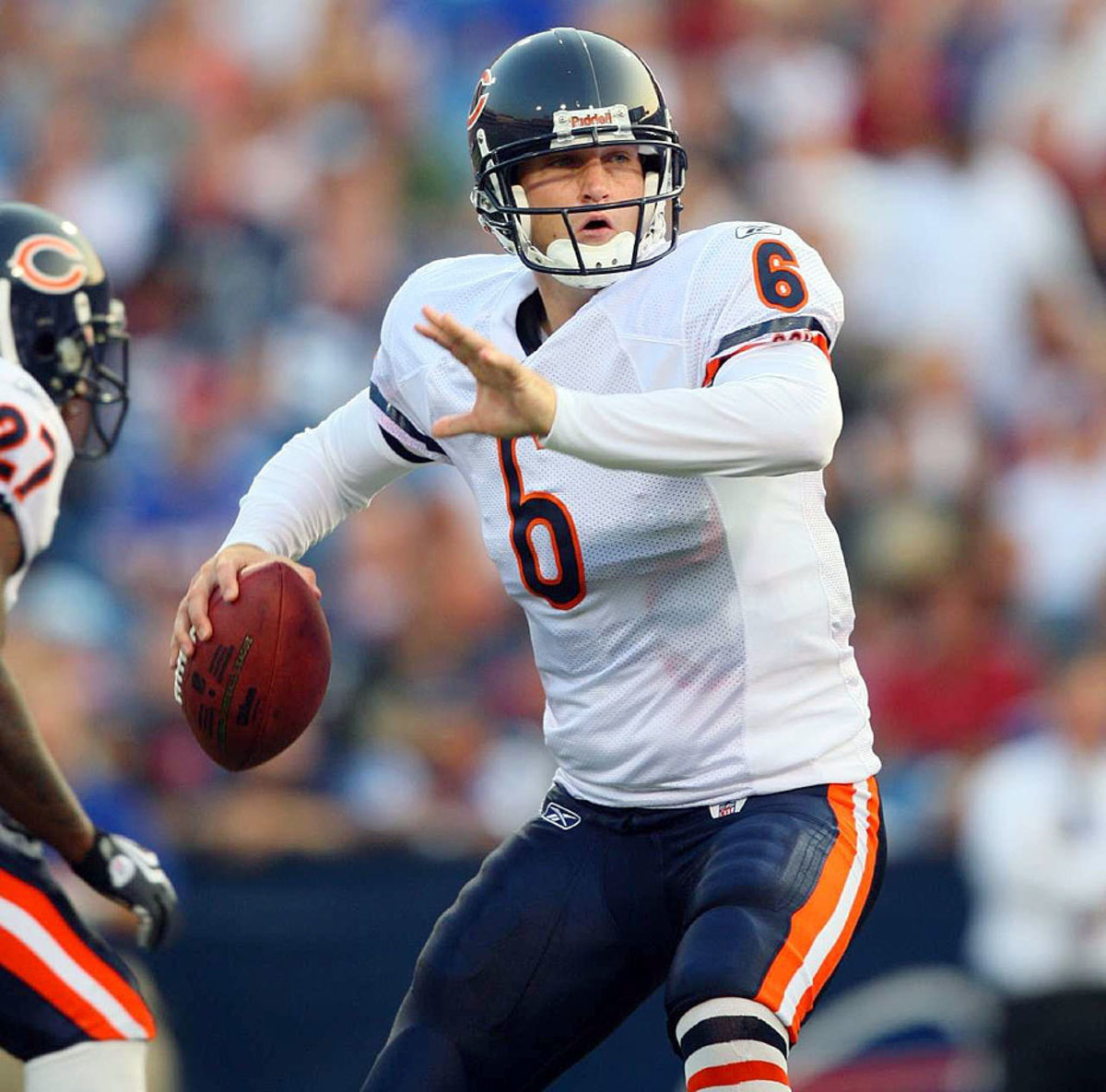
A number reserved for good-not-great kickers (Kevin Butler, Rolf Benirschke) and serviceable-not-good quarterbacks (Bubby Brister, Mark Sanchez). So it's Cutler in this spot almost by default. In his defense, Cutler likely will finish his career in the league's top 20 for career passing yards.
7 — John Elway
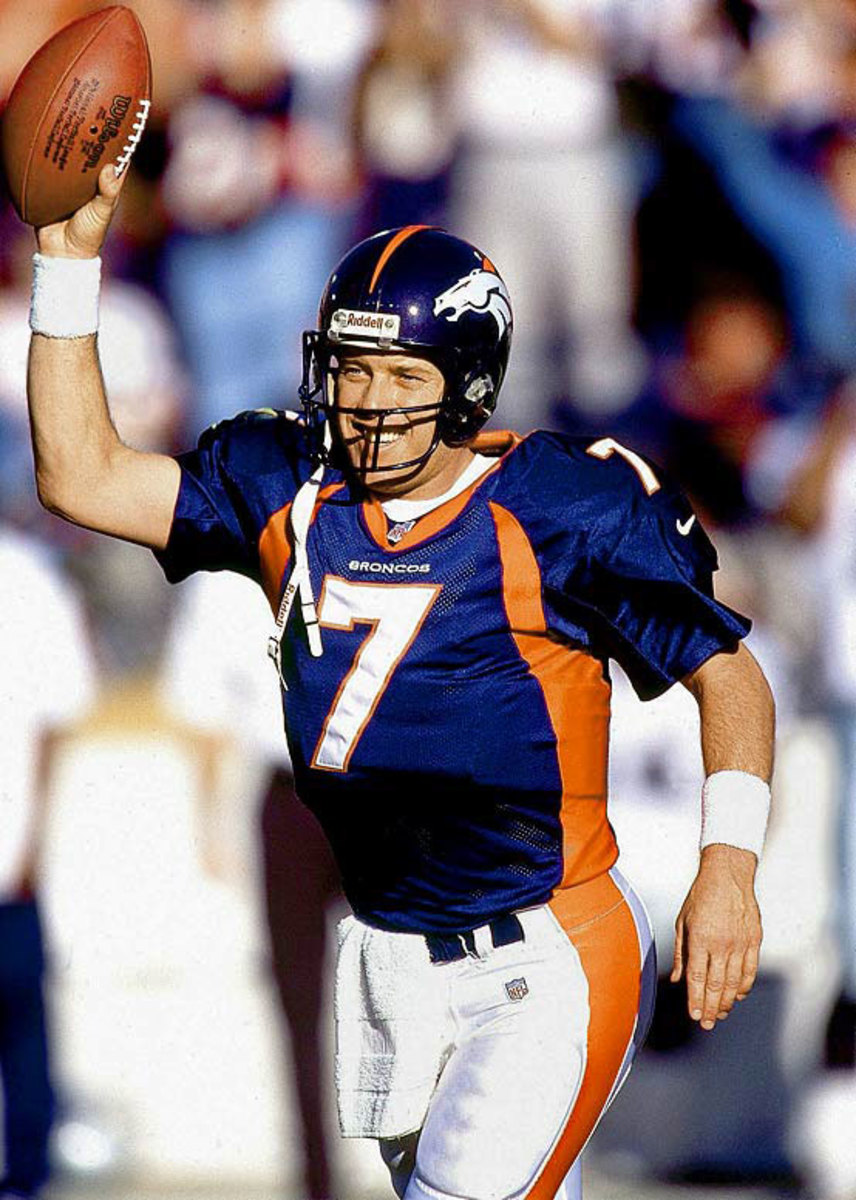
Ben Roethlisberger may be building a Hall of Fame case, and Morten Andersen certainly has one. Neither comes close to bumping Elway off the No. 7 mountaintop. Elway entered the Hall in 2004 after winning two Super Bowls and posting top 10 career marks in passing yards and touchdowns.
8 — Steve Young
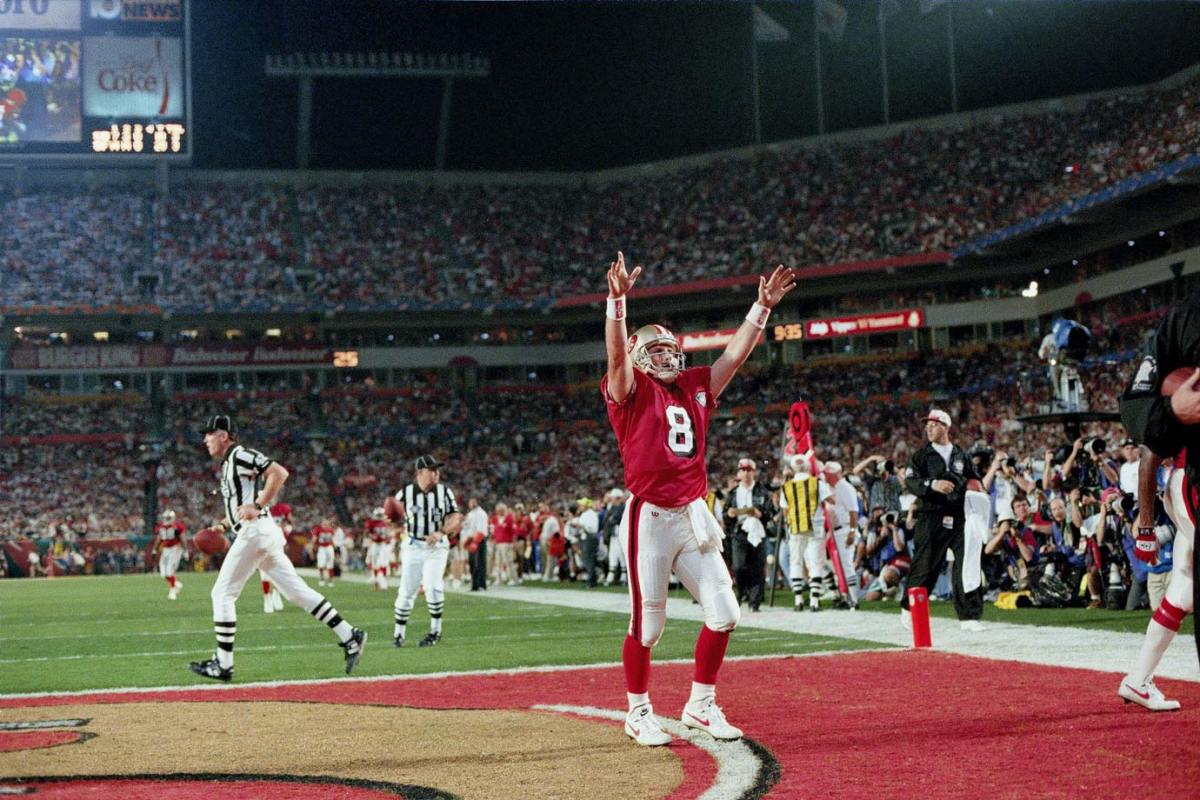
Probably our first real bit of controversy. Would you rather have Young or Troy Aikman under center? Both won a Super Bowl and a Super Bowl MVP. Both are in the Hall of Fame. But Young's numbers across the board—including as a runner—are astounding.
9 — Drew Brees
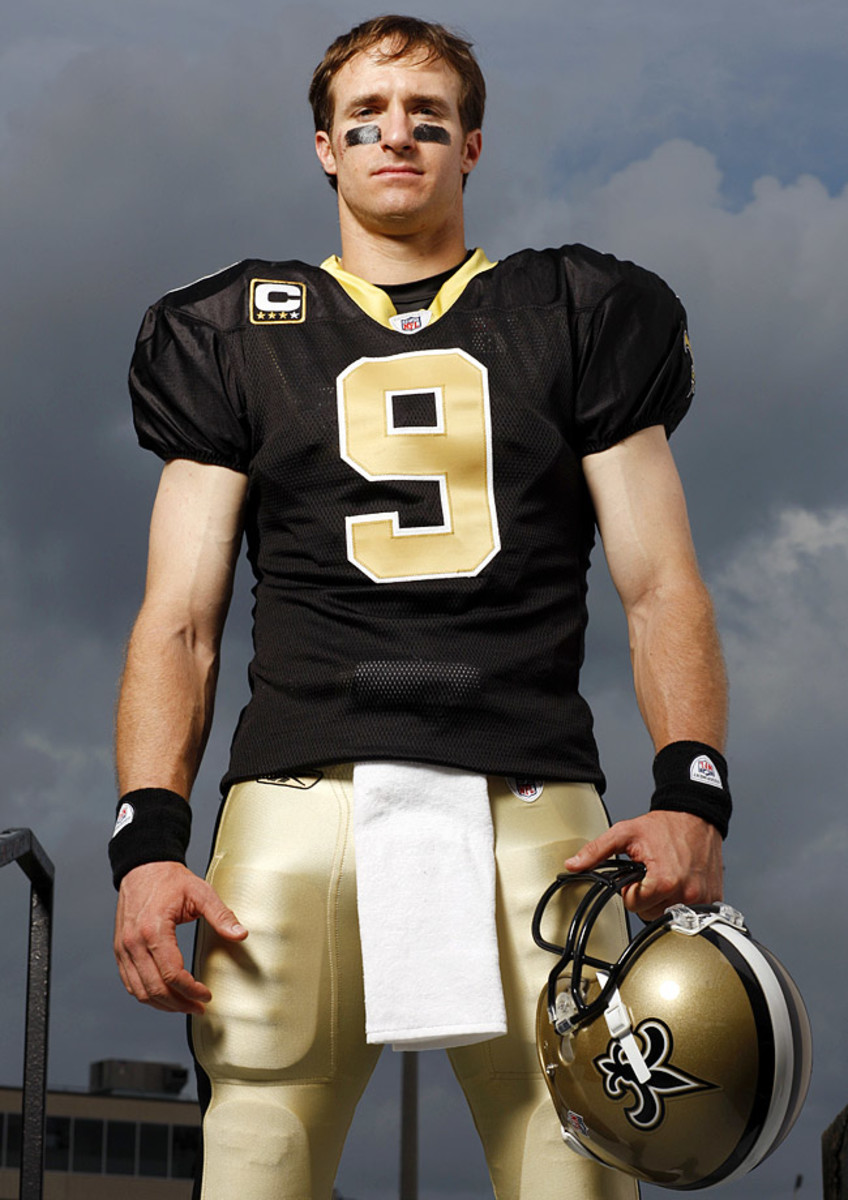
Half of Hall of Famer Sonny Jurgensen's career came before the Super Bowl era, so the choice of Brees becomes a little easier, but not that Brees needs any extra help. Twice the NFL's Offensive Player of the Year, Brees ranks in the top five for career completions, attempts, passing yards and touchdowns.
10 — Fran Tarkenton
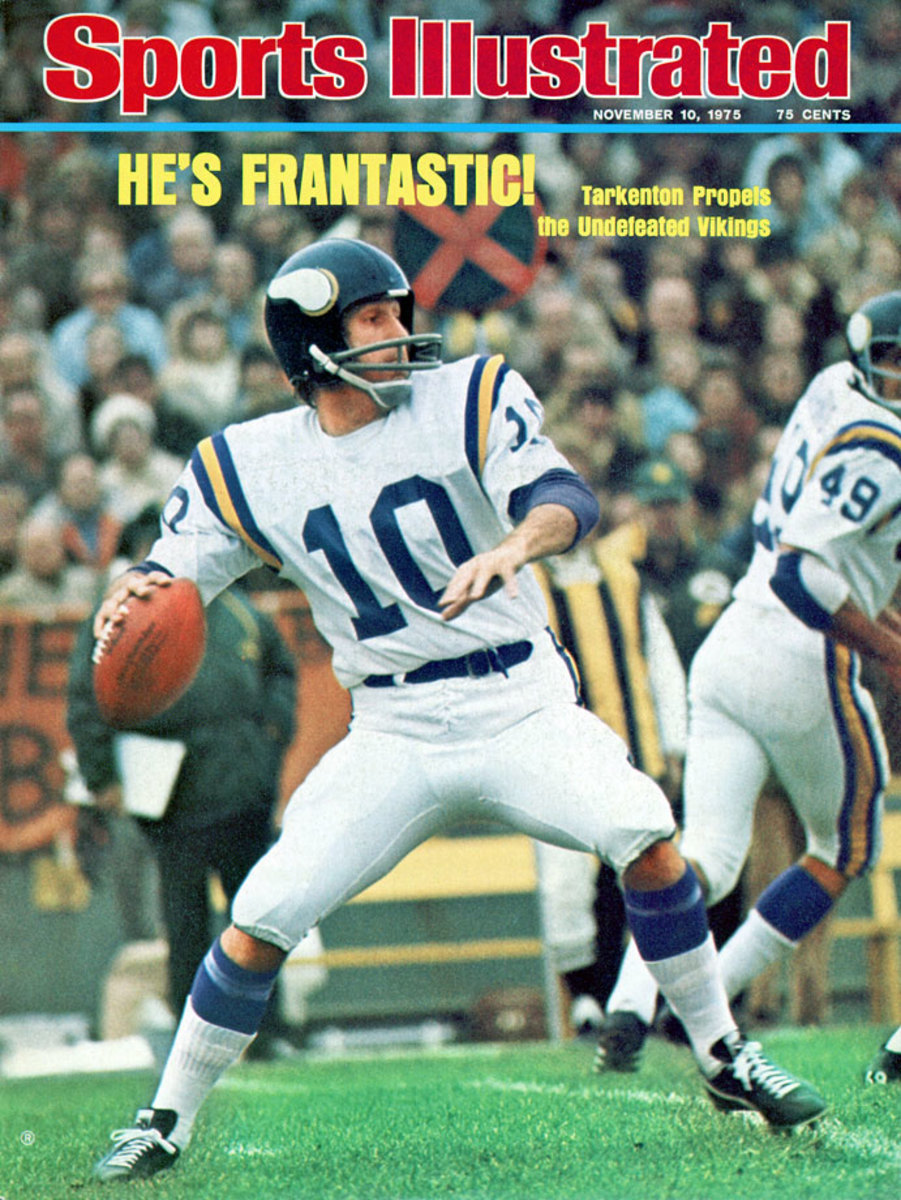
Inducted into the Hall in 1986, Tarkenton was to the ’60s and ’70s what Steve Young was to the ’90s. His dual-threat abilities were unmatched for some time in the NFL, and he got better with age. Tarkenton's MVP win came in 1975, his 15th season.
11 — Larry Fitzgerald
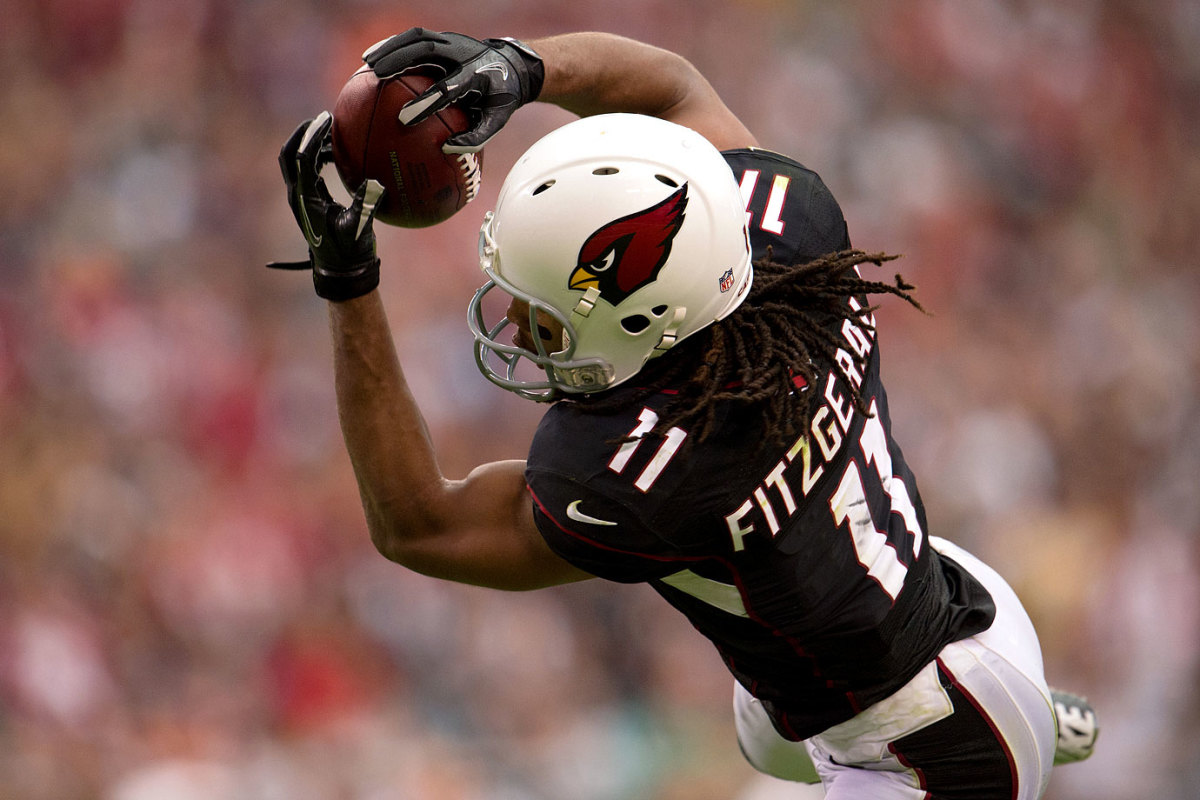
Because he is approaching the tail end of his career (and because the NFL produces an endless stream of 1,000-yard receivers these days), Fitzgerald gets a little overlooked. He shouldn't be. The Hall of Fame probably awaits when he's done.
12 — Tom Brady
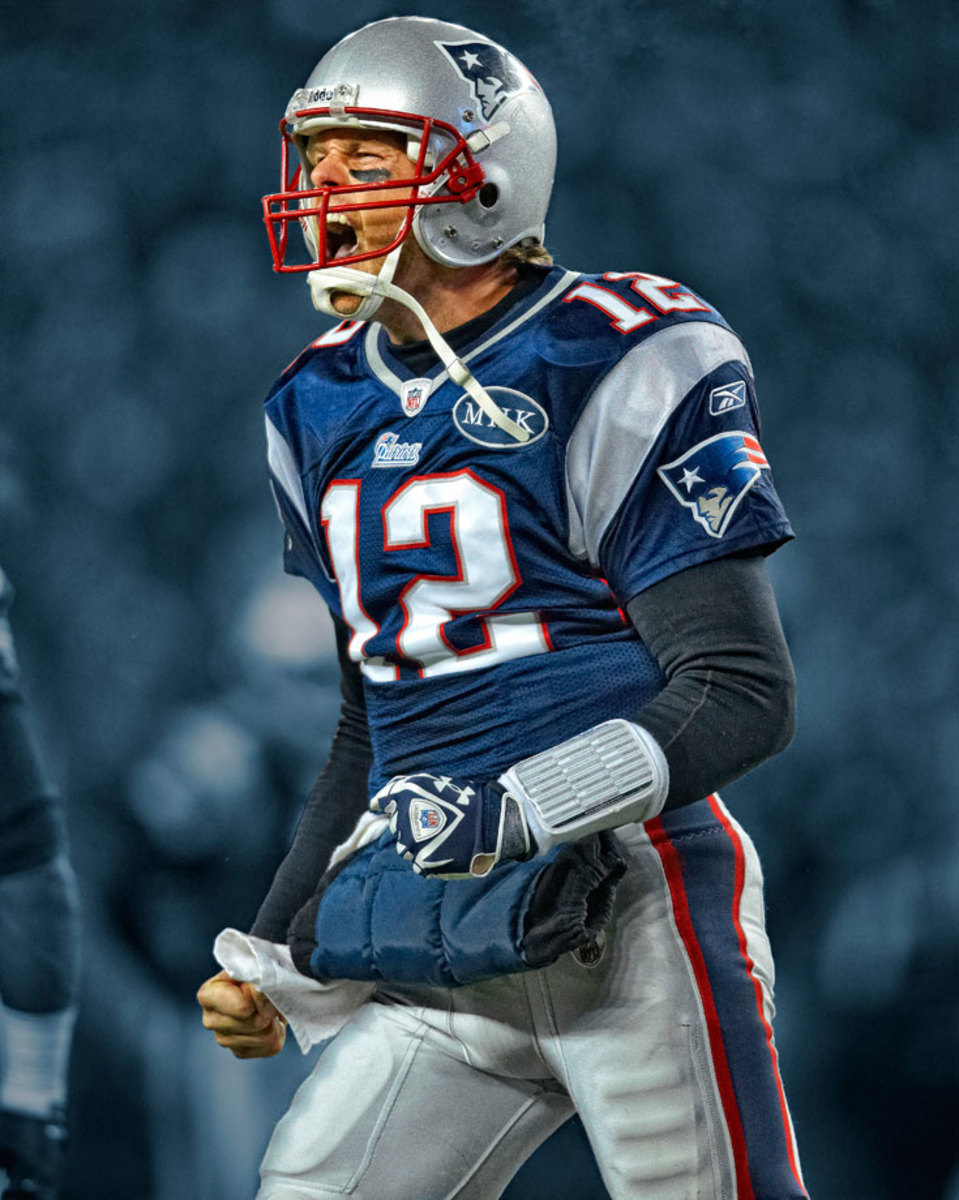
This is the number to wear if you're a quarterback. There's Brady, Terry Bradshaw, Roger Staubach, Jim Kelly, Joe Namath, Bob Griese and Aaron Rodgers, among others. It's tough to pick against Brady, now a four-time Super Bowl winner and arguably the greatest quarterback ever.
13 — Dan Marino
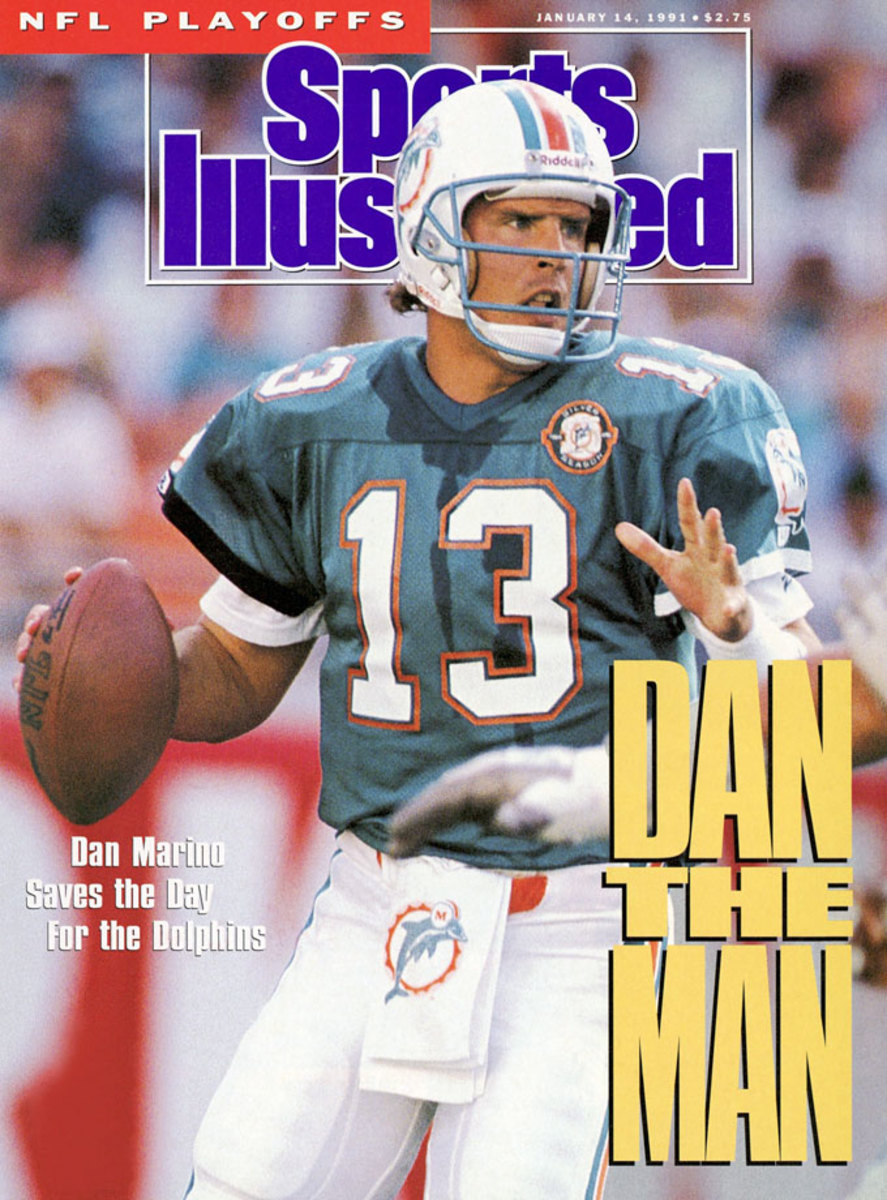
All due respect to Kurt Warner and Don Maynard (whose career mostly spanned the pre-Super Bowl era), Marino is a shoo-in selection: Rookie of the Year, Player of the Year, 61,000 career passing yards, nine-time Pro Bowler, etc. etc. The lack of a Super Bowl ring is his lone blemish.
14 — Dan Fouts
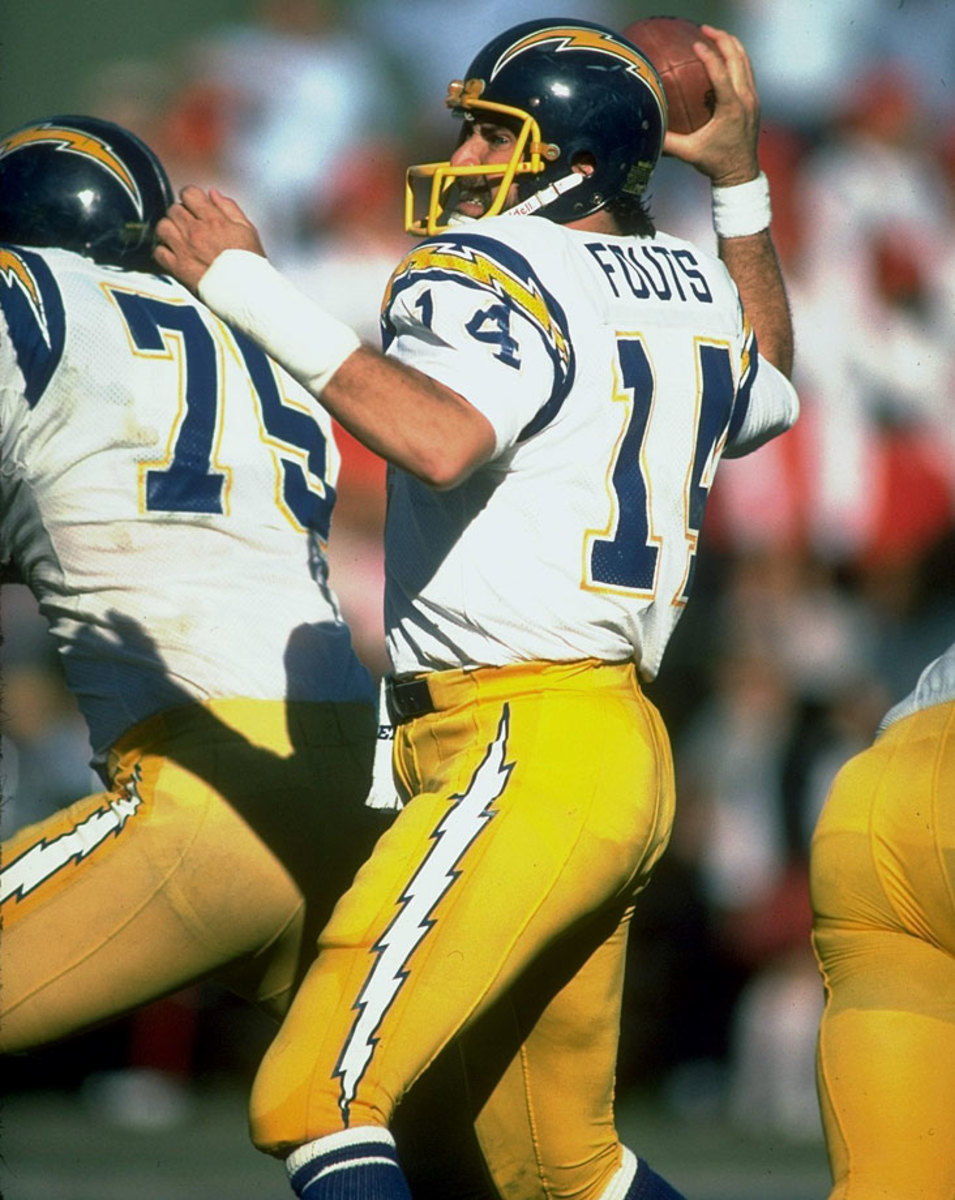
Sorry, Bengals fans (both Ken Anderson and Andy Dalton are No. 14s). Fouts is a Hall of Famer for a reason. He was a tremendous passer in a run-heavy era—Fouts still ranks top 15 in most major quarterback categories—and almost single-handedly changed the Chargers' fortunes.
15 — Bart Starr
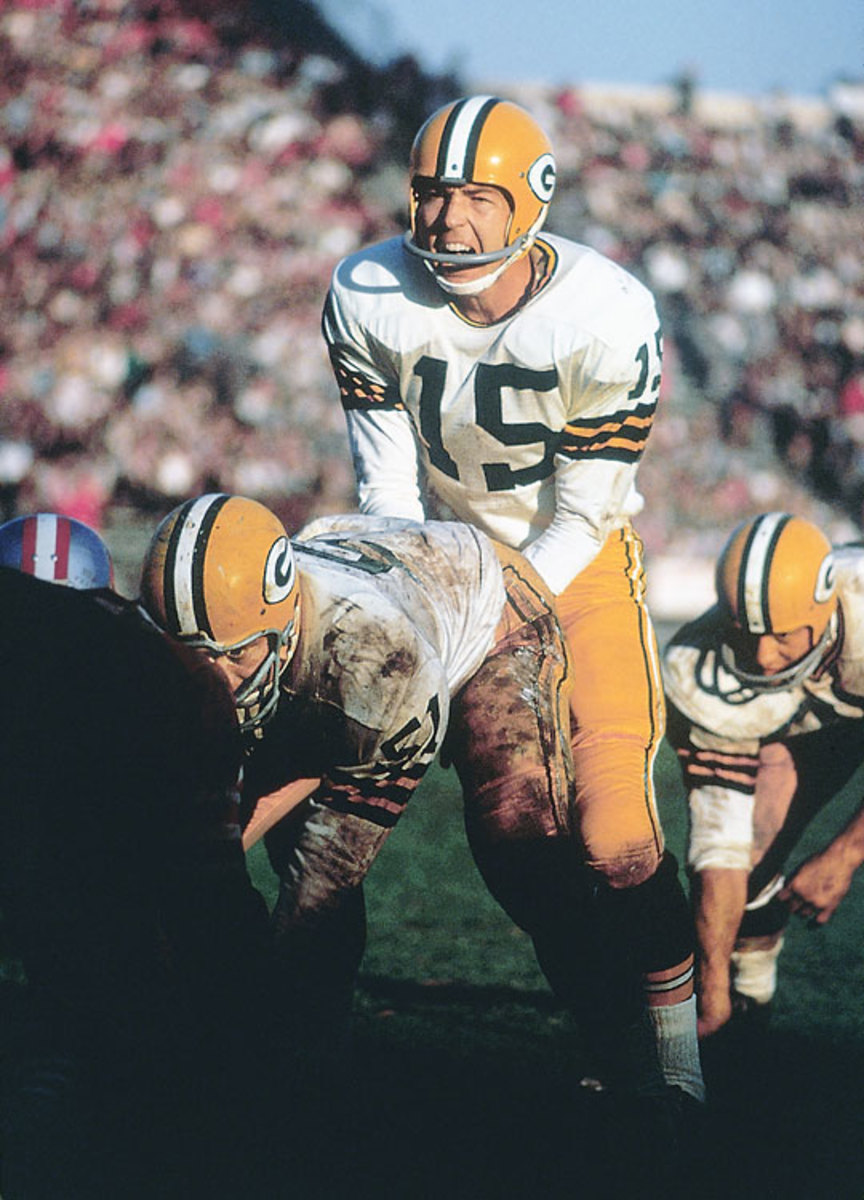
The Super Bowl era cutoff would have been more of an issue for Starr had he not won MVP honors at Super Bowls I and II, two Packers victories. Starr also quarterbacked Green Bay to the 1961, ’62 and ’65 championships. He was member of the 1977 Hall of Fame class.
16 — Joe Montana
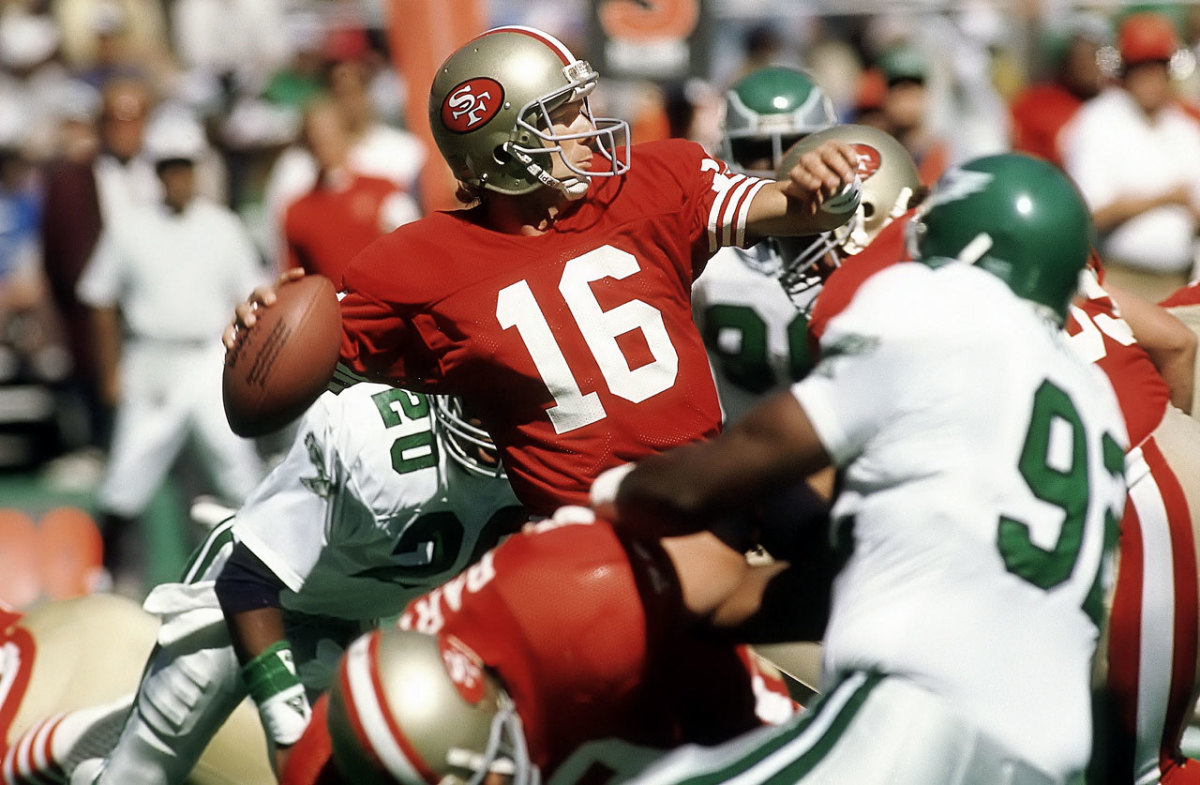
Still the choice for many when asked to pick football's greatest quarterback. Montana was as clutch as they get—he was named Super Bowl MVP in three of the 49ers' four title wins under his leadership. The Hall of Fame added Montana in 2000.
17 — Philip Rivers
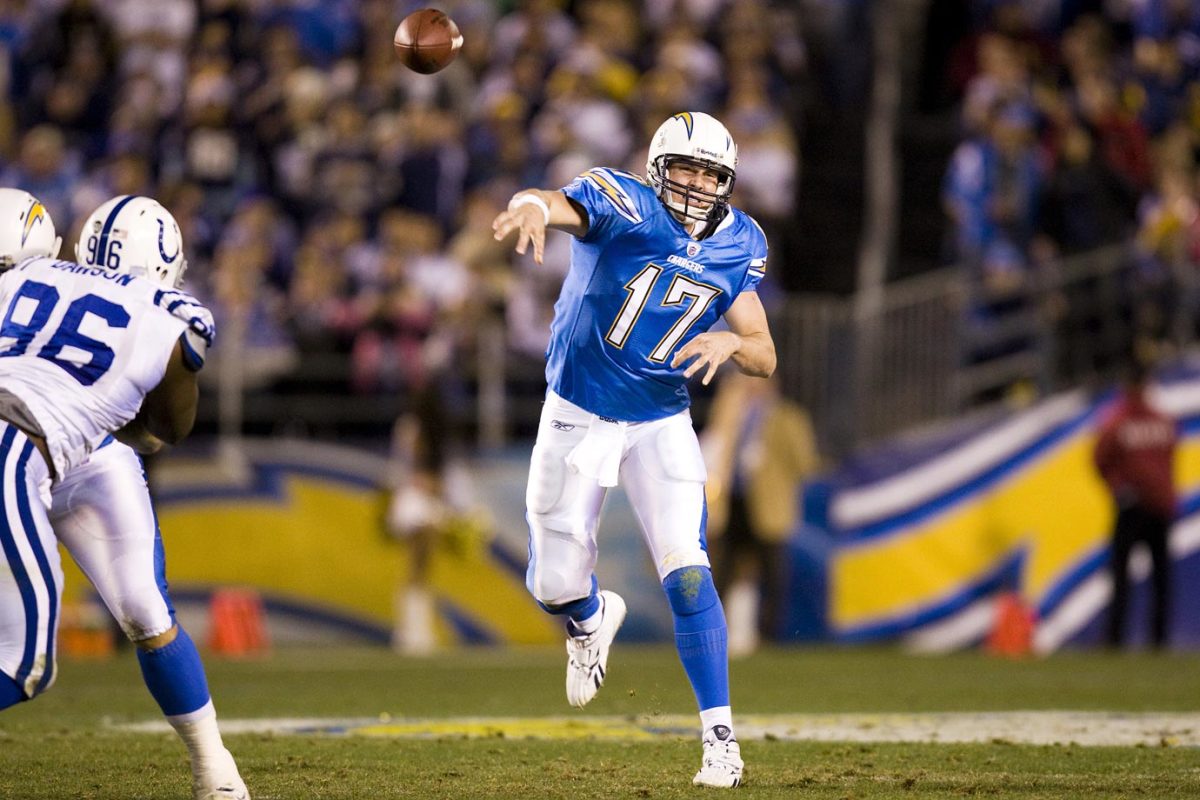
Rivers can bring out some heated opinions, but truth be told he already has decent Hall of Fame credentials (nearly 37,000 yards passing and 252 touchdowns), possibly with several seasons left in his career. Other options at No. 17: WR Harold Carmichael and DB Richie Petitbon.
18 — Peyton Manning
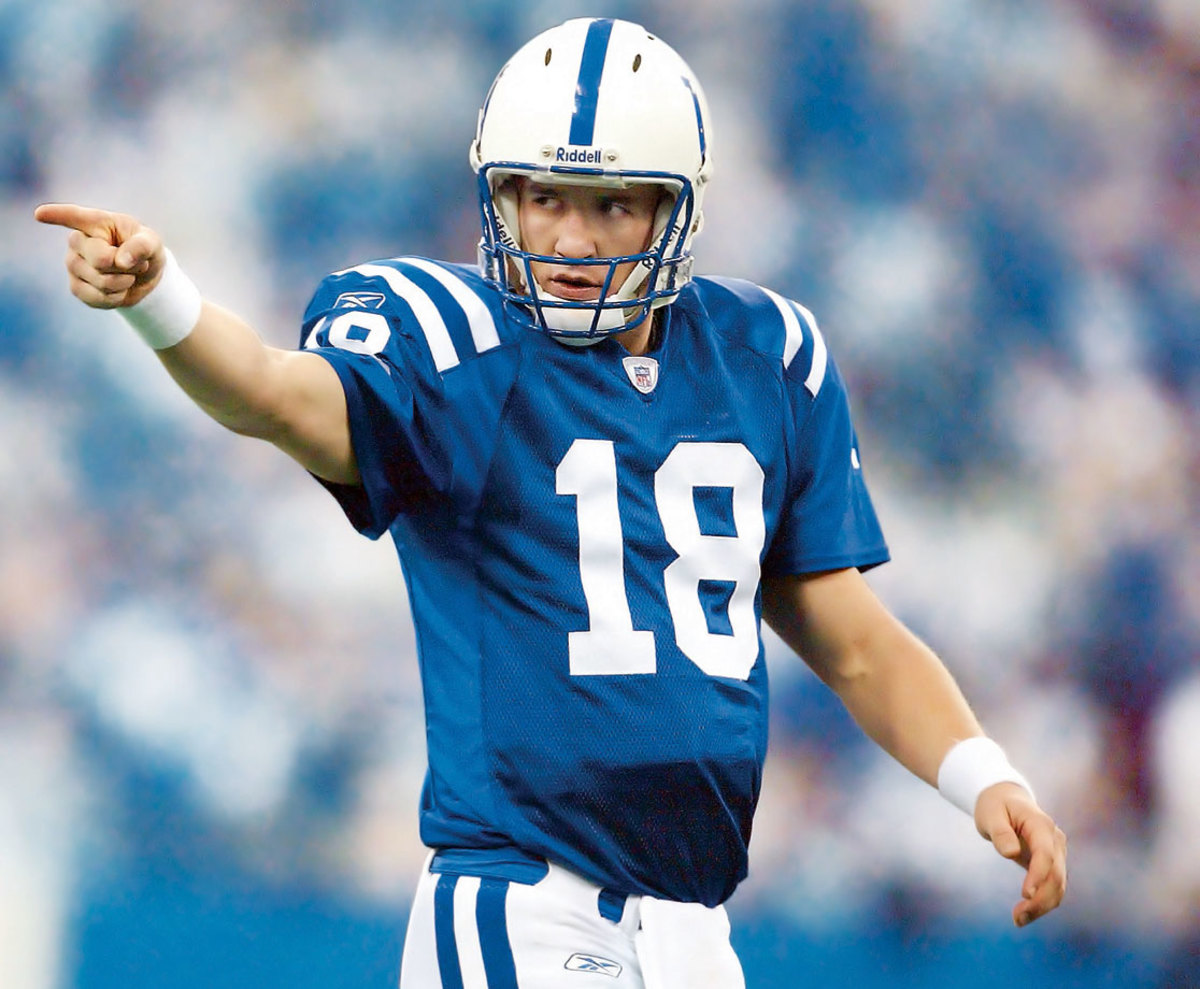
Surely, everyone is aware of Manning's credentials by now. When he retires (after this coming season?) the legendary quarterback likely will hold every major NFL passing record. He needs just 2,147 yards to pass Favre for first place as the league's all-time leading passer.
19 — Johnny Unitas
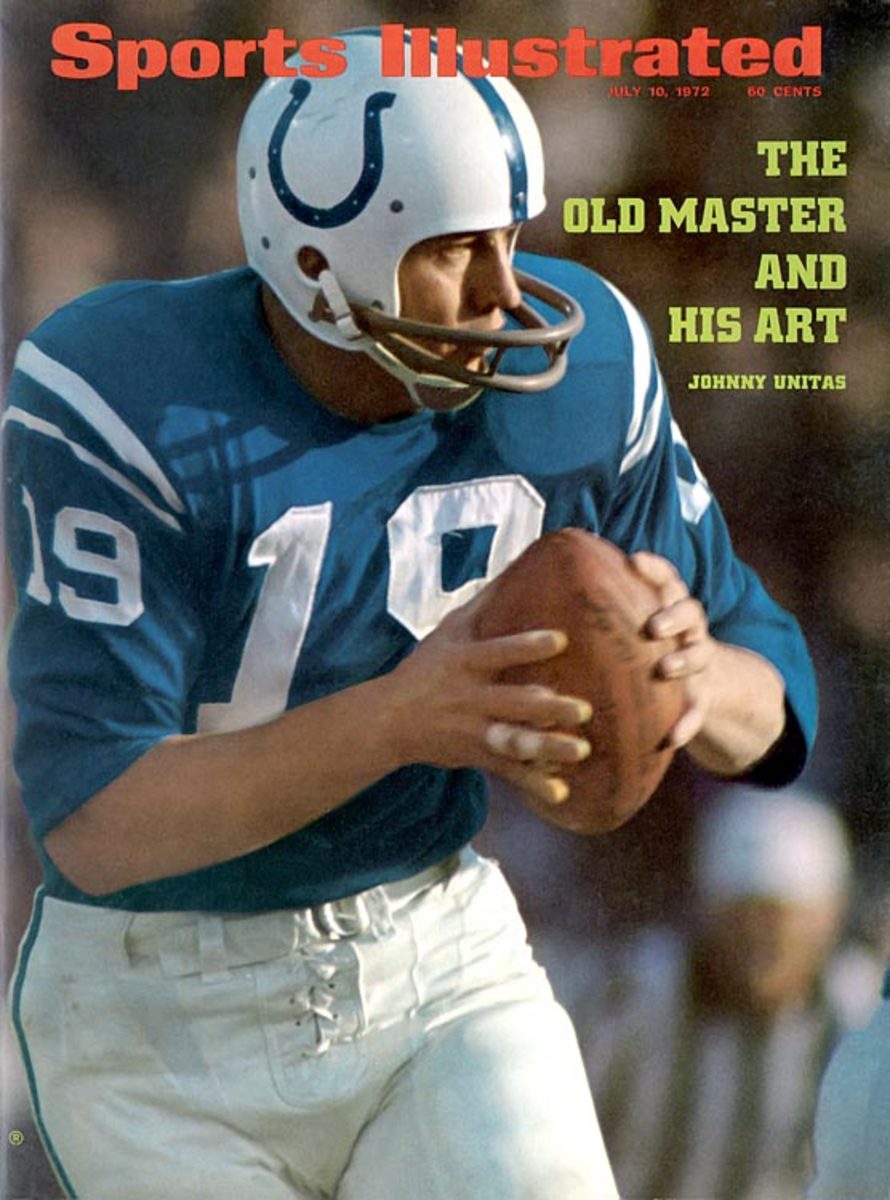
Tightroping the Super Bowl-era line here—Unitas's greatest years came before the Super Bowl's inception for the 1966 season, and he played just four seasons following the 1970 AFL-NFL merger. Unitas, a 1979 Hall inductee, was a transcendent talent nonetheless.
20 — Barry Sanders
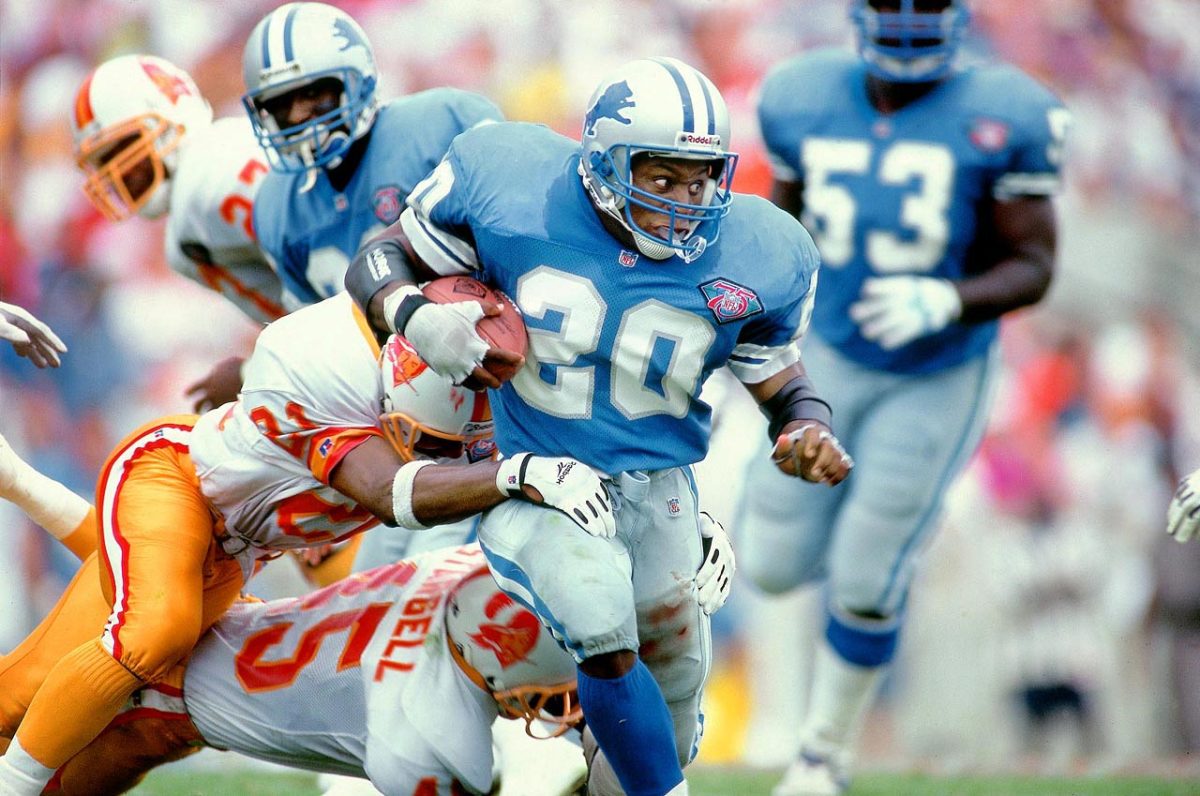
Was any player in NFL history more fun to watch? Often without much help from his teammates, Sanders jitterbugged his way to 15,000 career rushing yards. A special honorable mention for the DBs here—Ed Reed, Ronde Barber, Brian Dawkins and Lem Barney all wore No. 20.
21 — Deion Sanders
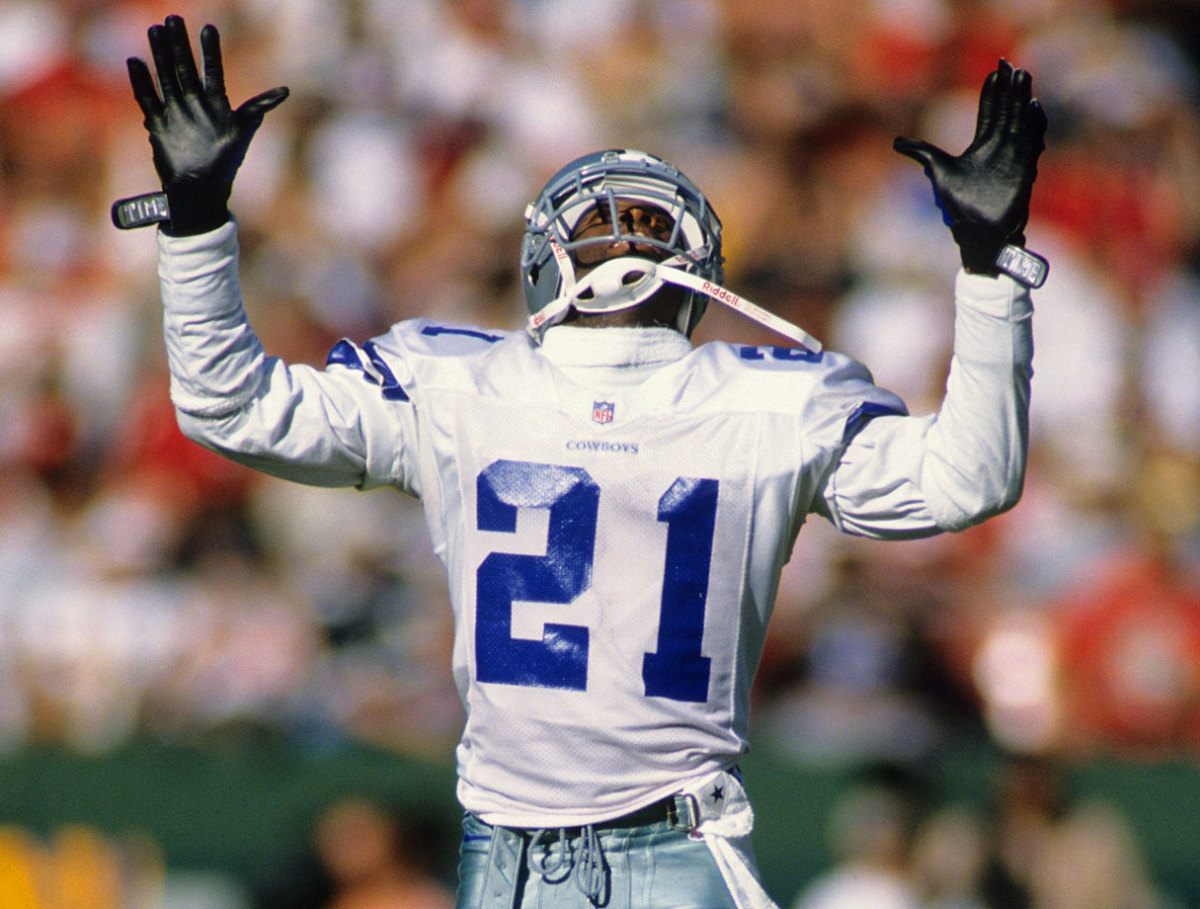
An argument can be made for LaDainian Tomlinson, a dominant RB for years and a likely 2017 Hall of Famer. Sanders, though, might be the NFL's greatest cover corner, and he previously held a record with 19 career return touchdowns.
22 — Emmitt Smith
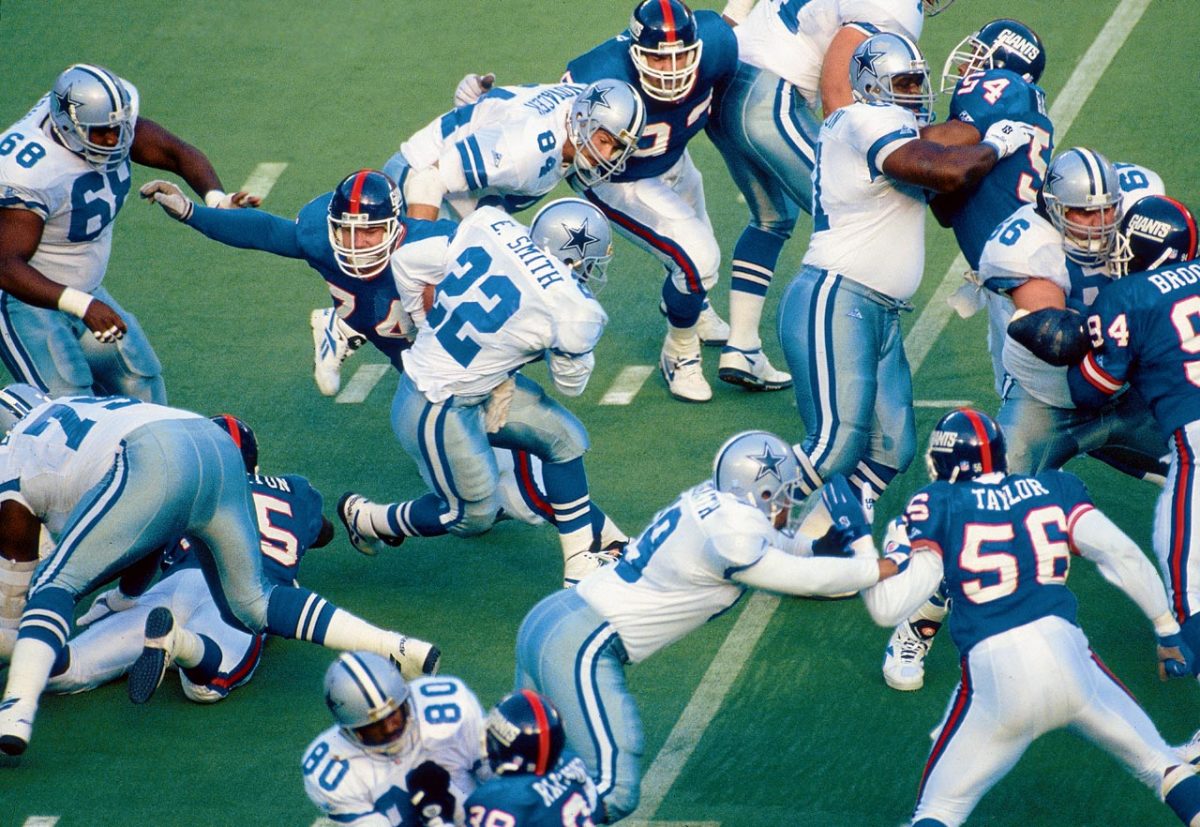
Frank Gore needs another 7,000 yards or so. Adrian Peterson is still 8,000 away. In other words, Smith's all-time rushing record of 18,355 yards is safe for the foreseeable future. Smith, a 2010 Hall of Famer, rushed for at least 1,000 yards in 11 different seasons.
23 — Devin Hester
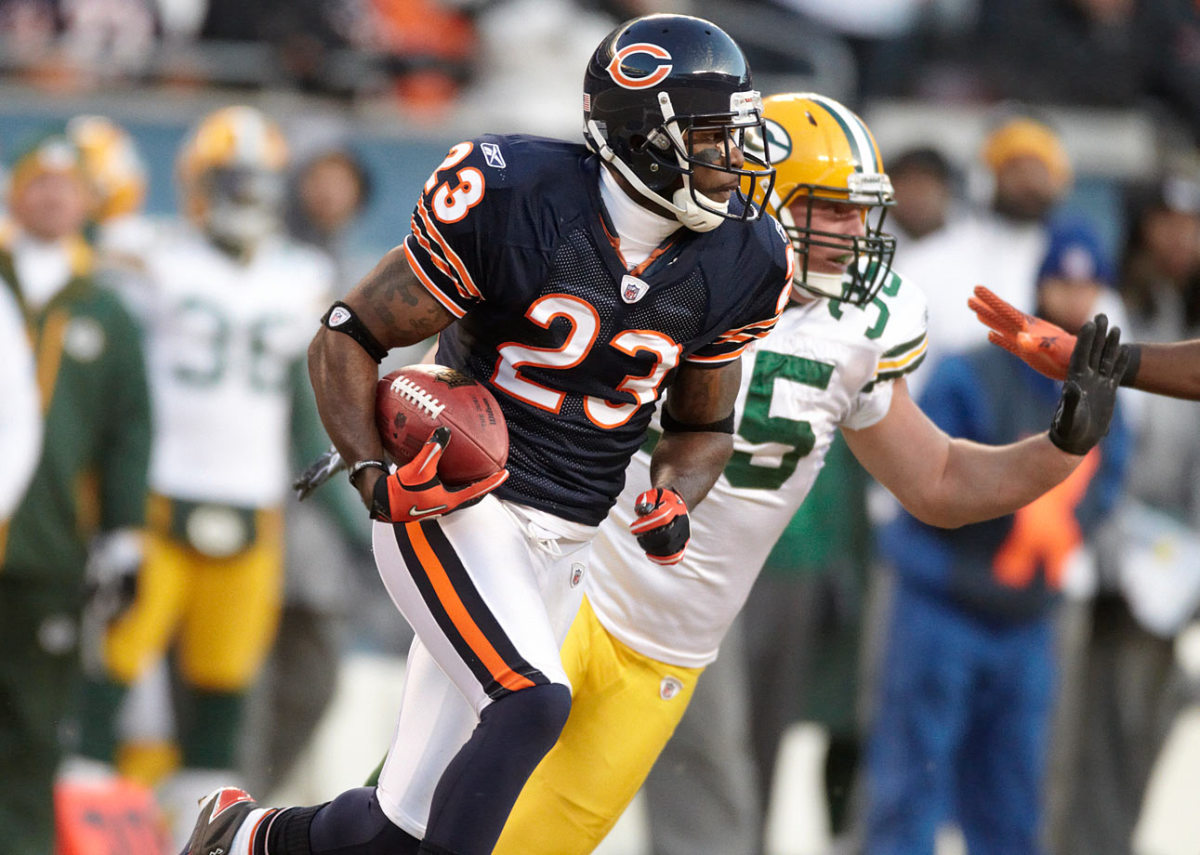
While Hester does have 255 career catches, he tops the No. 23 group because of his prowess as a return man. Last season's 62-yarder against Tampa Bay was his record 20th return touchdown. He's a spectacular game-changer.
24 — Champ Bailey
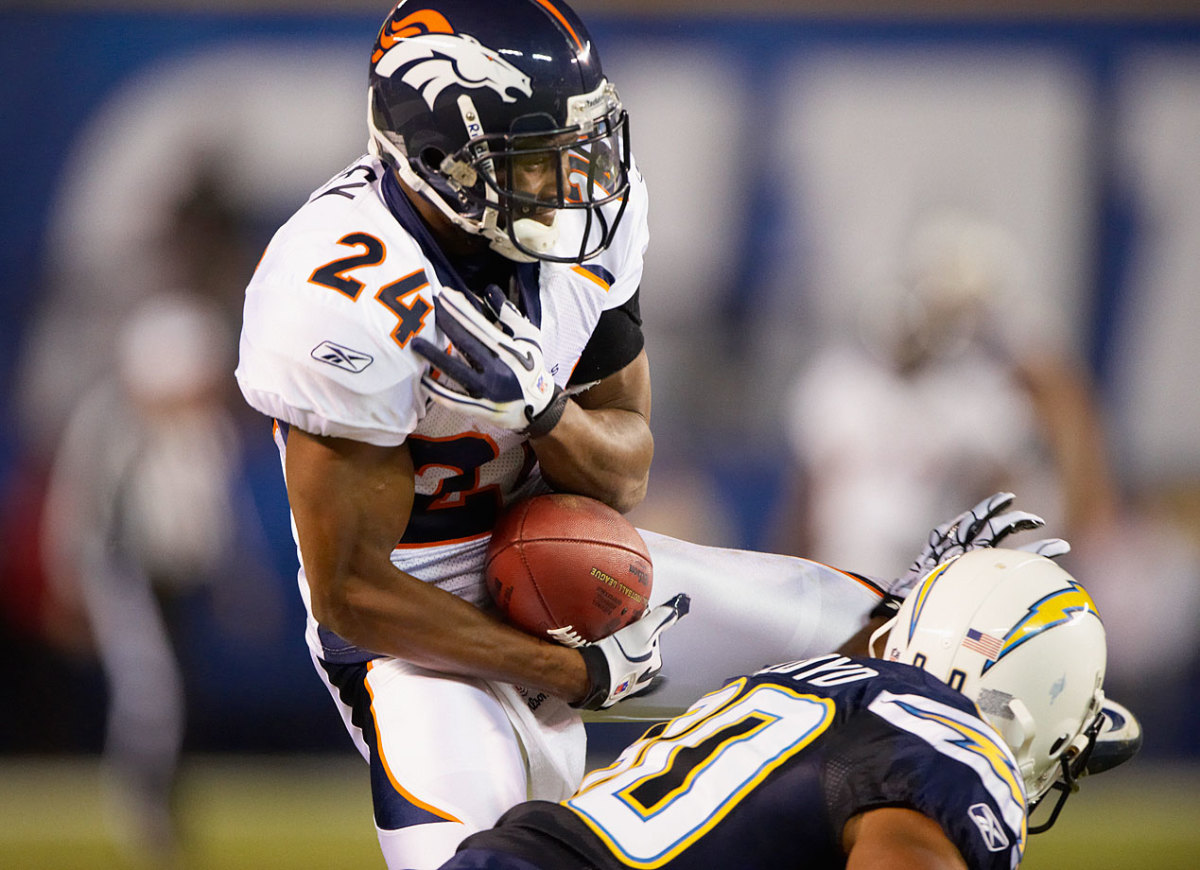
There are a handful of Hall of Famers who wore No. 24—Willie Brown, Willie Wood, Lenny Moore. A 12-time Pro Bowler, Bailey will join them eventually, though he's not eligible until 2019. His 10-interception season in 2006 was downright stunning.
25 — Fred Biletnikoff
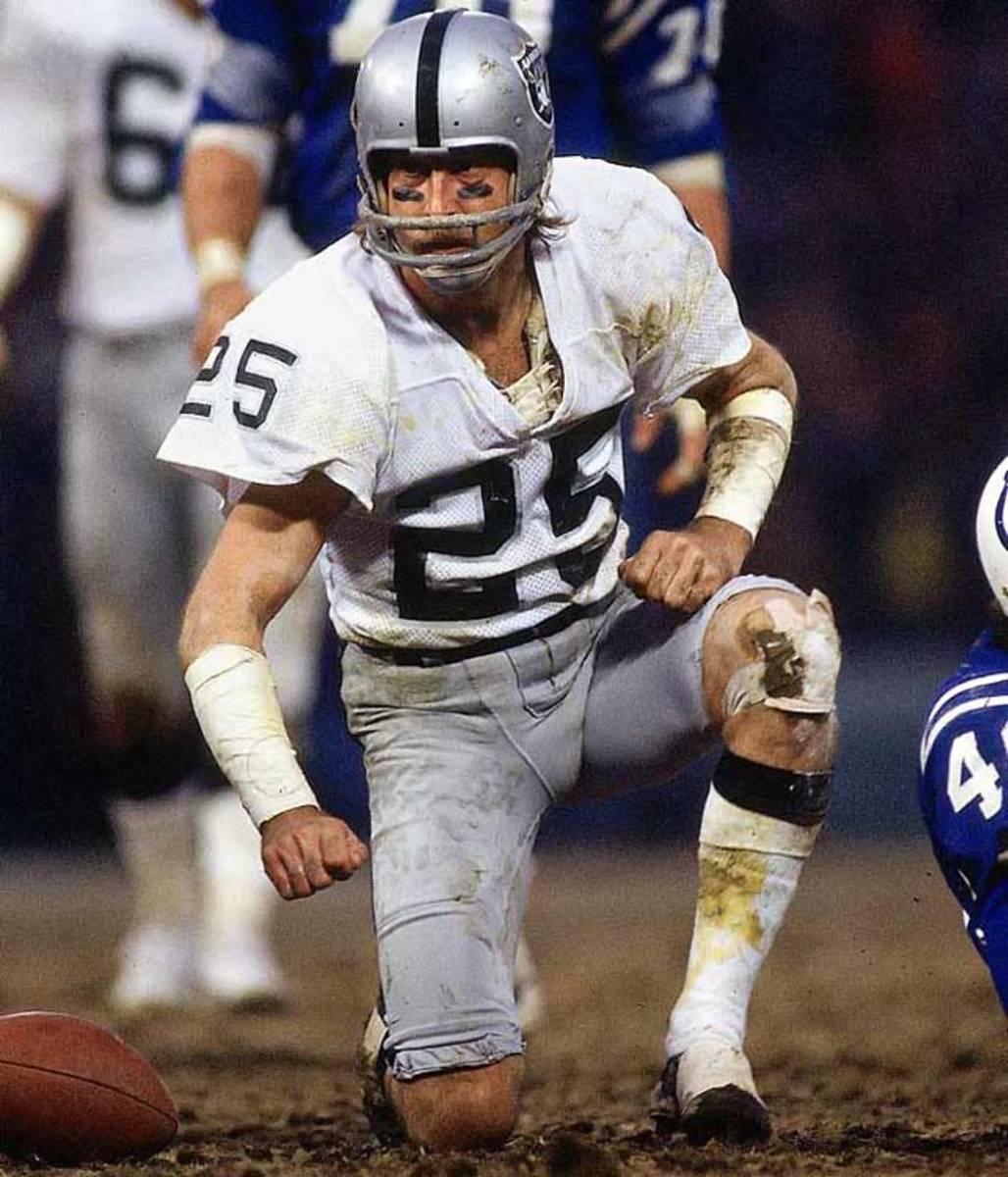
Biletnikoff played two more seasons after the Raiders' Super Bowl XI win, but his MVP performance in that game was the true culmination of a special career. En route to a 1988 Hall induction, the Raiders legend caught 589 passes and scored 76 times.
26 — Rod Woodson
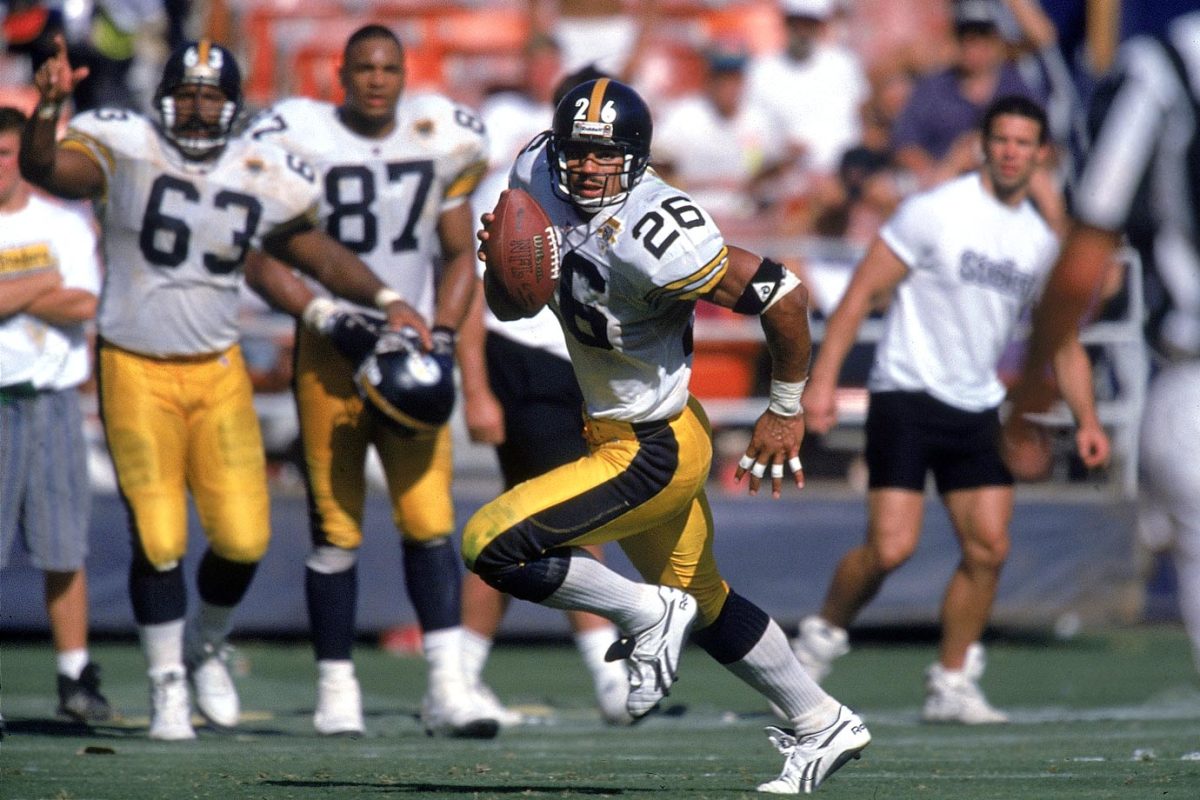
Woodson intercepted 38 passes during his 10 seasons in Pittsburgh. Later, he led the league in picks with the Ravens (seven in 1999) and did it again, at age 37, as a Raider (eight in 2002). He earned a 2009 call to the Hall of Fame.
27 — Steve Atwater
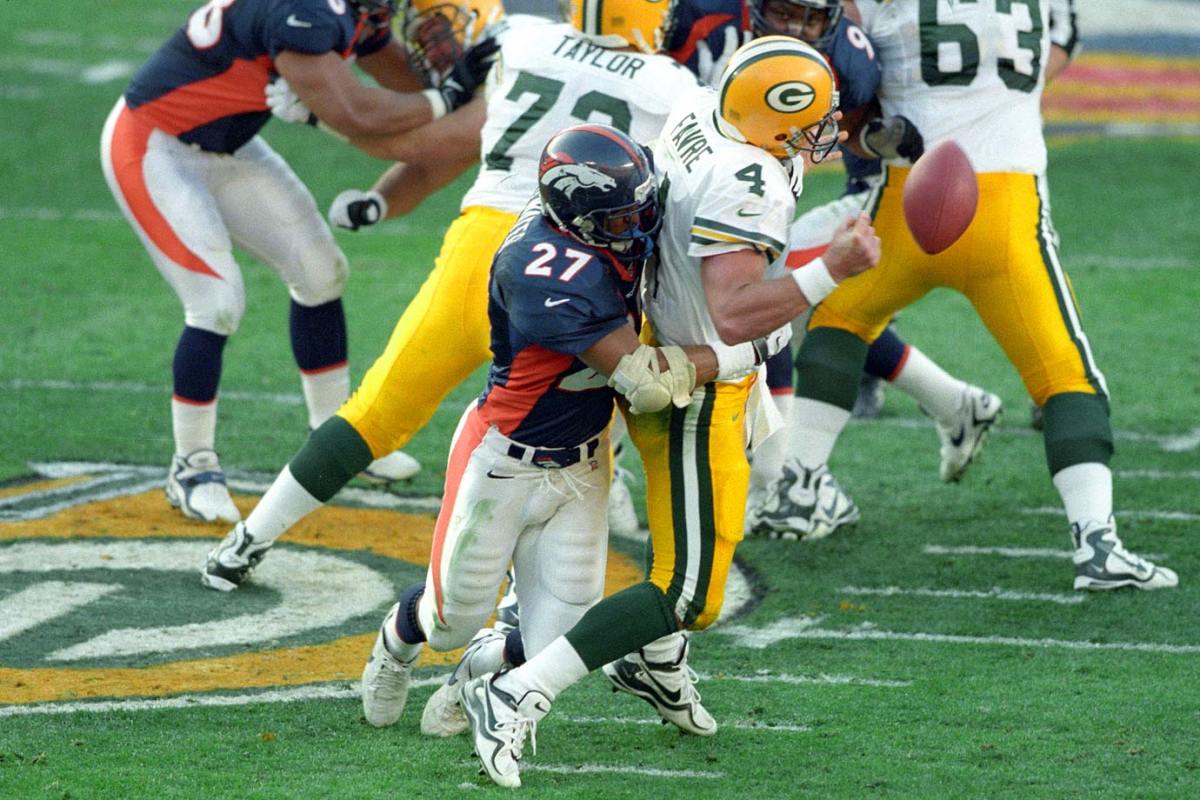
Atwater has been a Hall of Fame semifinalist on multiple occasions without breaking through. Does he deserve more credit? The hard-hitting safety helped anchor Denver's defense for a decade and landed on the Hall's All-1990s team. Also sporting No. 27: 10,000-yard back Eddie George.
28 — Marshall Faulk
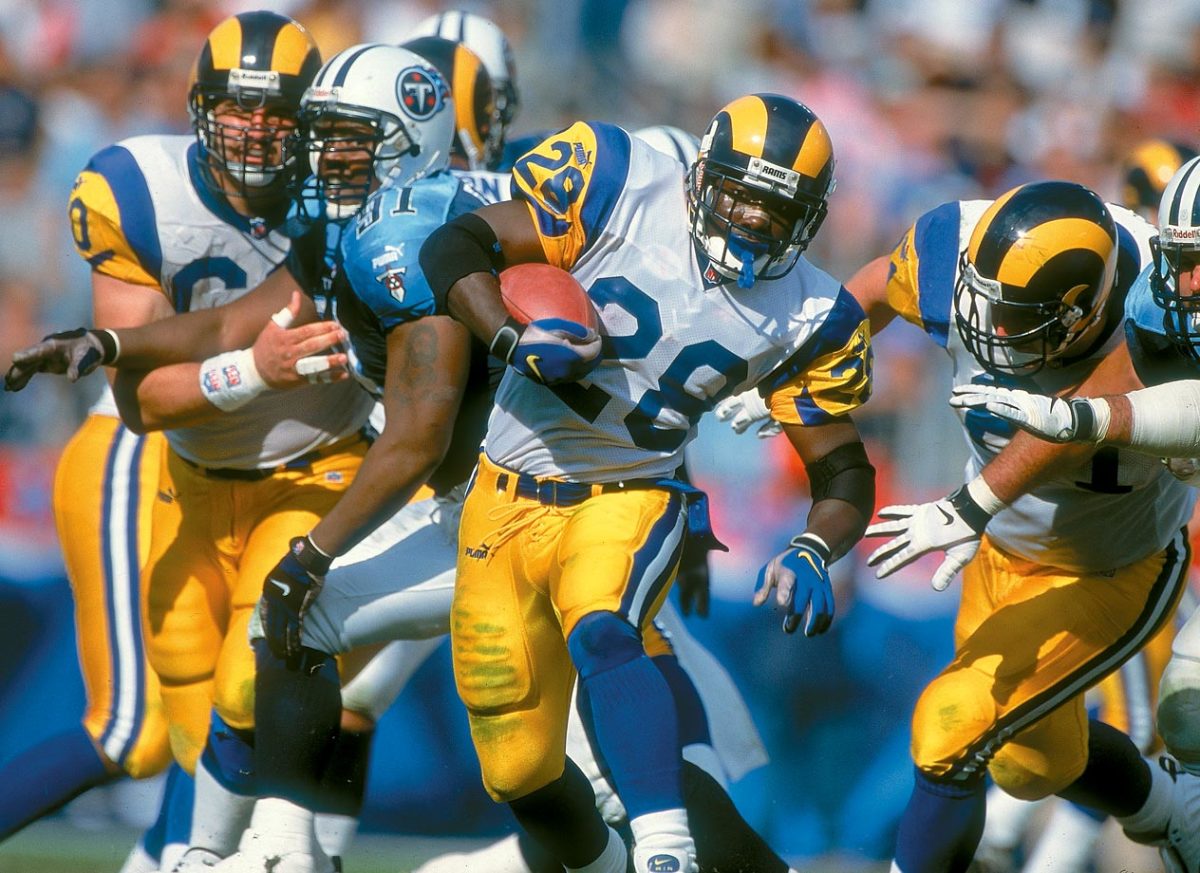
Another number that can boast some gems, including Hall of Famers Curtis Martin and Yale Lary. But this one boils down to Faulk vs. Darrell Green. Faulk's numbers are plain silly: from 1998-2001, spanning two teams, he averaged 2,248 yards from scrimmage and 17.3 TDs. His 2,429 yards in 1999 stood as the league record until Chris Johnson topped him a decade later.
29 — Eric Dickerson
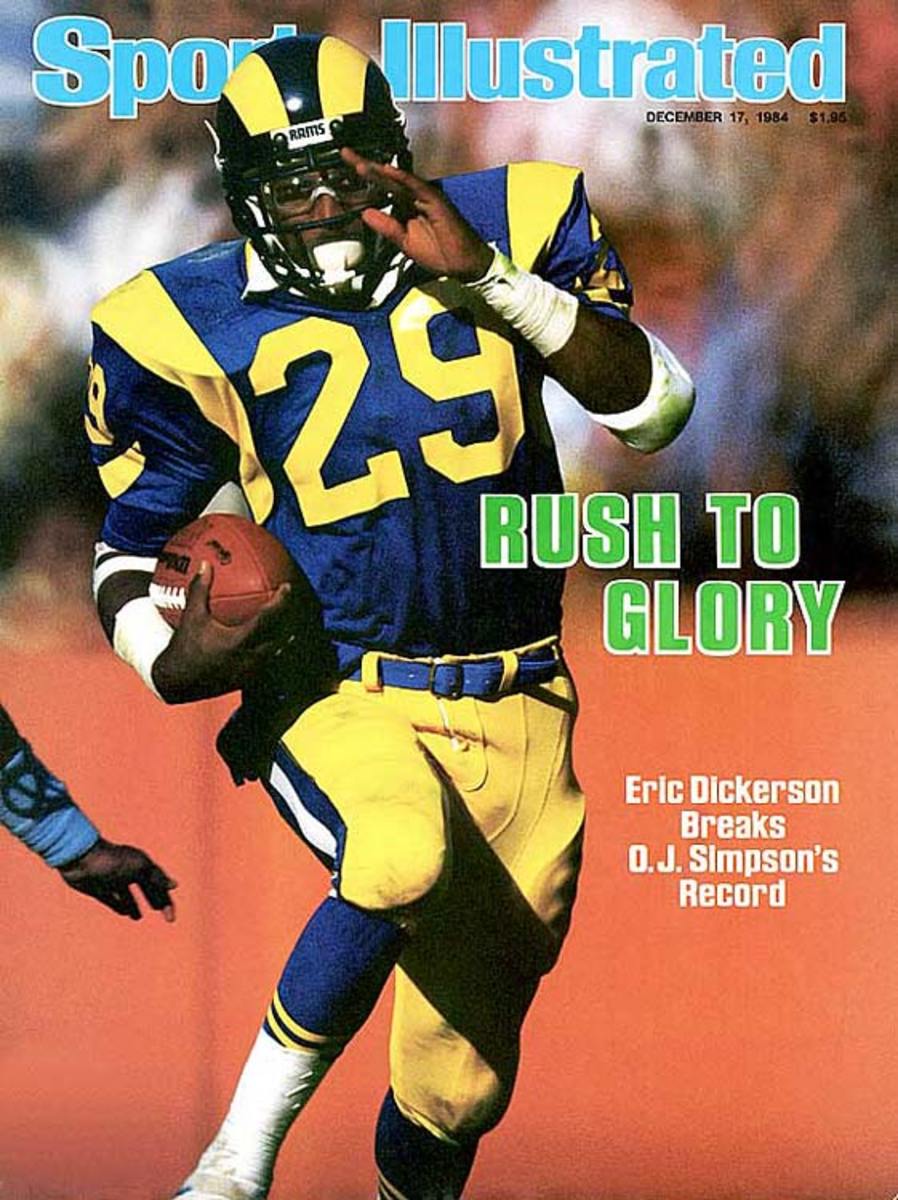
Dickerson still sits top 10 in career rushing yards, with 13,259—a staggering 3,913 of those coming during his first two NFL seasons. The 2,105 yards he posted as a second-year player still stands as the single-season benchmark. Dickerson was voted into the Hall of Fame in 1999.
30 — Terrell Davis
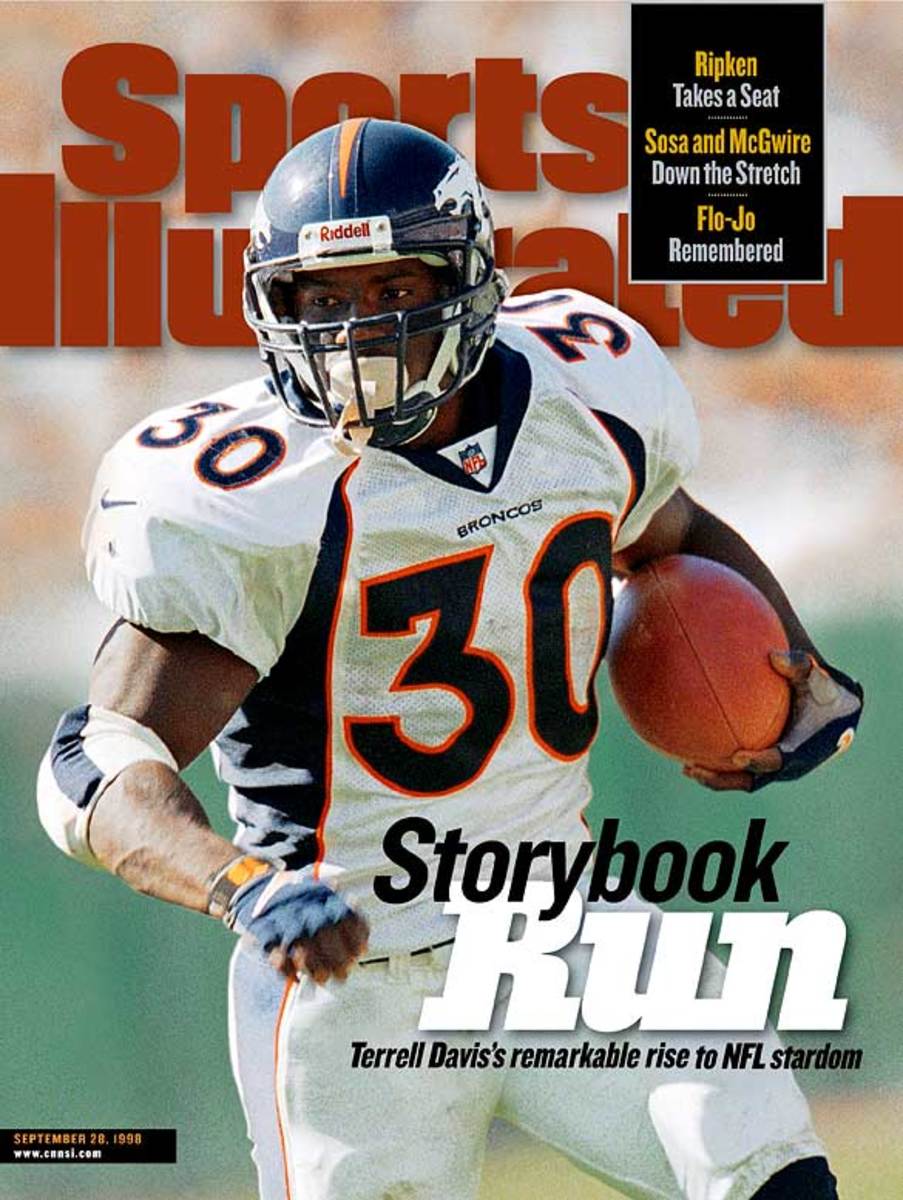
How much does longevity count toward an NFL player's legacy? Davis' career essentially was limited to four seasons (1995-98); a 1999 knee injury robbed him of much beyond that time. He still managed to win two Offensive Player of the Year awards, a league MVP (2,008 yards and 21 TDs in 1998), a Super Bowl MVP and two championships.
31 — Donnie Shell
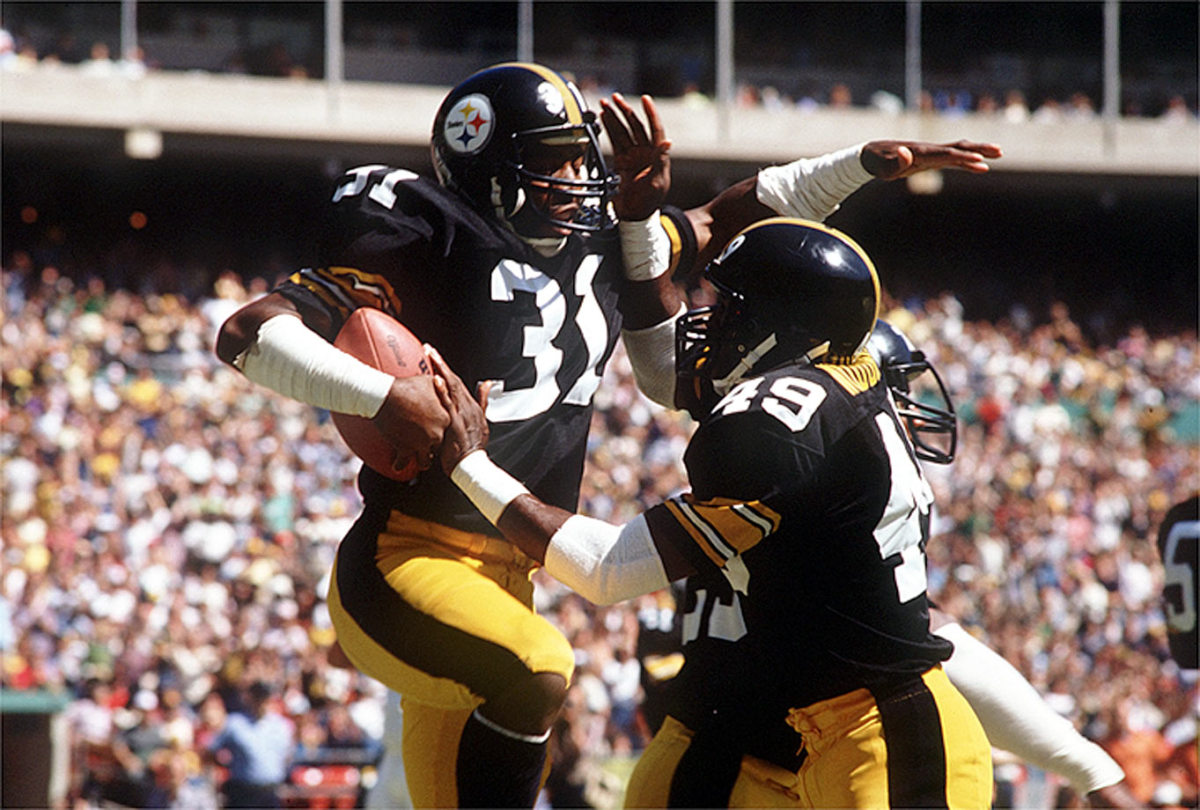
Despite rushing for 10,000 career yards, Jamal Lewis, another No. 31, is not bound for Canton. Shell—a 2002 finalist—does not seem likely to get there either, even with a stronger Hall résumé. As a starter beginning in the second half of Pittsburgh's 1970s dynasty, Shell was the type of rangy, box safety teams still covet.
32 — Marcus Allen
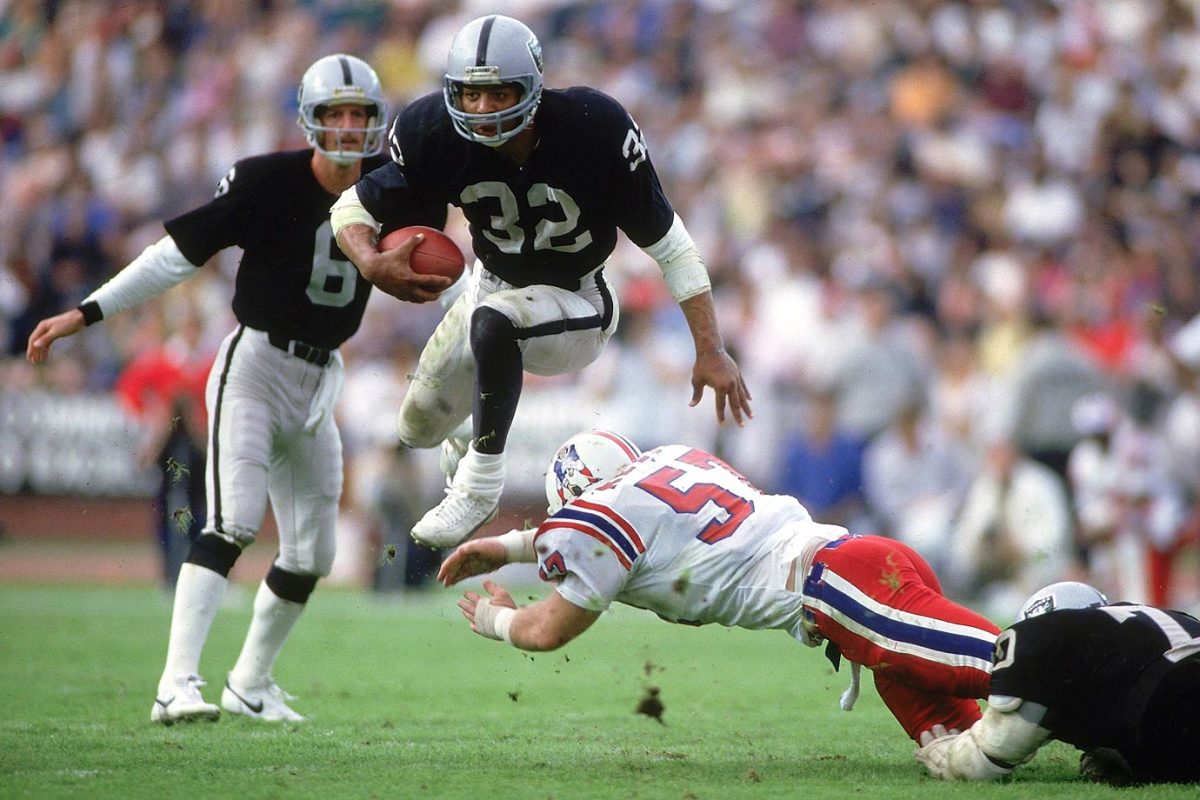
The final season of Jim Brown's career (1965) coincided was the last without a Super Bowl, so while deserving he cannot be considered. Allen would be in the mix even if Brown was eligible. The versatile 2003 Hall of Famer accounted for 17,654 yards from scrimmage and 144 touchdowns. He narrowly edges out fellow Hall member O.J. Simpson.
33 — Tony Dorsett
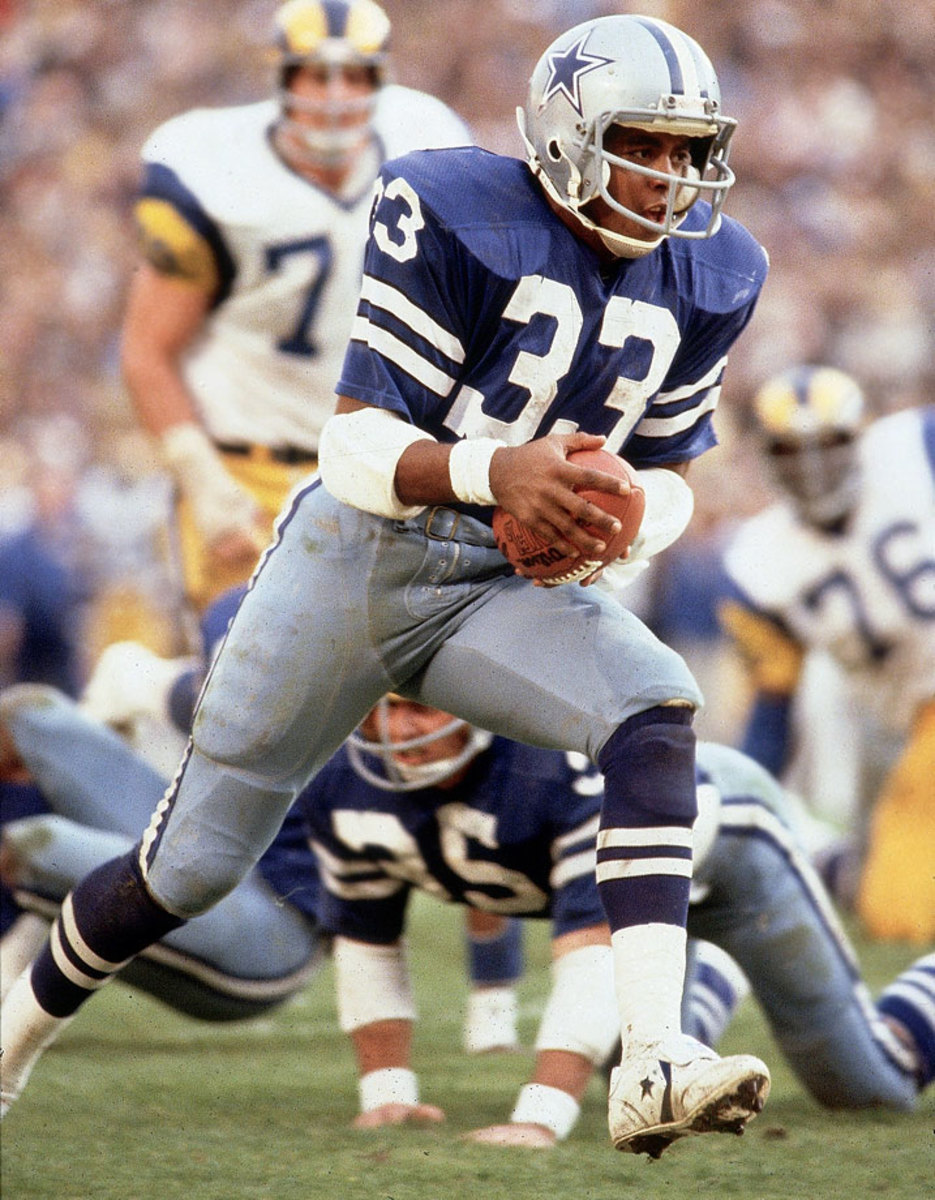
Dorsett took home the Rookie of the Year in 1977 and maintained that excellence for nine-plus years before Father Time caught up to him. All told, the 1994 Hall inductee rushed for 90 touchdowns and nearly 13,000 yards in the regular season, plus another 1,383 yards and 10 scores in the playoffs.
34 — Walter Payton
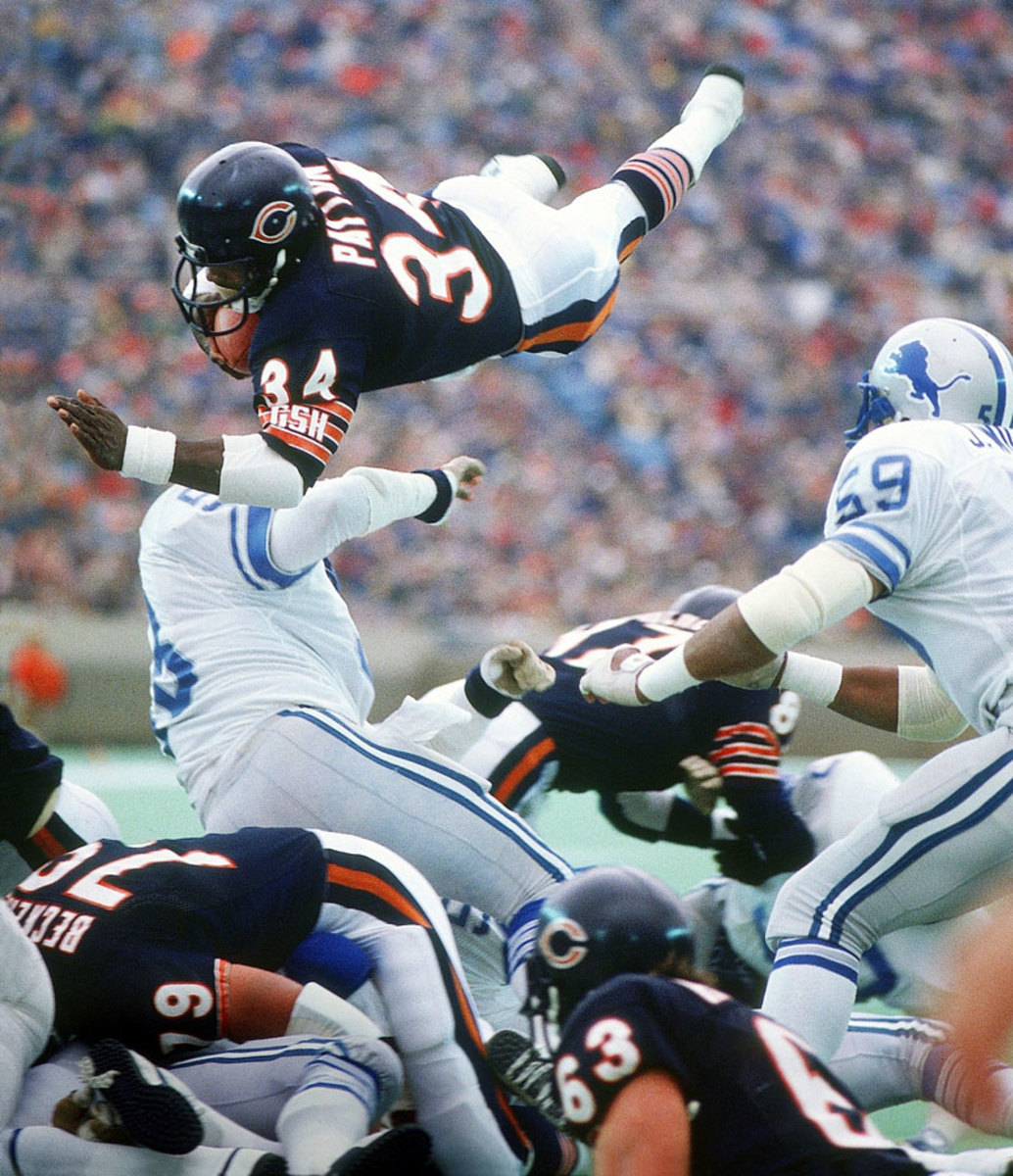
Payton, Thurman Thomas, Earl Campbell and Herschel Walker—all wearers of No. 34—combined for more than 46,000 yards rushing. Payton churned out 16,726 himself, along with another 4,500 receiving and 125 touchdowns. He is one of football's greatest players ever, period.
35 — Aeneas Williams
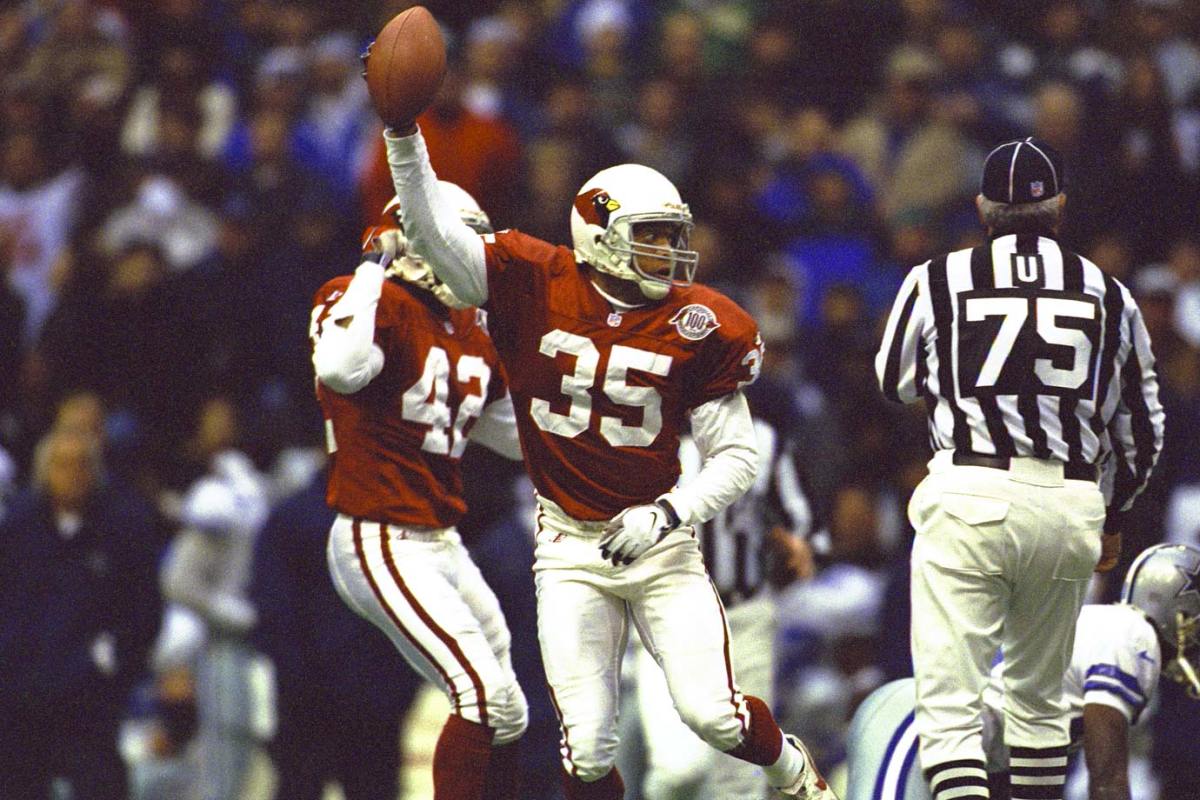
Williams defined the term ‘ballhawk’—he intercepted 55 passes and recovered 23 fumbles during his Hall of Fame career. He led the league with nine interceptions in 1994, the first of his eight Pro Bowl years.
36 — Jerome Bettis
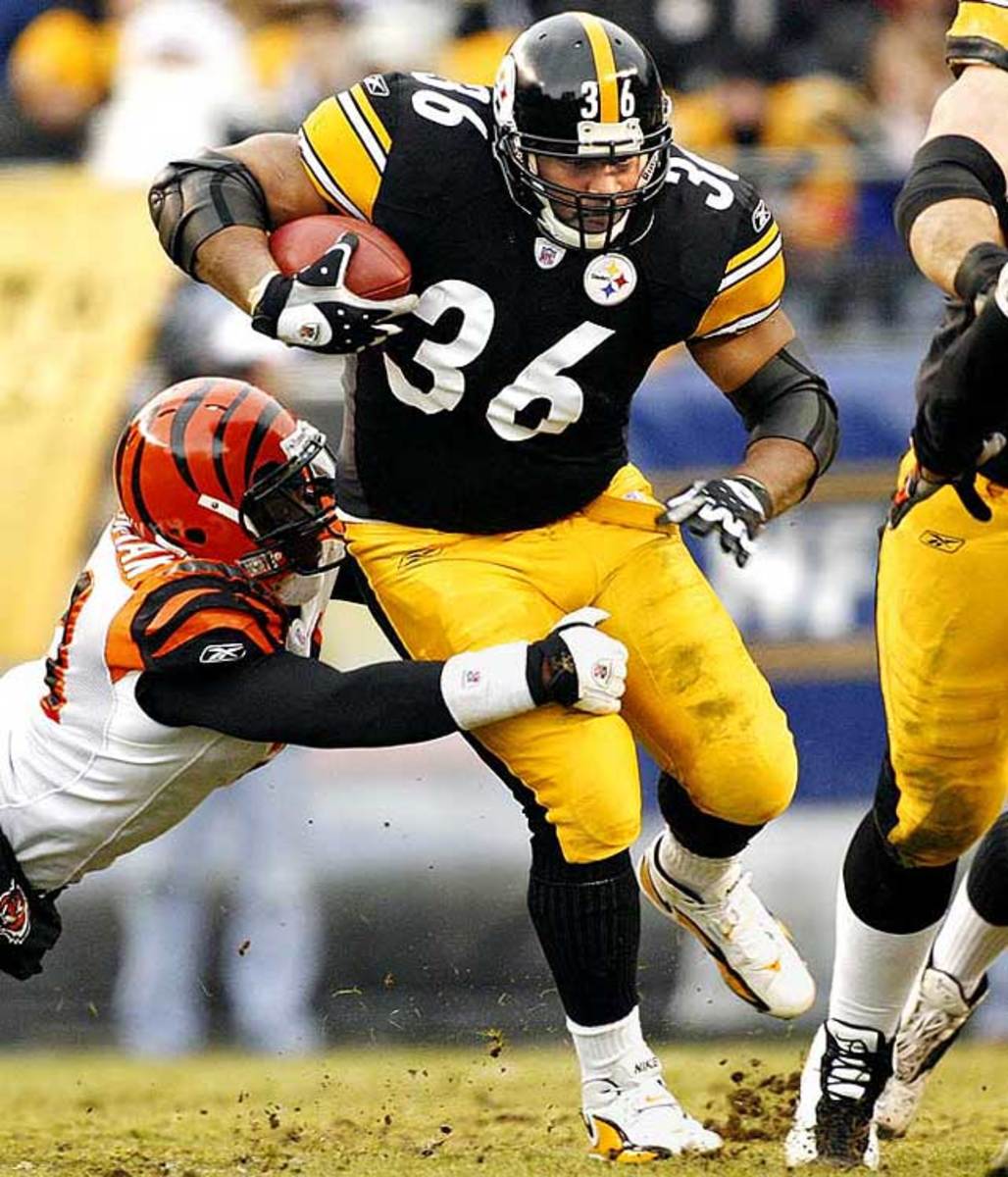
Never a highlight-reel back like Sanders, Dickerson or Payton, Bettis instead bulldozed his way to 13,662 career yards rushing. A 1996 move from St. Louis to Pittsburgh revitalized his career and helped him win Comeback Player of the Year. His long Hall wait ended in 2014 after four near-misses as a finalist.
37 — Jimmy Johnson
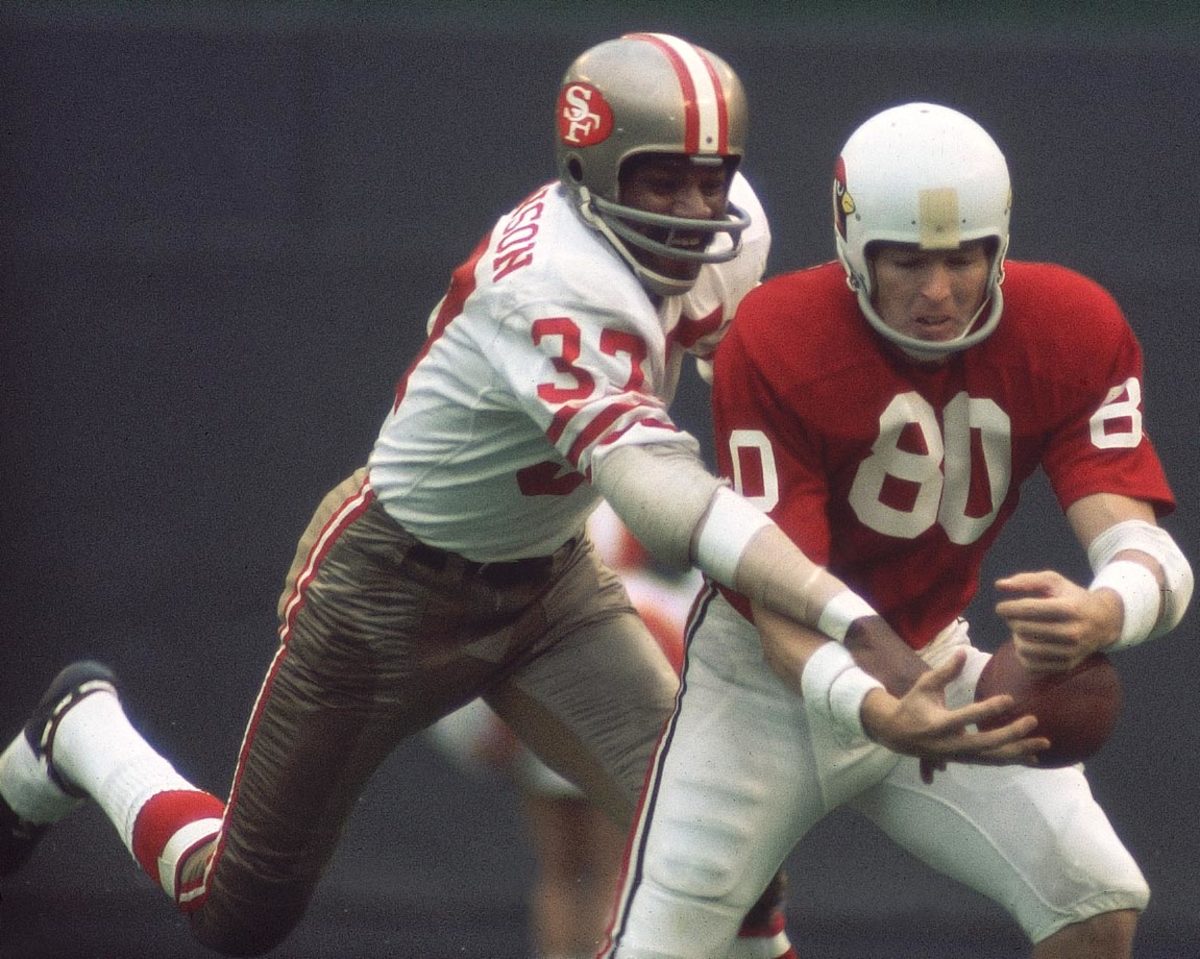
Think of Johnson as the Richard Sherman of his era—quarterbacks preferred to avoid him rather than test him. Johnson made them pay when passes headed his direction, too, picking off 47 passes for his career. Another contender for No. 37: Hall of Fame contender Rodney Harrison.
38 — Bob Tucker
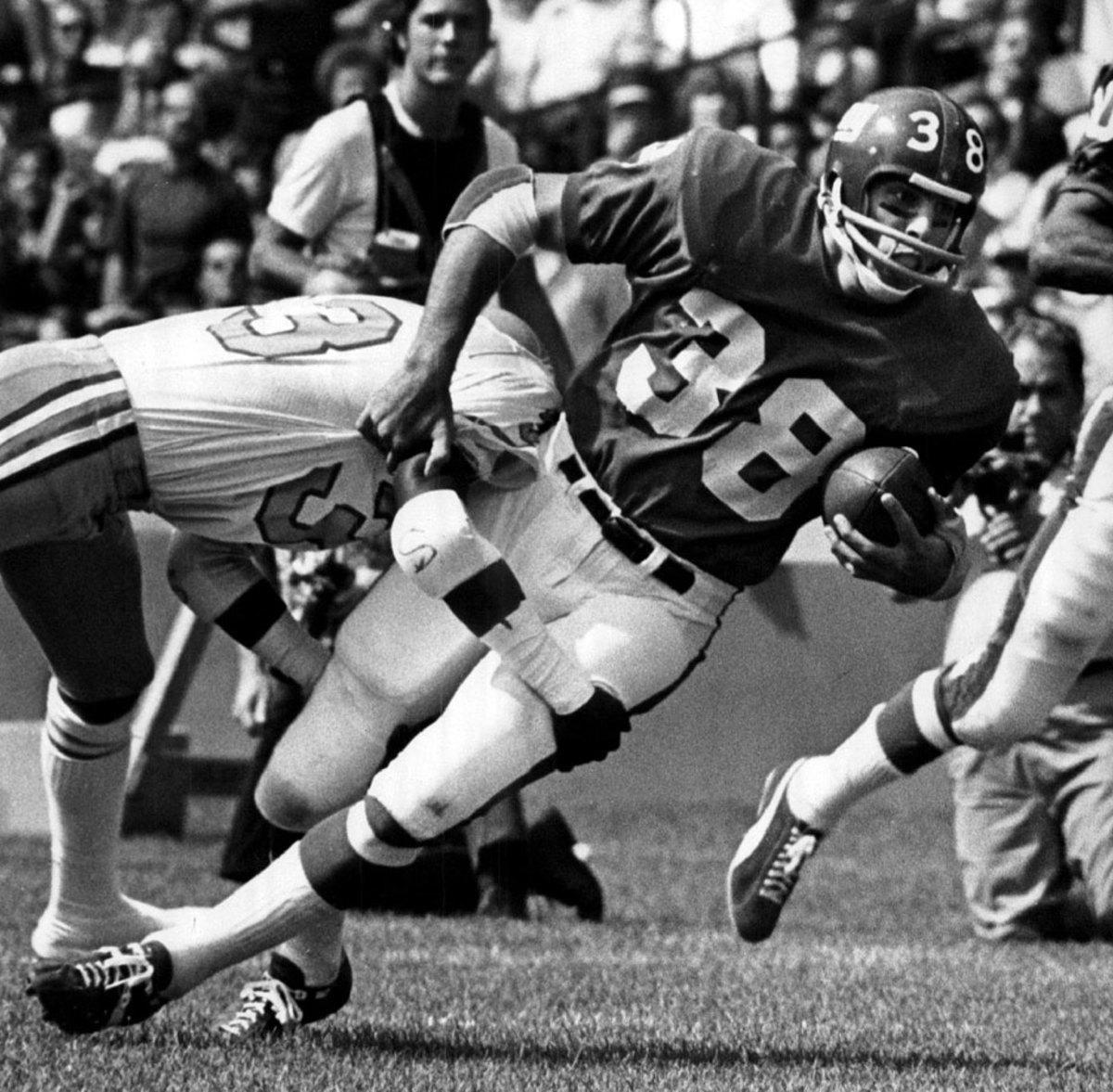
A bit of a lull after so many numbers loaded with Hall of Fame histories. No. 38 features brief stars like Rookie of the Year honorees George Rogers (1981) and Mike Anderson (2000). Tucker, though, was a bit ahead of his time as a pass-catching tight end. Tucker amassed most of his 422 receptions on miserable Giants squads, topping out with an NFC-best 59 grabs in 1971.
39 — Larry Csonka
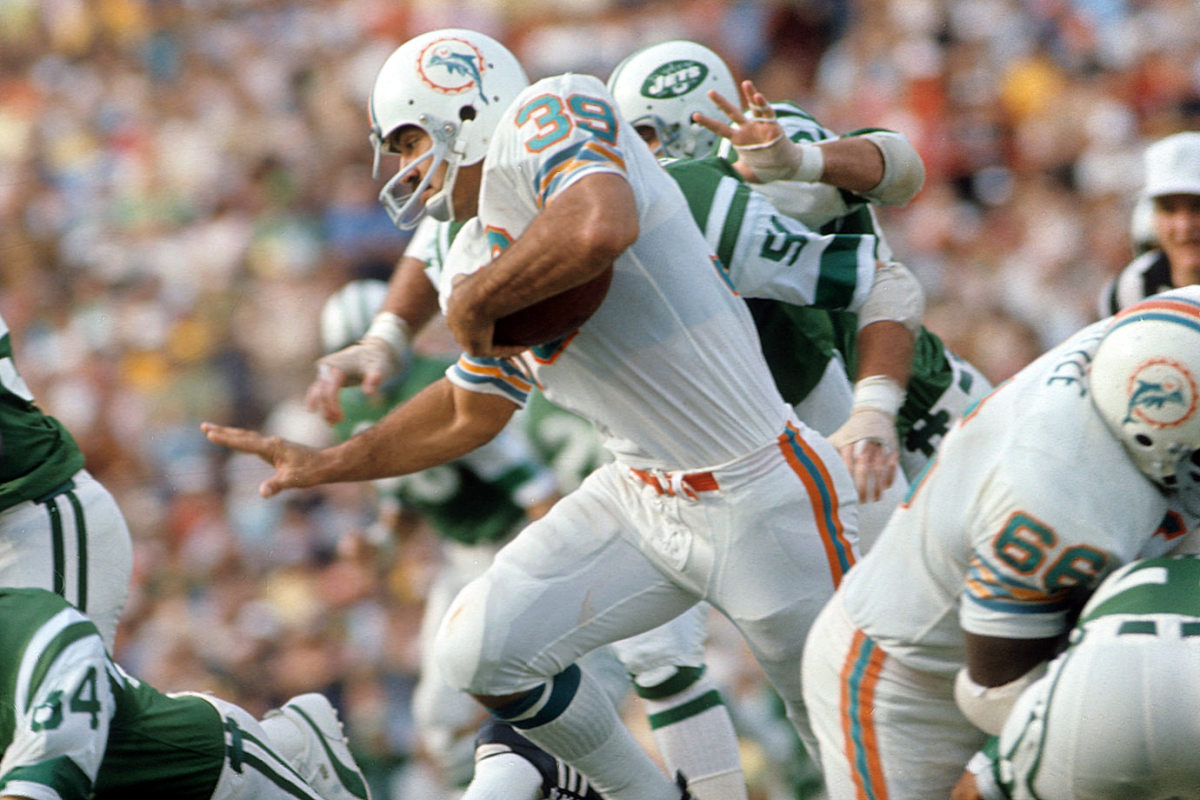
Aside from coach Don Shula, Csonka probably is the face of the Dolphins’ 1970s teams for a lot of fans. The 1987 Hall inductee had his best statistical season (1,117 yards rushing) during Miami's ’72 undefeated run to the Super Bowl.
40 — Gale Sayers
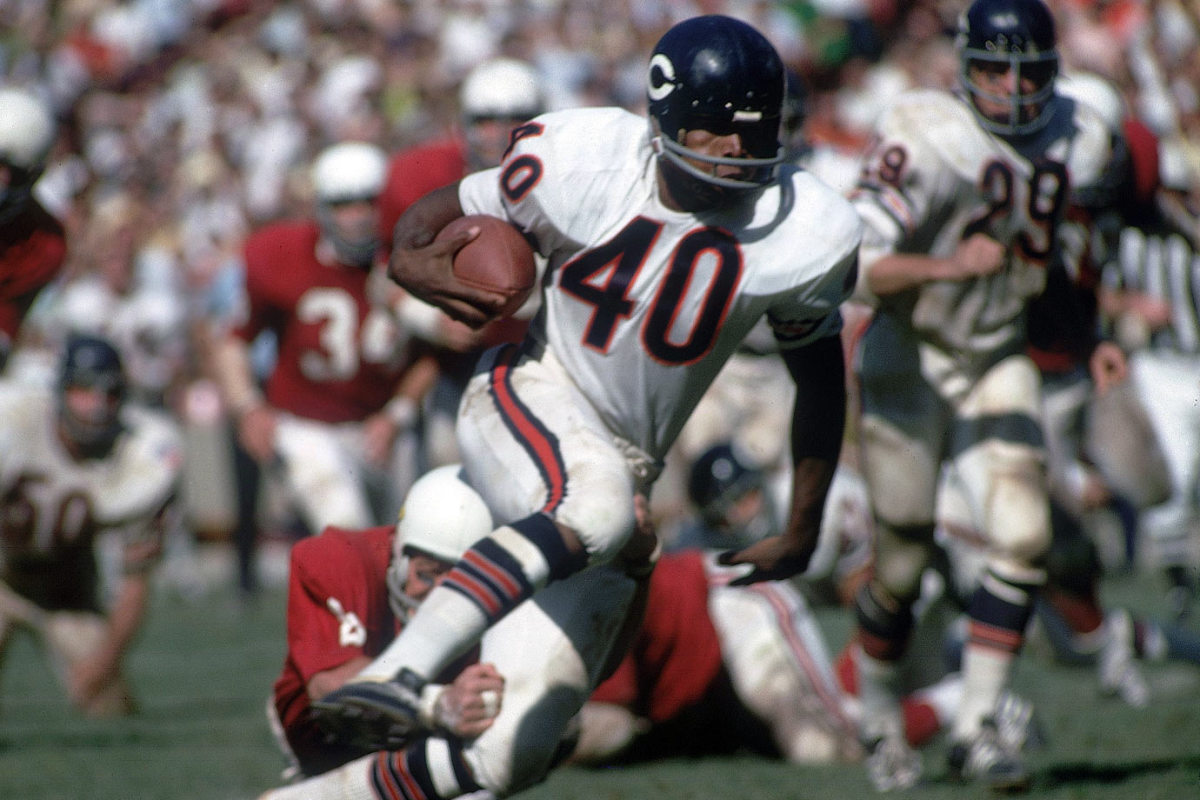
This spot very nearly fell to Mike Alstott, Tampa Bay's six-time Pro Bowl fullback. But bypassing Sayers would be ignoring one of the most talented players to suit up in the NFL. Were it not for a knee injury in 1968, who knows how great Sayers could have been. The Hall of Fame saved a spot for him anyway, on the basis of what he accomplished over four and a half seasons before injuries ended his career.
41 — Lorenzo Neal
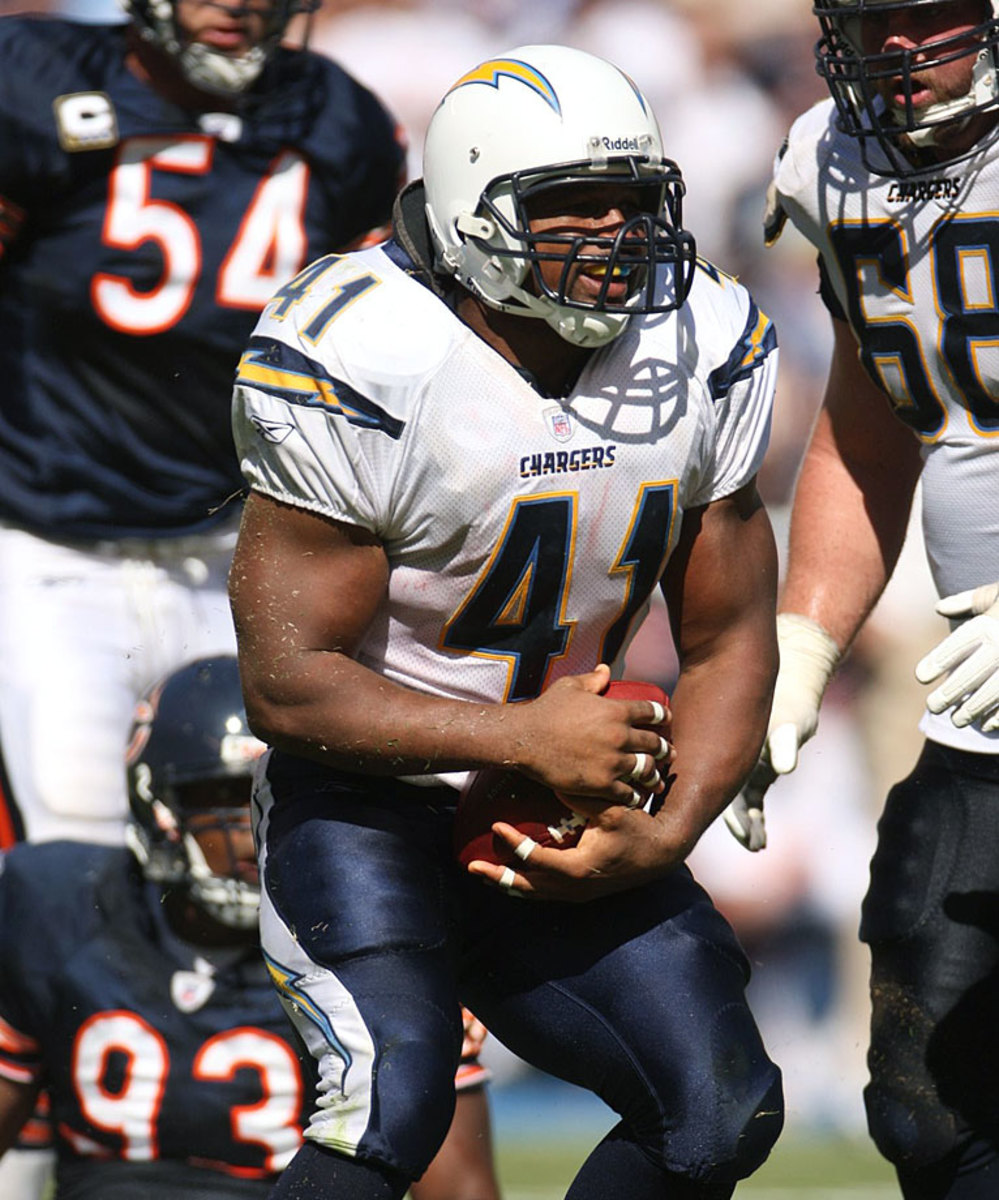
A fullback lands on the list, one spot after Alstott's snub. Neal played for what felt like every team in the league during a career that spanned 1993-2008. He could pick up a few yards or catch a pass, but Neal thrived doing the dirty work. Voters placed him on the Pro Football Hall of Fame's All-2000s team.
42 — Ronnie Lott
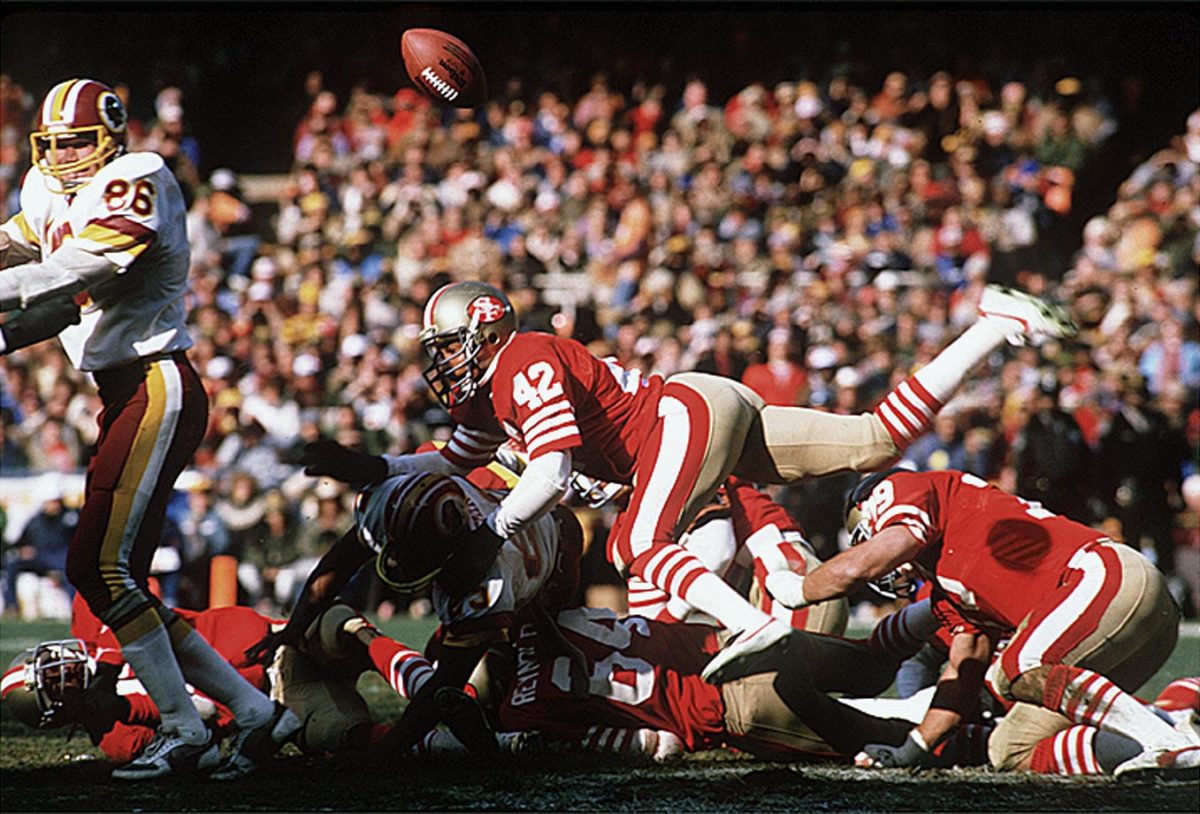
Lott led the league with eight interceptions in 1991, his first season with Oakland. The 10 years before that in San Francisco defined his career, however. A 10-time Pro Bowler, six-time All-Pro and 2000 Hall inductee, Lott could play—and dominate from—any position in the secondary.
43 — Troy Polamalu
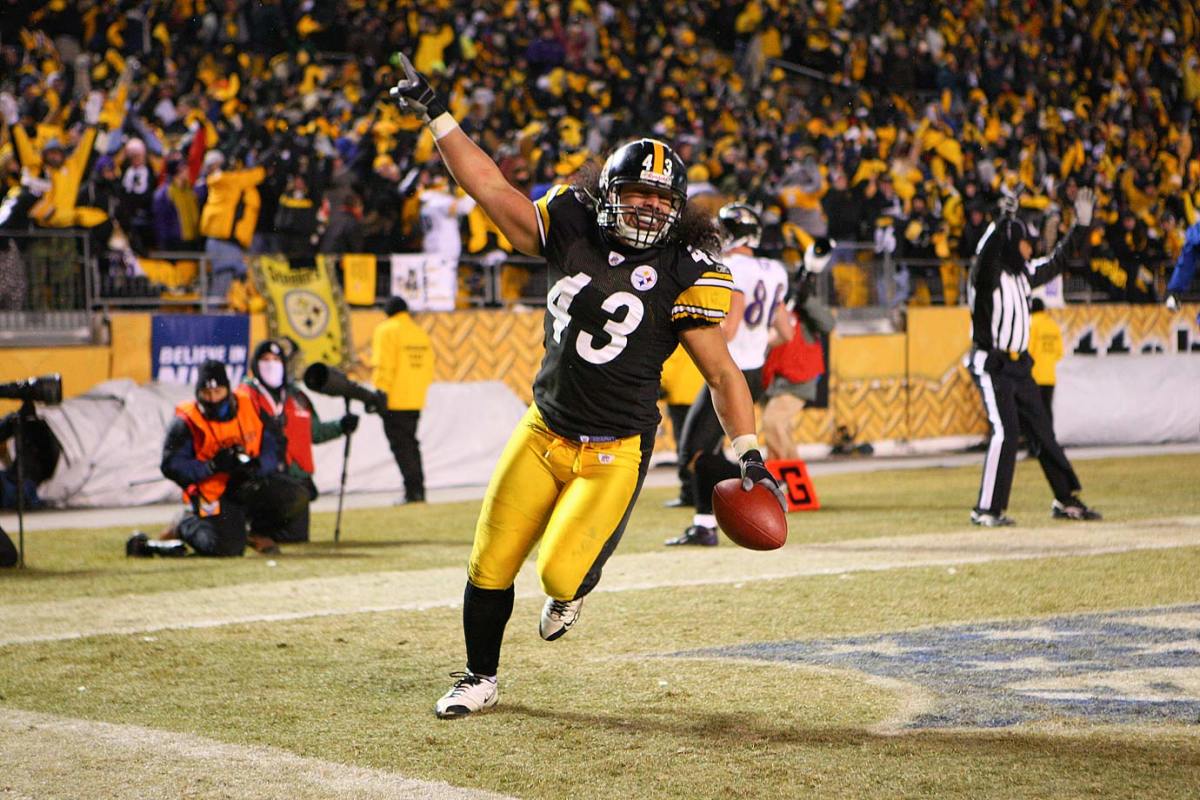
It is impossible to talk about safeties in the modern era without discussing Polamalu's impact. How many touchdowns did he save the Steelers? How many games did he alter with one timely, amazing play? Polamalu will be in the Hall, though the clock just started ticking with his retirement this off-season.
44 — John Riggins
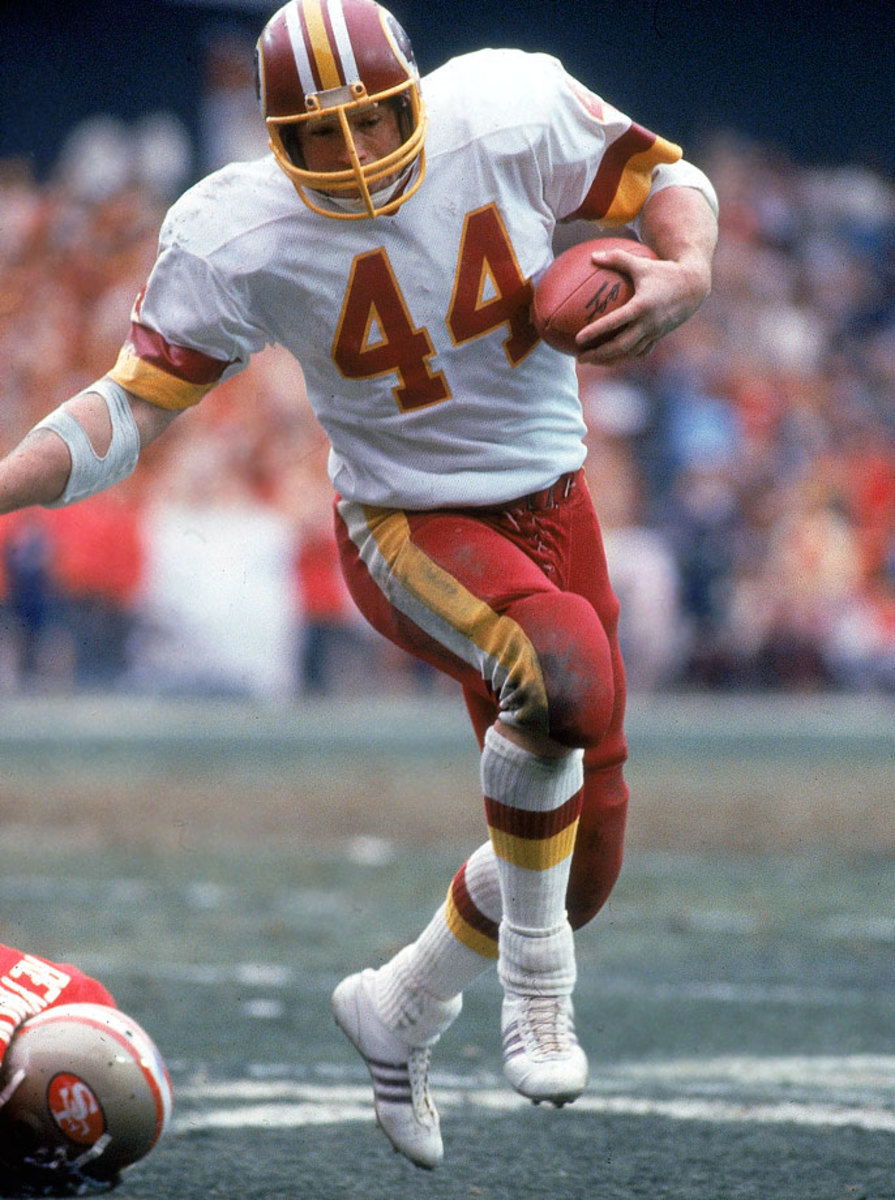
Fascinating collection of players at No. 44—Hall of Famers Dick LeBeau, Floyd Little and Leroy Kelly all took that number. A Hall of Famer himself and a Super Bowl MVP, Riggins had a longer, more productive career than all of them. His 104 rushing touchdowns ranks sixth all time; his 11,352 yards rushing currently place him 17th.
45 — Kenny Easley
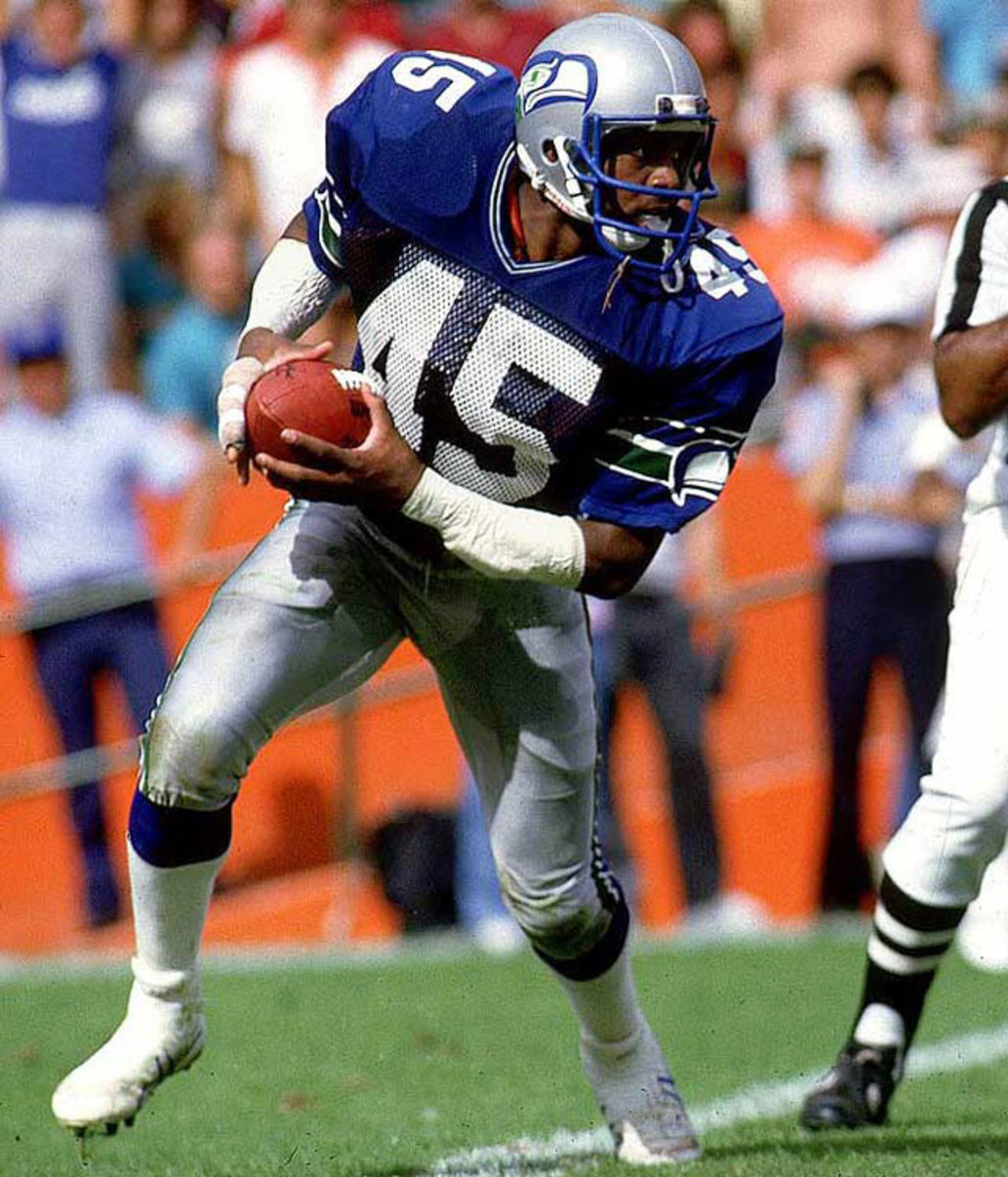
Ask just about any longtime Seahawks fan and they'll tell you Easley deserves a spot in Canton. He likely would have claimed one had a kidney disease not ended his career after seven seasons. The heavy-hitting safety made the Pro Bowl five times during that stretch, picking off 32 passes in the process.
46 — Tim McDonald
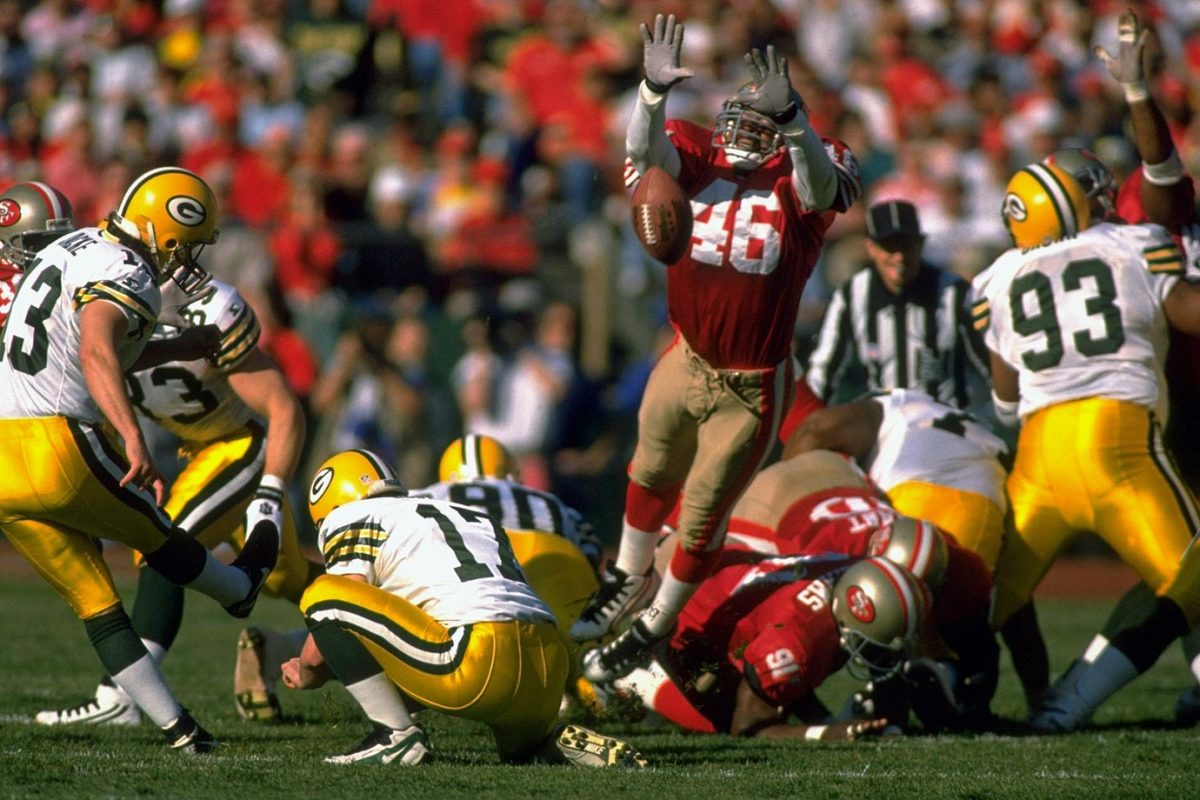
A few more solid, overlooked players shared the No. 46. McDonald, who started 187 games and earned six Pro Bowl bids from 1987–99, is one. Another: Raiders tight end Todd Christensen. He twice led the league in receptions (1983 and '86) and caught 461 passes for his career.
47 — John Lynch
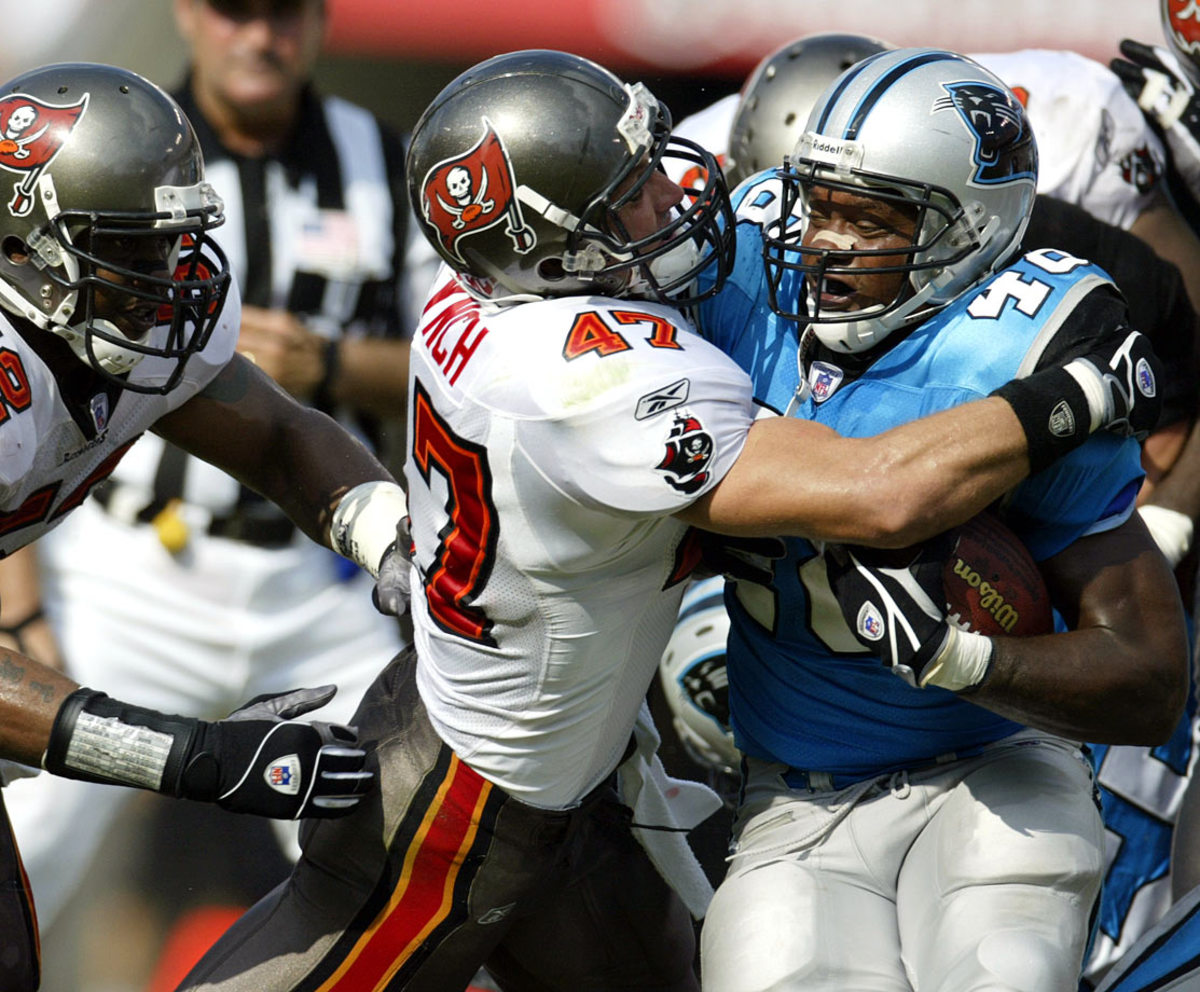
Should a contrarian prefer Hall of Fame Steelers cornerback Mel Blount, it would be very understandable. Blount was a lock-down defender for more than a decade. Lynch, though, should join him in the Hall. Whether he will or not is another story—the Tampa Bay great has fallen short twice as a finalist—but his impact on the Bucs' defense impact was profound. Lynch excelled outside of Tampa Bay, too, closing his career with four straight Pro Bowls as a Bronco. The hard-hitting Lynch was a deserving nine-time Pro Bowler.
48 — Daryl Johnston
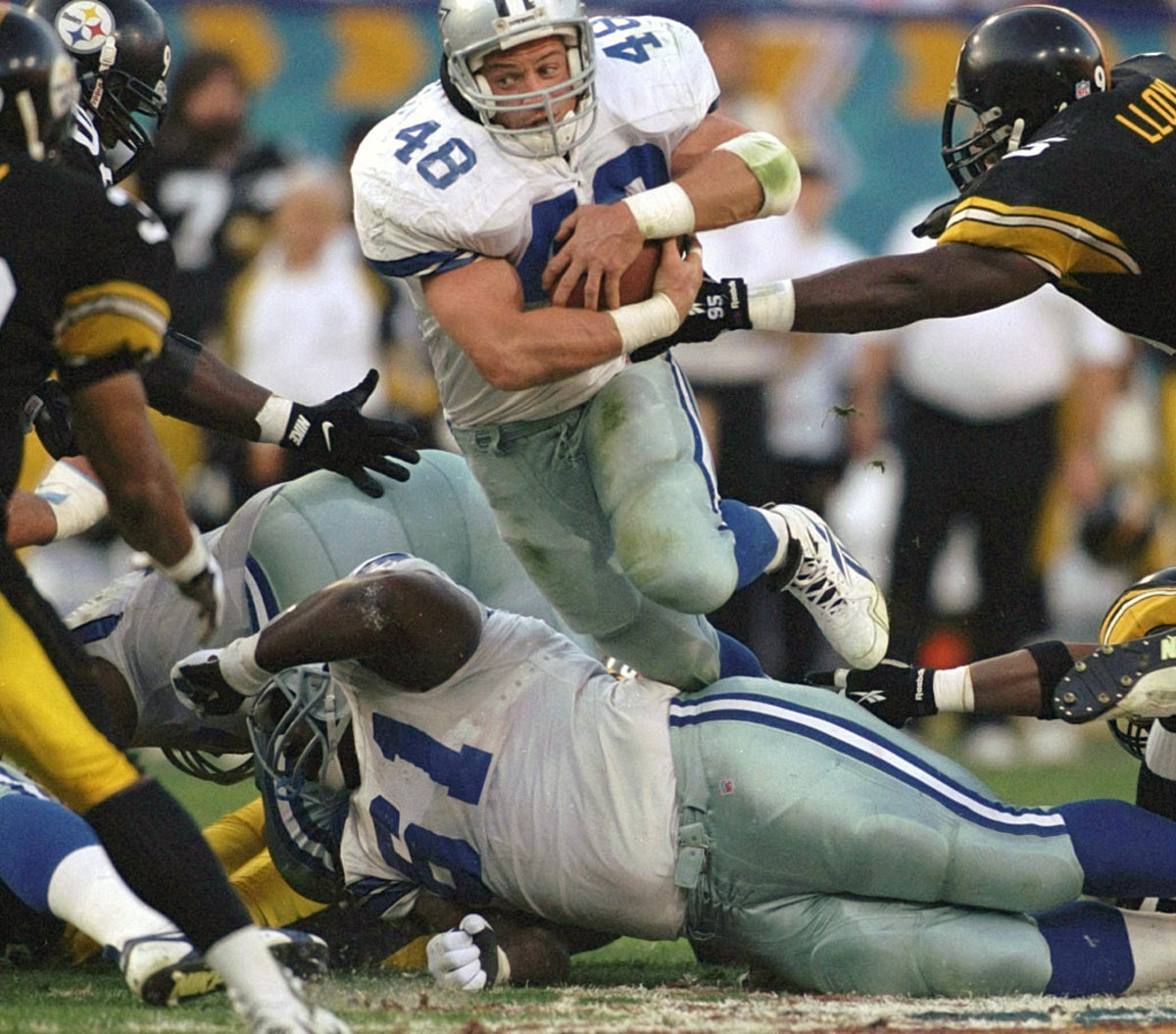
Would Emmitt Smith's career have reached such historic heights without Johnston blocking for him? Perhaps, but "Moose" was a catalyst for the Cowboys' run game throughout the '90s. Johnston also caught 294 passes and scored 22 touchdowns.
49 — Dennis Smith
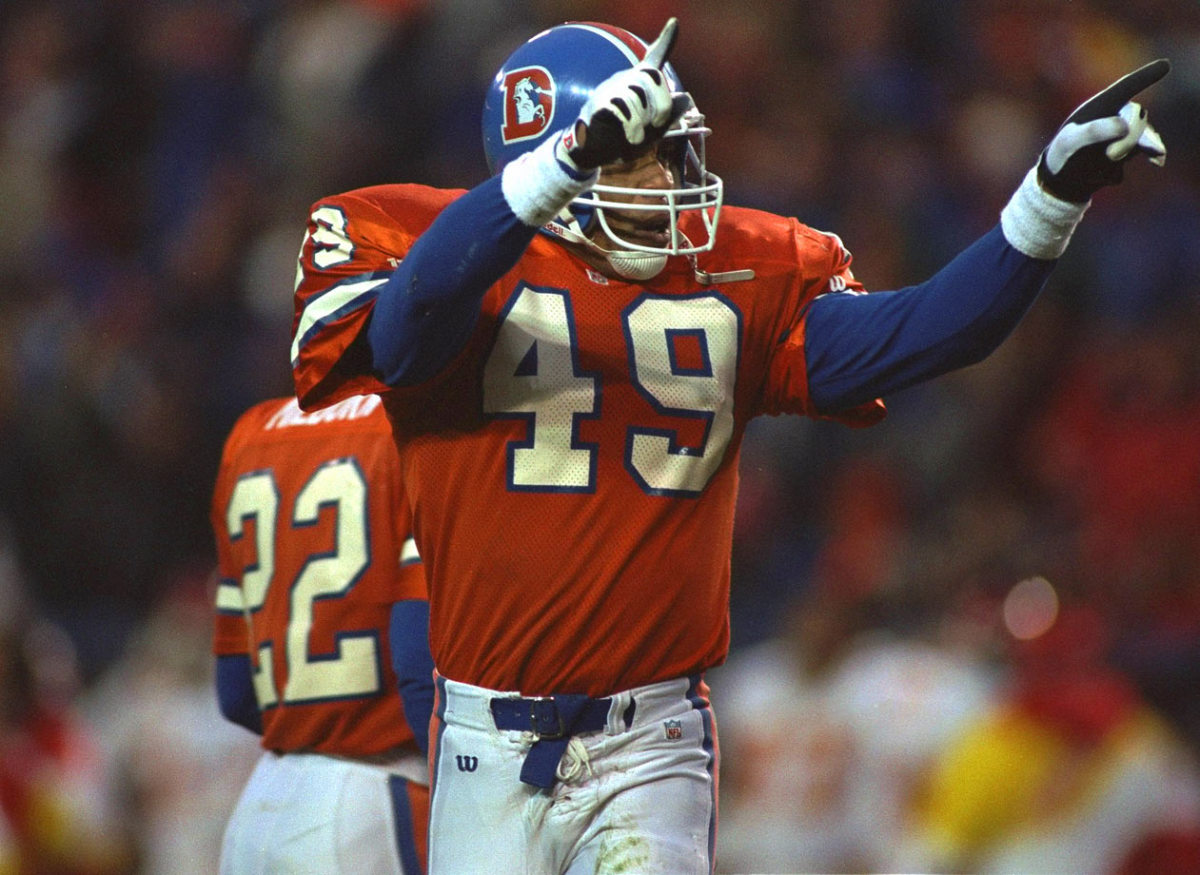
Pure safeties always have had a difficult time getting to the Hall (see Lynch above), so Smith has remained an afterthought despite 14 impressive seasons and six Pro Bowl nods with Denver. Hall of Fame receiver Bobby Mitchell also wore No. 49, but just three of his seasons occurred in the Super Bowl era. Mitchell was at his most electrifying from 1962–63.
50 — Mike Singletary
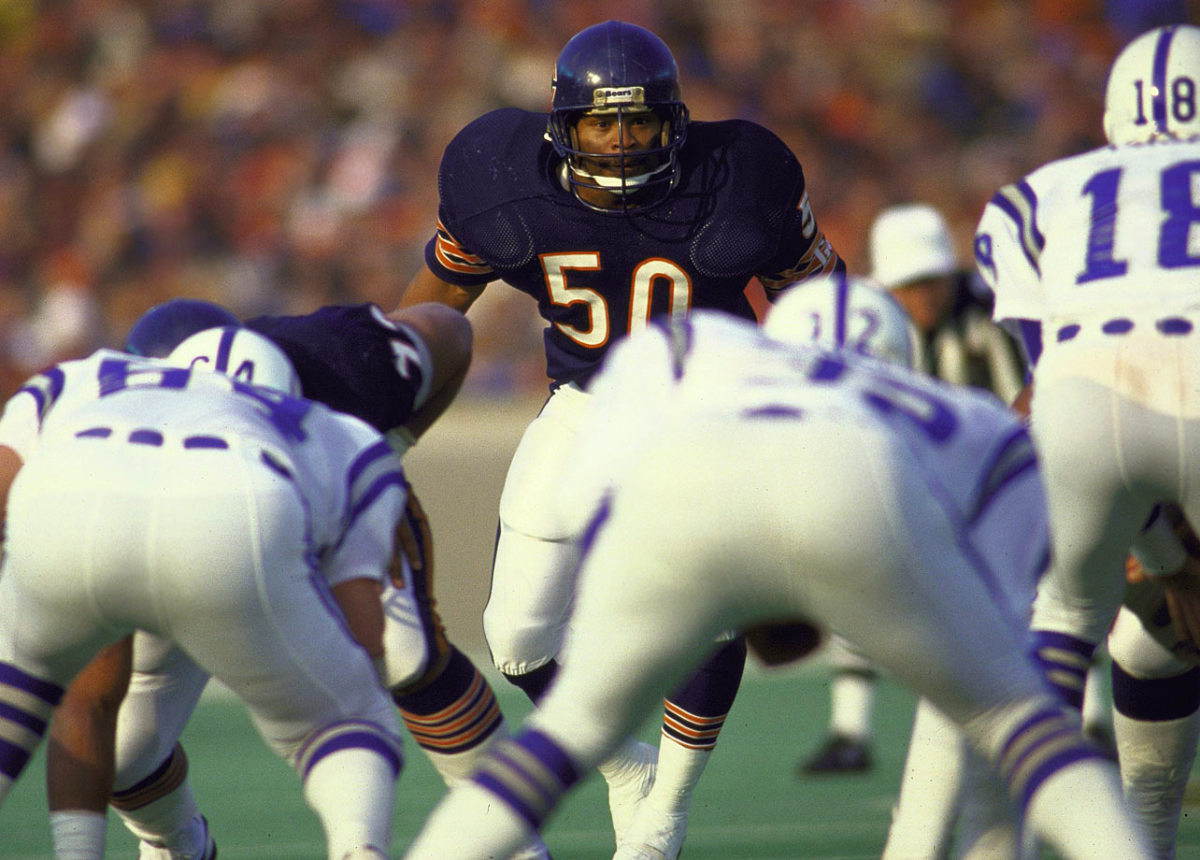
Buddy Ryan benched Singletary in his very first NFL game, but after that, Singletary became the face and the voice of the 46 defense, perhaps the greatest defense of all time. He was not a do-it-all guy (coverage was not a strength), but 10 Pro Bowls and seven First-Team All-Pro selections tell the story. Very few linebackers have ever played the game with more intelligence and passion.
51 — Dick Butkus
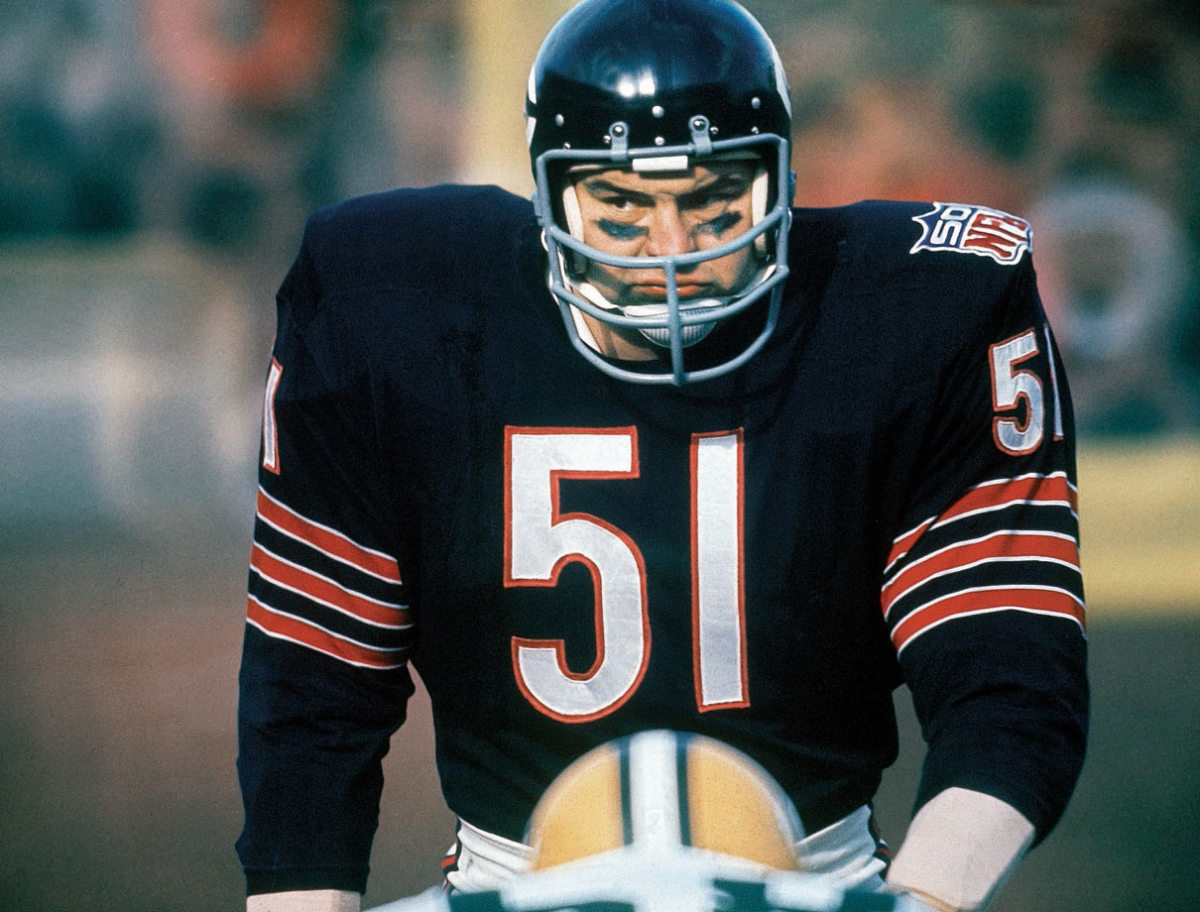
I really wanted to put Sam Mills here, but how can you deny the man who redefined his position as much as any player in the game's history? Were it not for knee injuries and the Bears' general mediocrity through his career ... well, imagine Butkus on a playoff-level defense with a real quarterback. One of the game's all-time peak value players.
52 — Ray Lewis
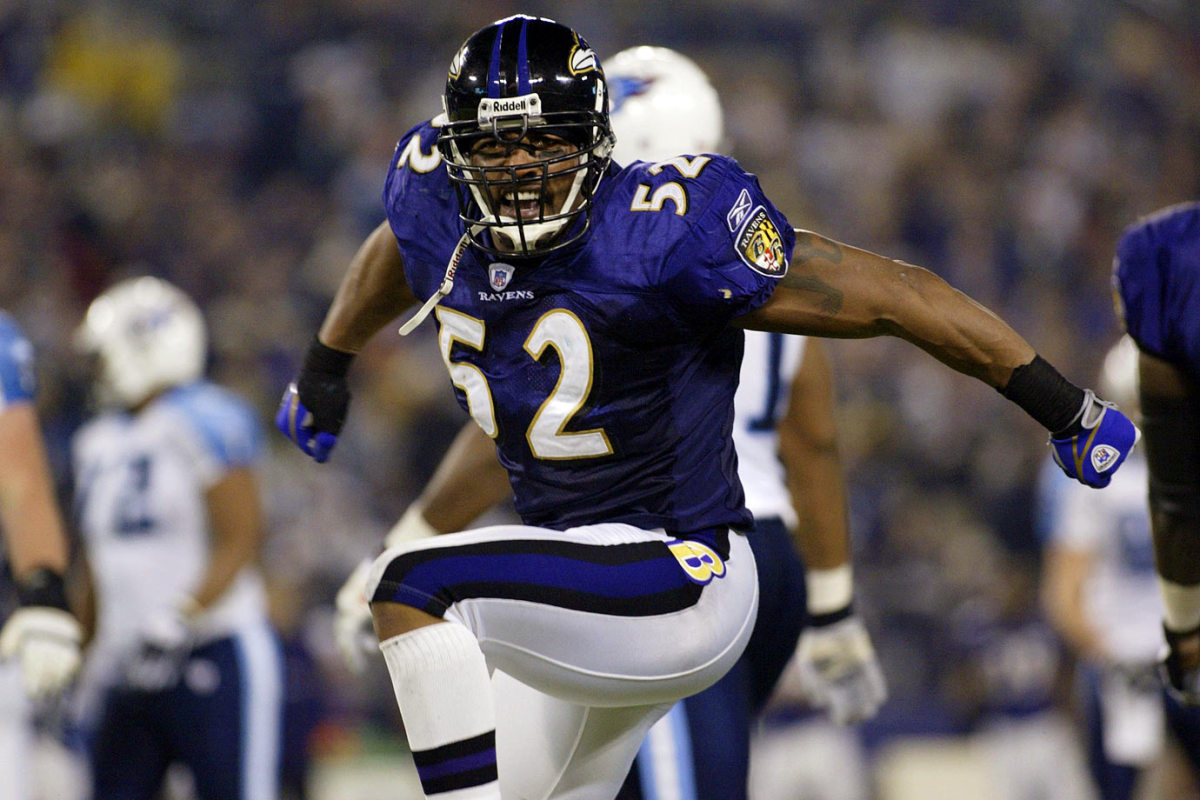
Keeping things on the field here, Lewis's 2000 season may have been the best by any linebacker in league history. He was the Defensive Player of the Year and the Super Bowl MVP and was virtually unstoppable throughout the year. Even at the end of his career, when his physical gifts had diminished, he was the Ravens' supreme motivational force.
53 — Mick Tingelhoff
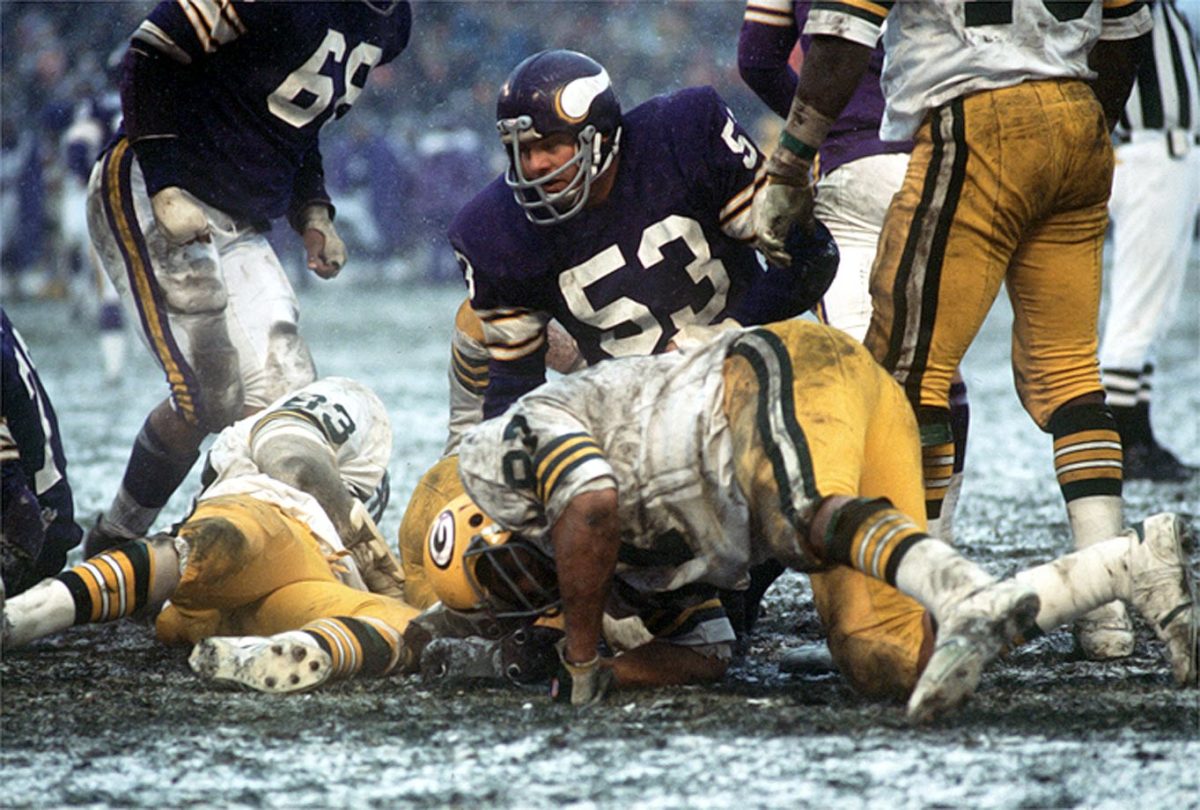
Tingelhoff over Harry Carson and Randy Gradishar? Yes, because he was the heart of the Vikings' offense through the rough expansion years and on the teams that went to four Super Bowls. He never missed a game throughout his 17-year career—that's 240 regular season and 19 playoff games, playing at an All-Pro level all the way through.
54 — Randy White
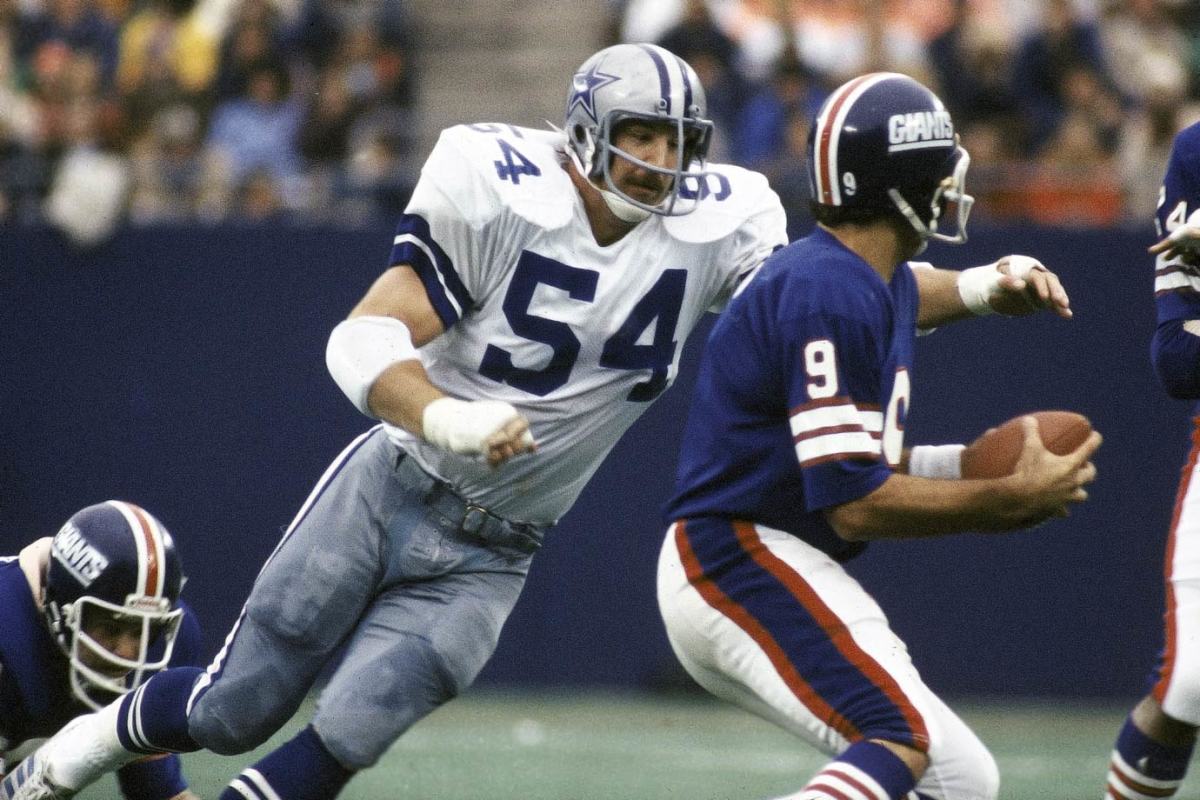
One of the most intimidating, consistent, and technically-sound players of his era. The Cowboys tried White at linebacker for two seasons, and then got it right when they moved him to tackle in 1977. For his career, White was credited with 1,104 tackles, 701 solo tackles and 111 sacks, made nine Pro Bowls and seven First-Team All-Pro selections, and was the Super Bowl XII co-MVP.
55 — Junior Seau
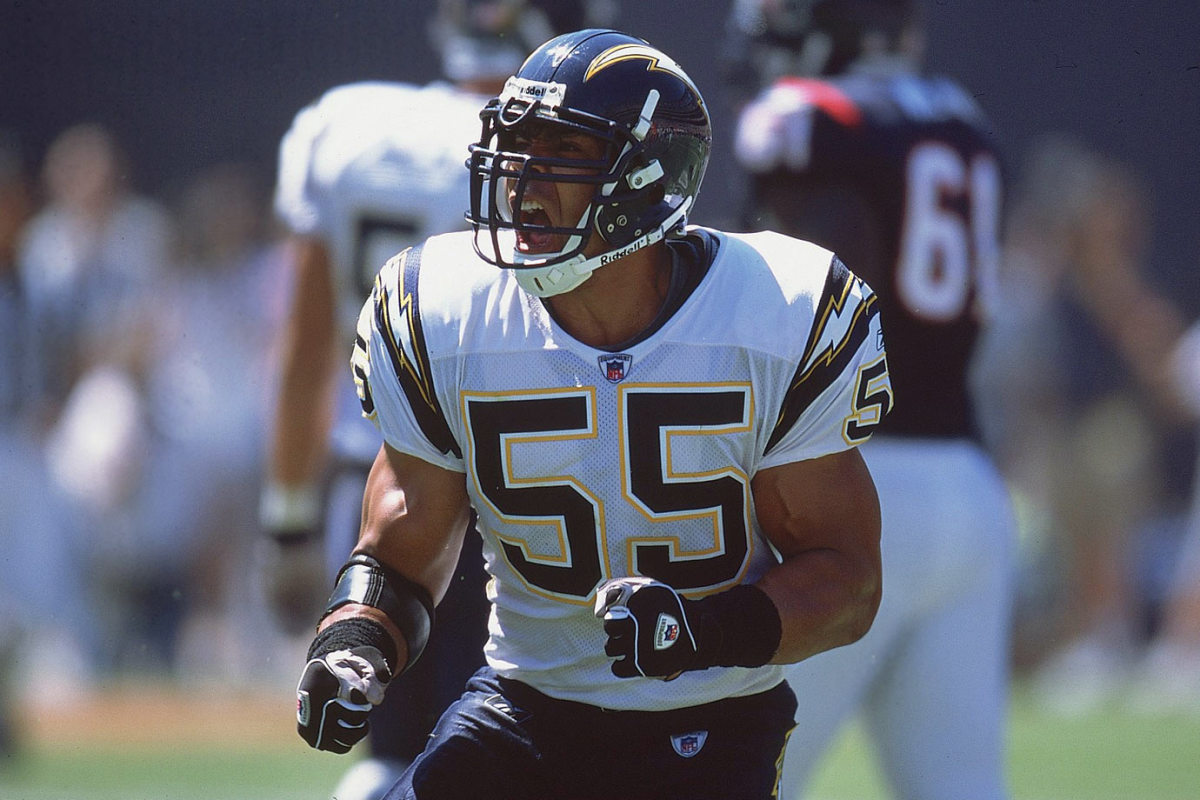
Only 11 players have started more games than Seau's 243 over 20 seasons, an amazing total given the physical nature and consistent quality of his play. Seau could do everything required of a linebacker. He logged 18 interceptions and 18 fumble recoveries through his career, as well as 56.5 sacks and an amazing 1,522 total tackles.
56 — Lawrence Taylor
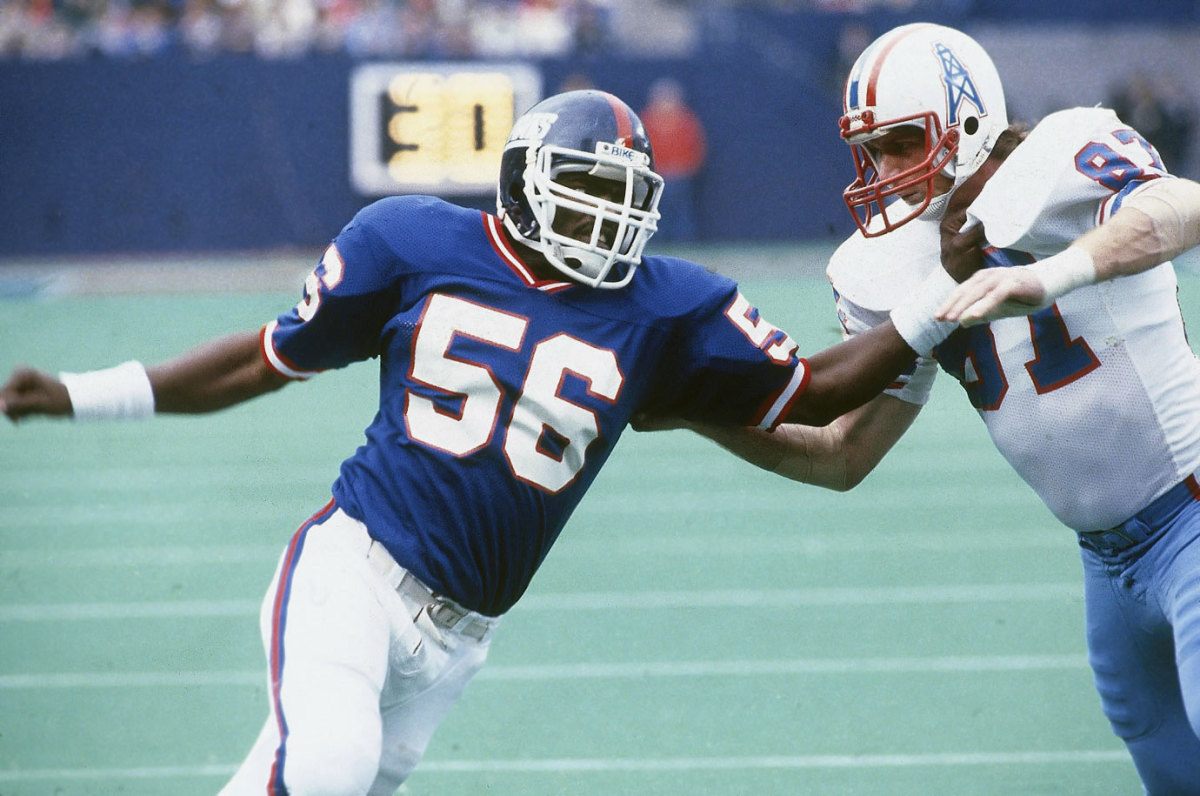
Taylor became the first true pass-rushing linebacker when Bill Parcells and Bill Belichick set him loose on the NFL in the early 1980s, and few have done it better since. Taylor played with an unbeatable combination of strength, speed and determination, and even when his off-field demons trapped him, he still brought it with authority on the field. Few defenders have ever had better seasons than Taylor's 1986, when he registered 20.5 sacks and won the MVP award.
57 — Rickey Jackson
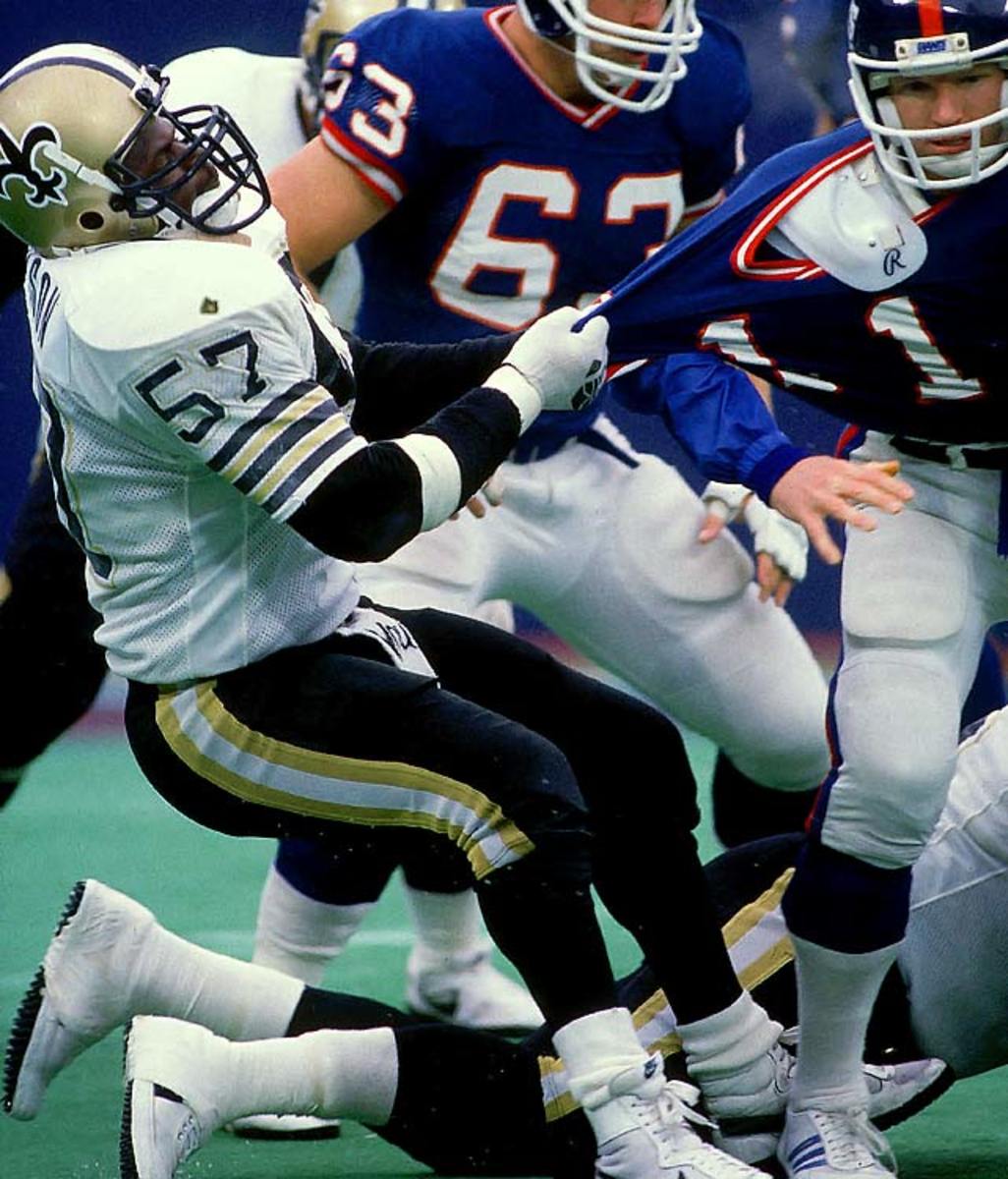
Jackson was the pure pass rusher in New Orleans's vaunted “Dome Patrol” linebacker corps in the 1980s. Over his career, he logged 131 sacks and recovered seven fumbles in the 1990 season. His gifts are still underrated to this day, though he made the Hall of Fame in 2010.
58 — Jack Lambert
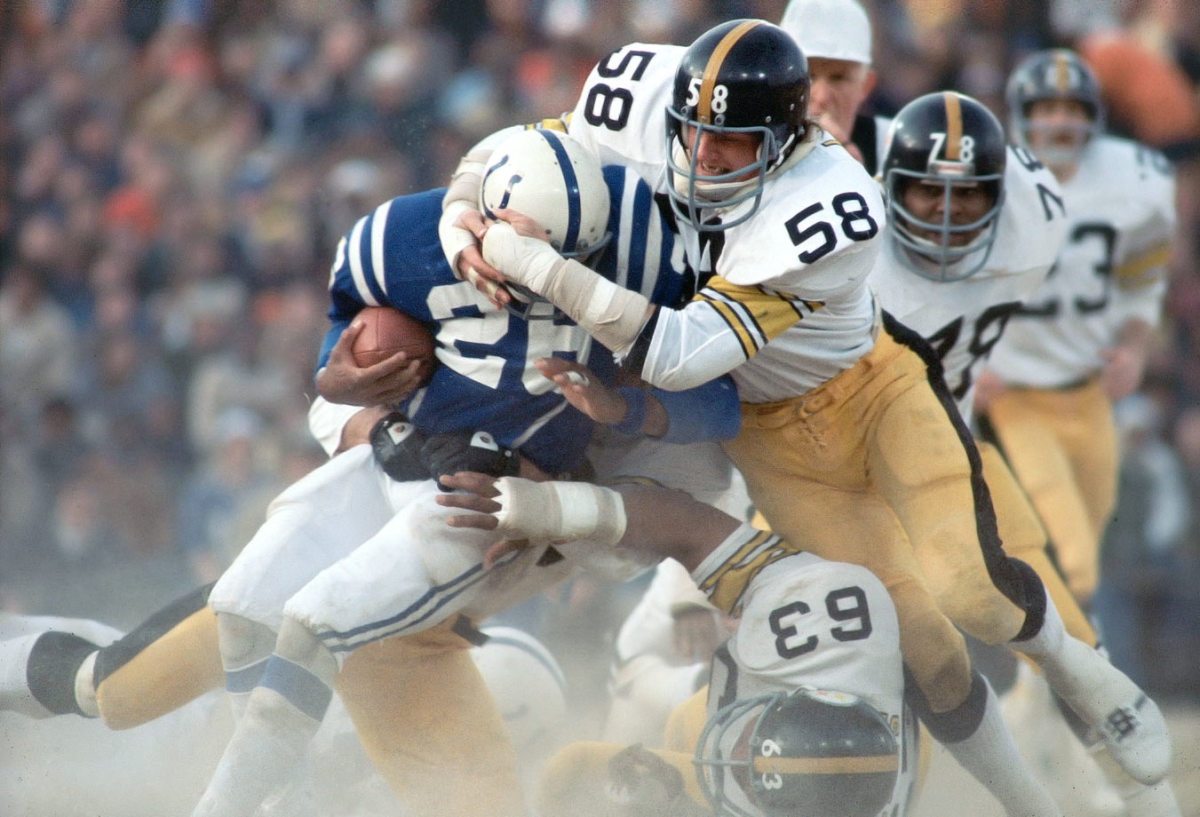
Lambert is best-known for his menacing, toothless glare, but he was also the key to Bud Carson's defensive schemes in the 1970s, when the Steel Curtain reigned supreme. Lambert was light, fast and utterly fearless, and he played every down with a frightening ferocity, but he was also one of the smartest linebackers ever to take the field.
59 — Jack Ham
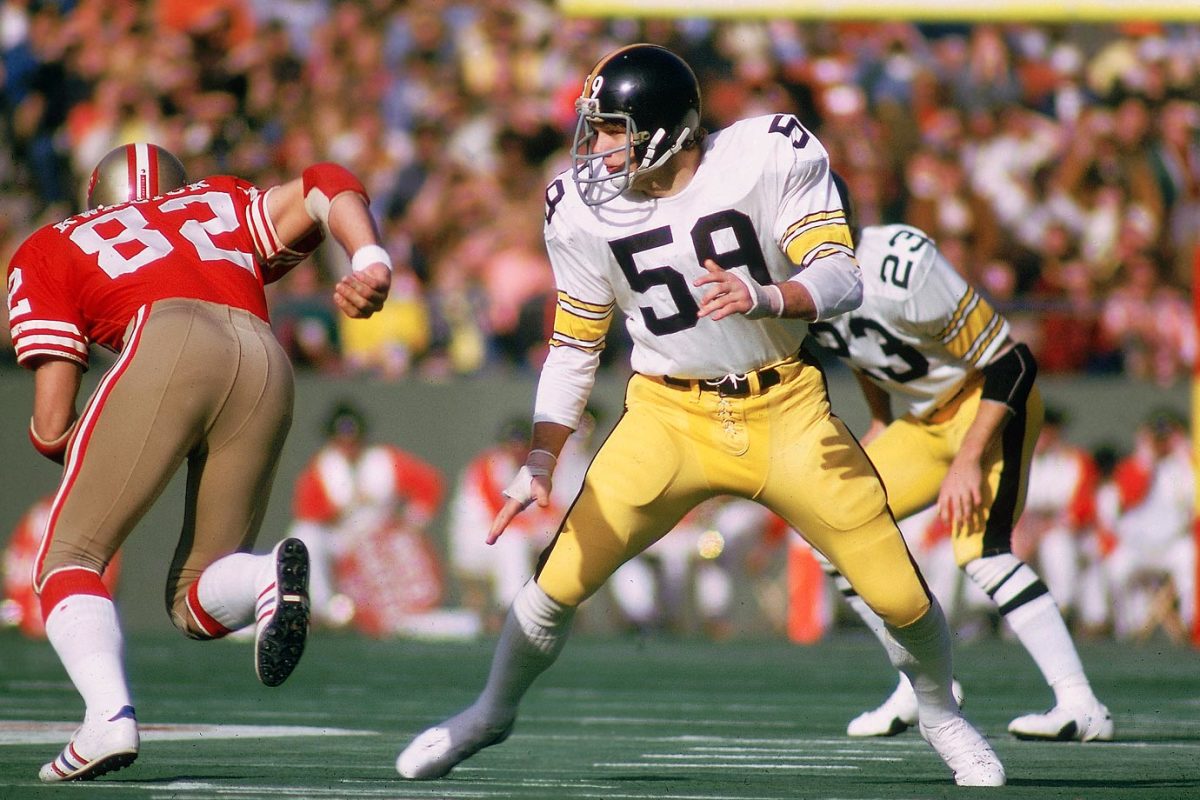
As good as Lambert was, it's Ham who's thought by many to be the best linebacker of the Steel Curtain defense, and one of the best in NFL history. A ruthlessly intelligent player who almost never stepped out of position, Ham was a first-team All-Pro every year from 1974 through '79, which just happened to line up with Pittsburgh's run of four Super Bowl titles in six years.
60 — Larry Grantham
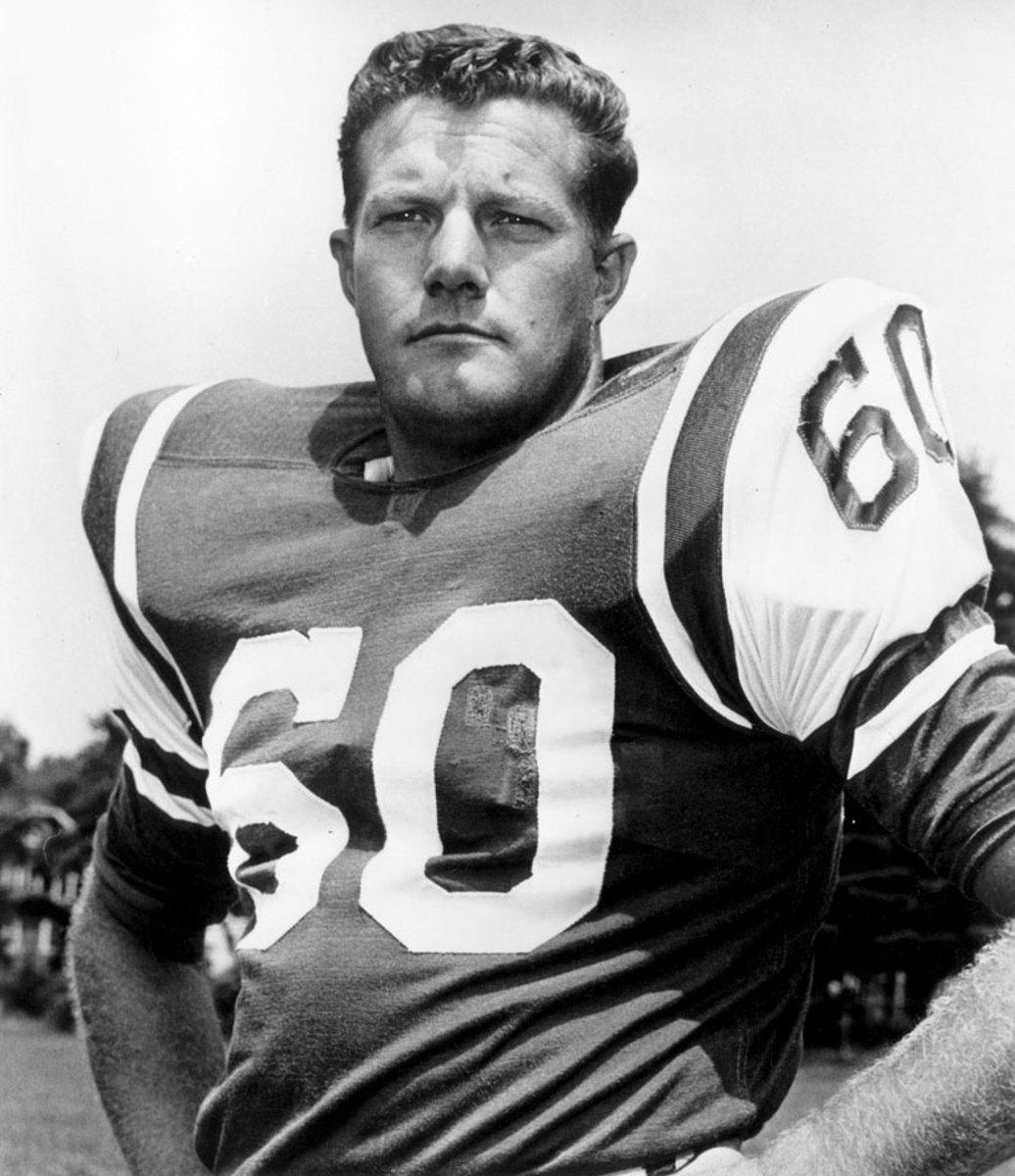
Of course Chuck Bednarik would be our No. 60 if we were going past the Super Bowl era, but Grantham is no slouch, either. He's one of a handful of players who played through the entire 10-year history of the American Football League, earning selection to five Pro Bowls and five All-Pro teams. Grantham had five interceptions in two different seasons and was a key cog on the 1968 Jets defense that shocked the world in Super Bowl III.
61 — Curley Culp
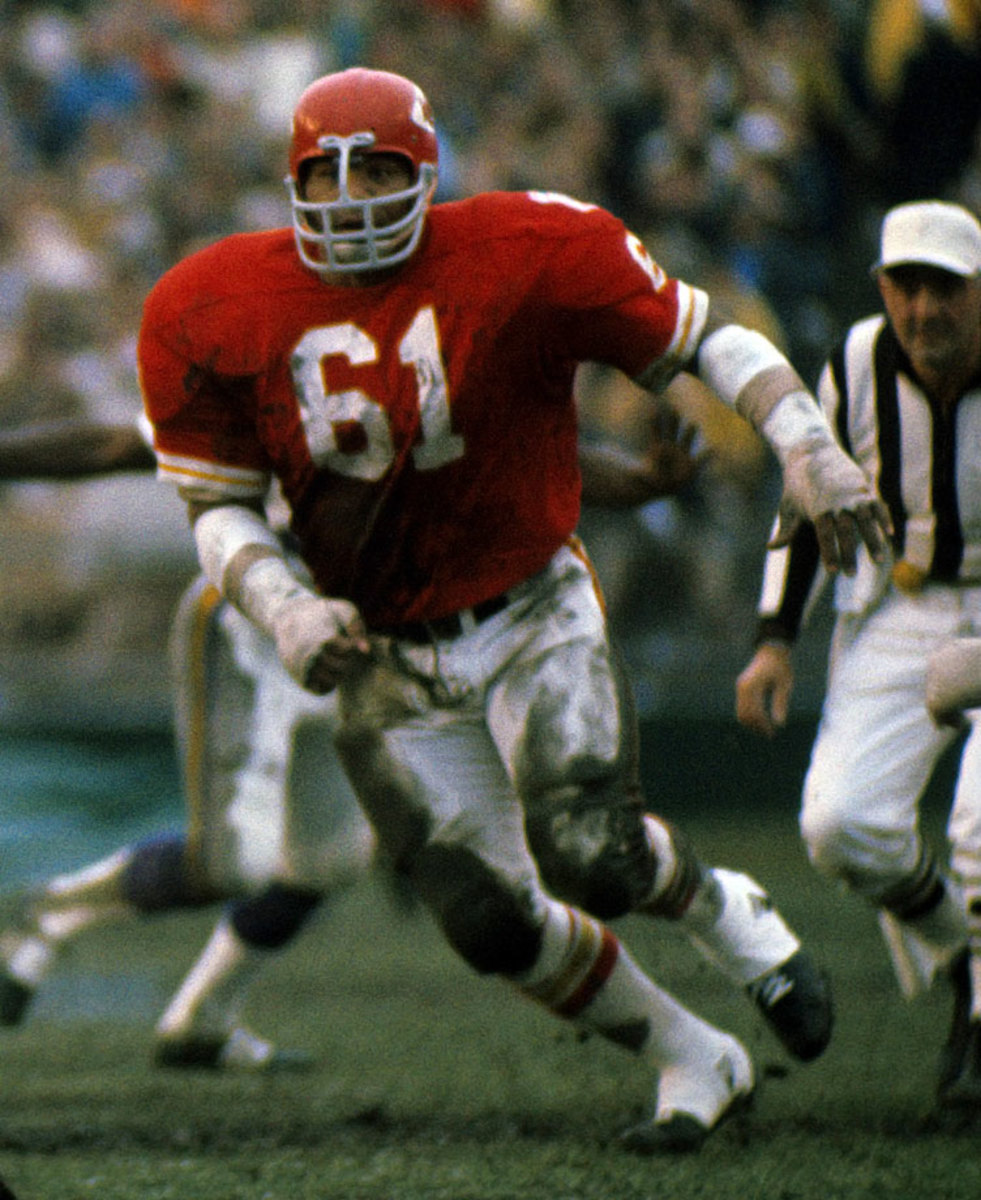
The prototype of the modern-day nose tackle, Culp manned the middle of some special defenses, including the Kansas City squad that beat the Vikings in Super Bowl IV. During his time in Kansas City and Houston, he was a mainstay on two of the NFL's first true 3-4 defenses, recording his finest season in 1975, when he finished with 11.5 sacks, a rare total for an inside player.
62 — Jim Langer
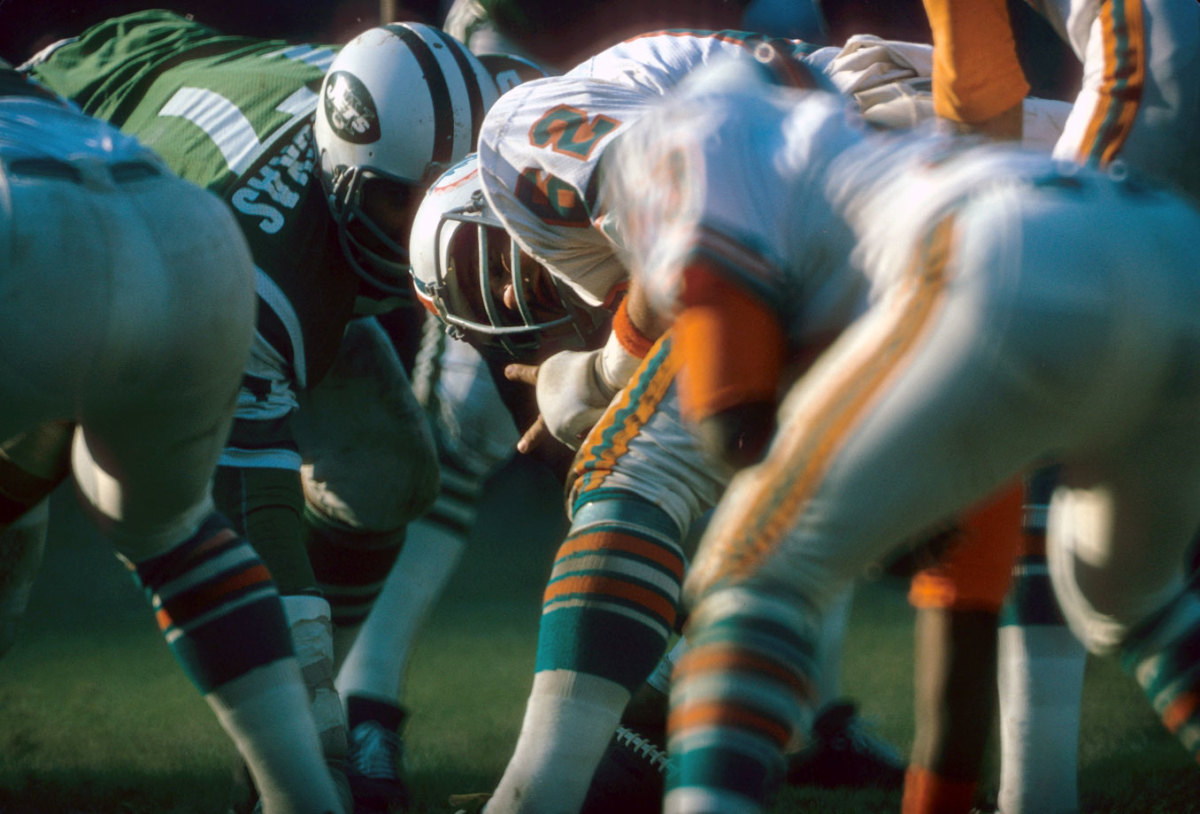
The center for one of the greatest offensive lines of all time in Miami in the early 1970s, Langer played his first season at center in '72, when he played every offensive down for the NFL's only undefeated team. He was named to six Pro Bowls and four first-team All-Pro squads and made the Hall of Fame's All-1970s team.
63 — Gene Upshaw
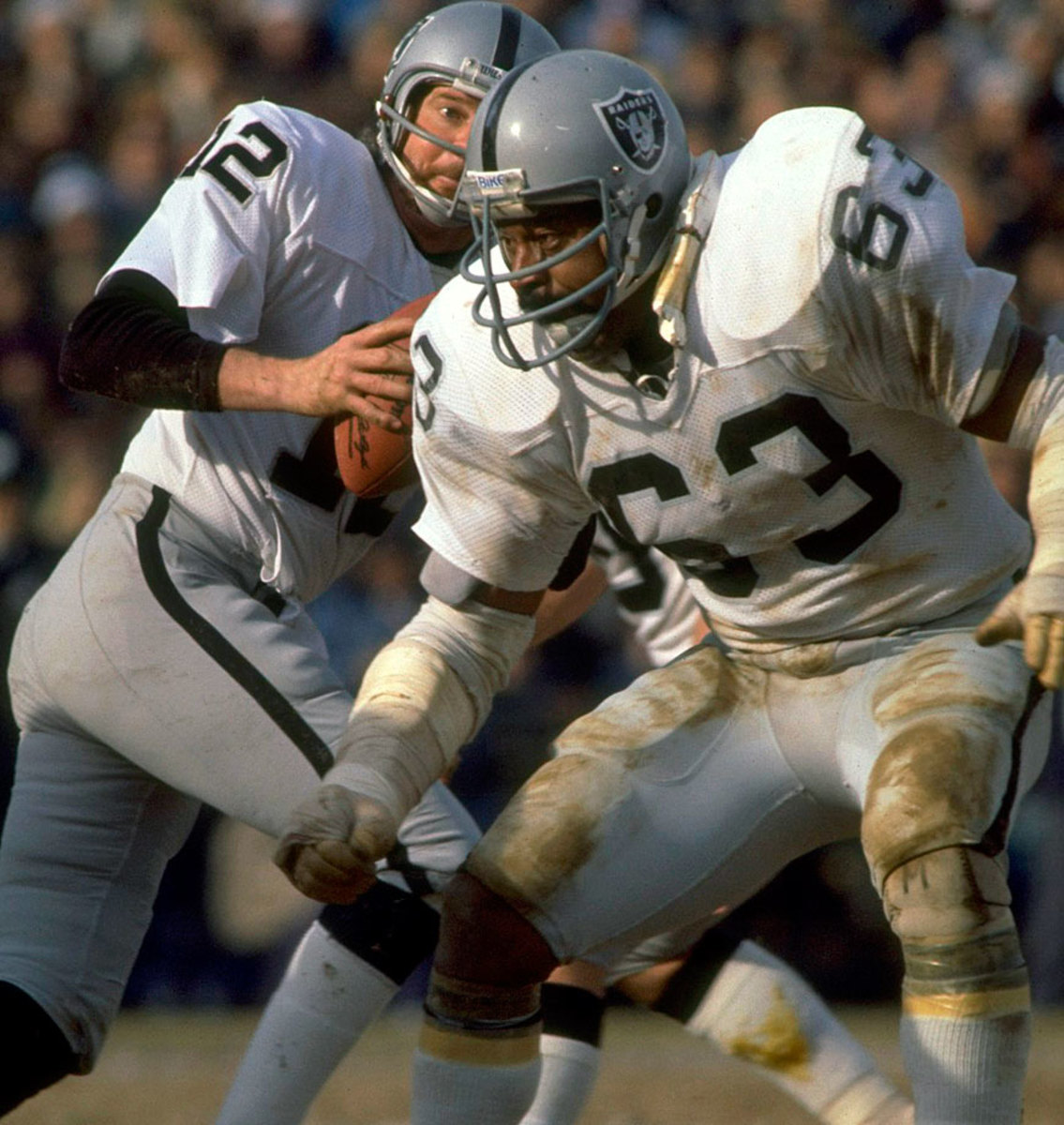
The Raiders drafted Upshaw out of Texas A&M–Kingsville for one reason: to block Kansas City's Buck Buchanan. Over the next 15 seasons, he blocked Buchanan and just about everybody else. The left side of Upshaw and tackle Art Shell might be the best in NFL history, and Upshaw himself was named to seven Pro Bowls and five first-team All-Pro teams.
64 — Randall McDaniel
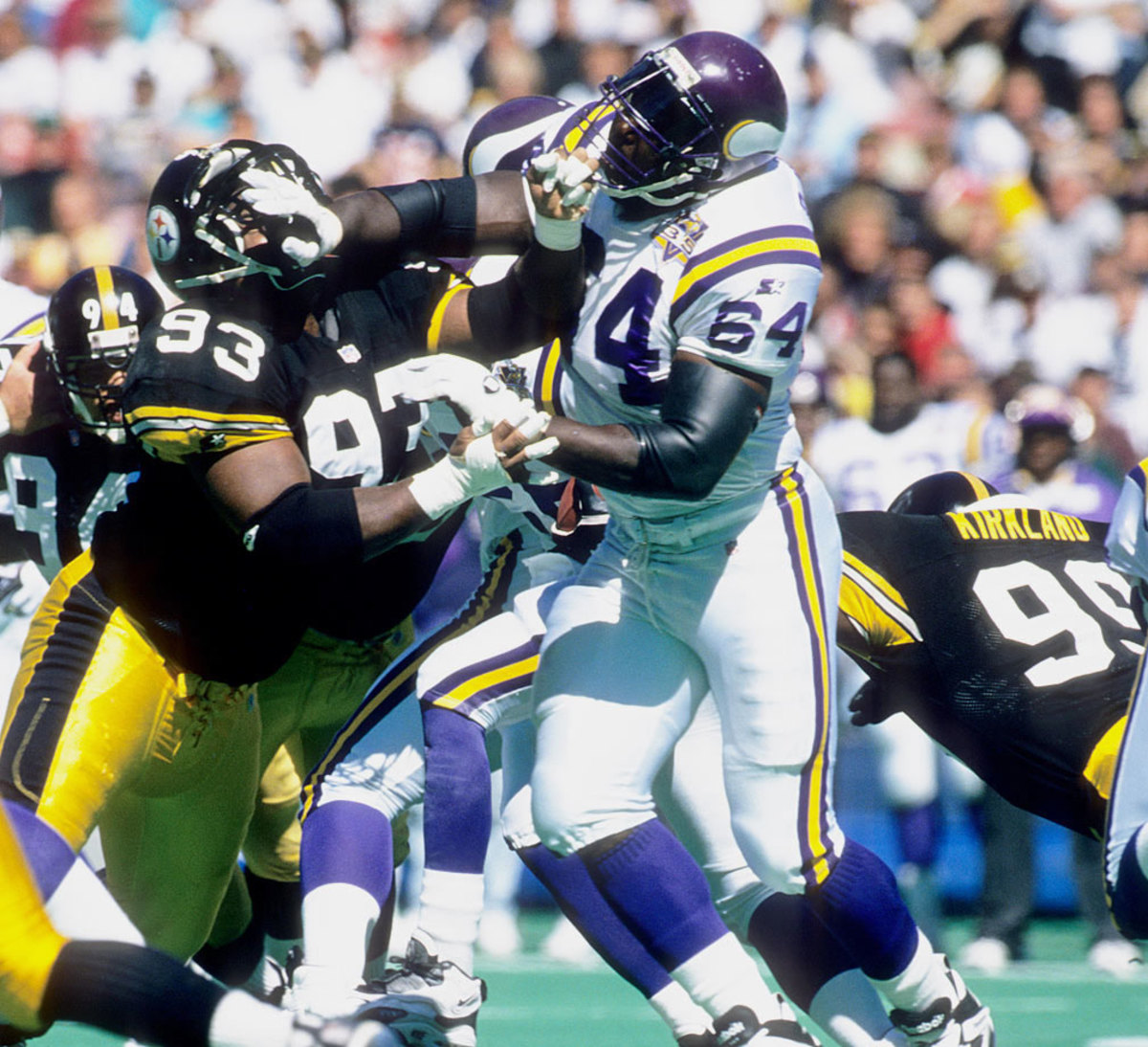
McDaniel started 202 straight games in his career and was named to 12 straight Pro Bowl teams, an NFL record. Perhaps his most notable achievement was his role in the 1998 Vikings offense that set a record with 556 points. In that season, McDaniel allowed 1.5 sacks all season, while clearing the way for a 5.4 yards per carry average to his side. He was also the first guard in modern Pro Bowl history to catch a touchdown pass.
65 — Elvin Bethea
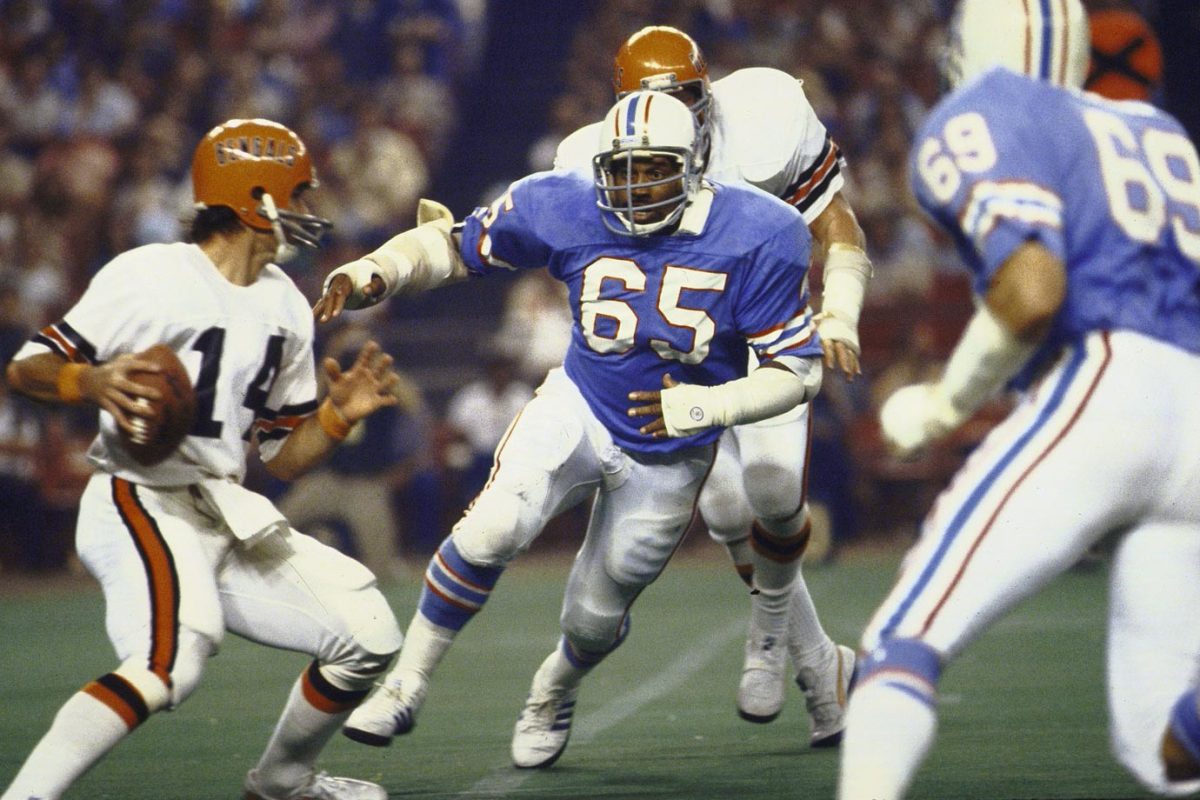
Bethea holds several franchise records, including most seasons (16), most regular-season games played (210) and most consecutive regular-season games played (135). His unofficial career sack total of 105 and his 1973 total of 16 are also franchise bests. Bethea was the primary pass rusher in one of the NFL's first 3–4 defenses and played at a very high level for a very long time.
66 — Ray Nitschke
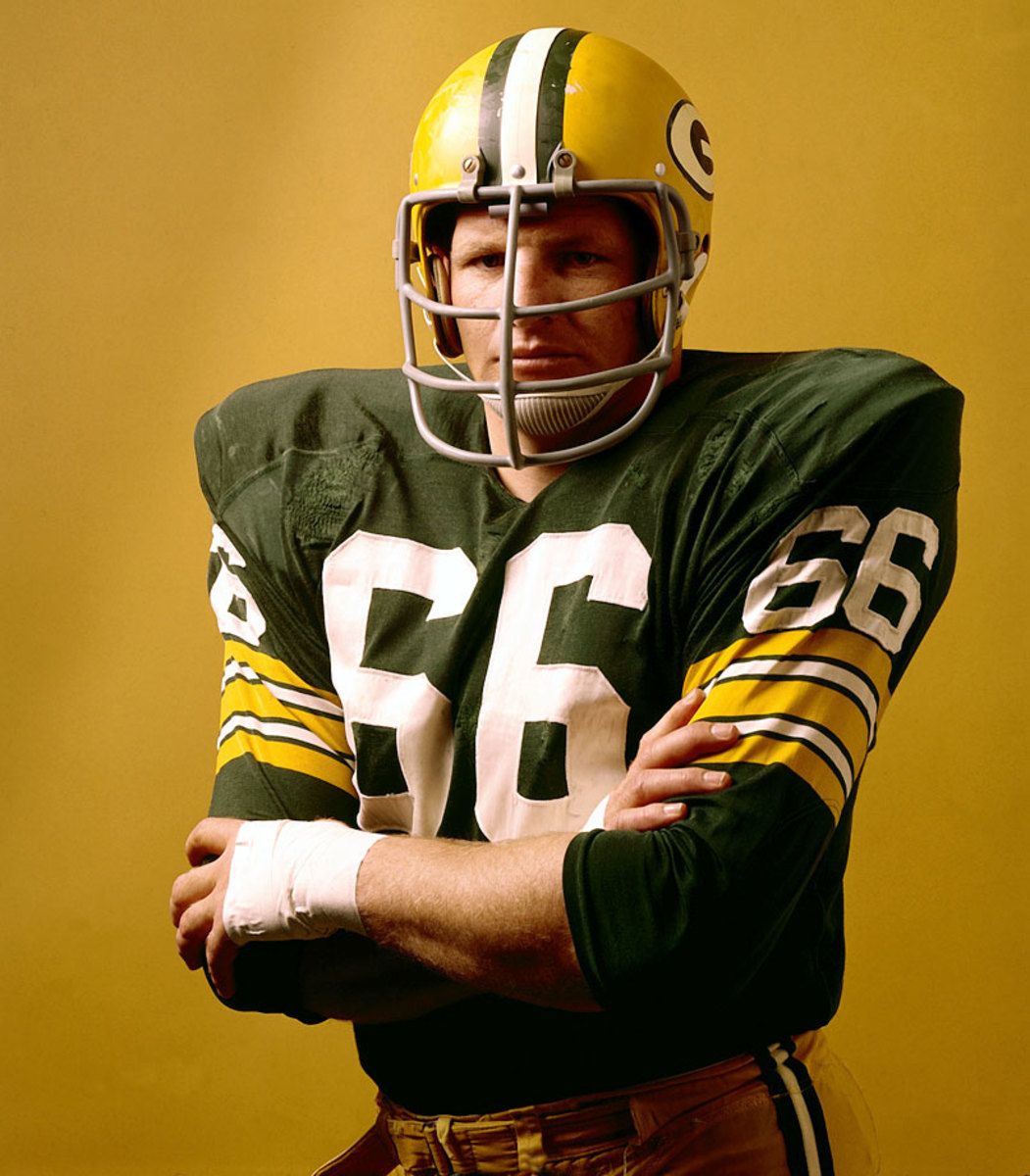
Few players ever got more out of their talent than Nitschke, who was the human personification of Vince Lombardi's football philosophy. He was a mainstay on defenses that helped the Packers win five NFL titles and the first two Super Bowls. No mere headhunter, Nitschke logged 25 career interceptions in his esteemed career.
67 — Ed White
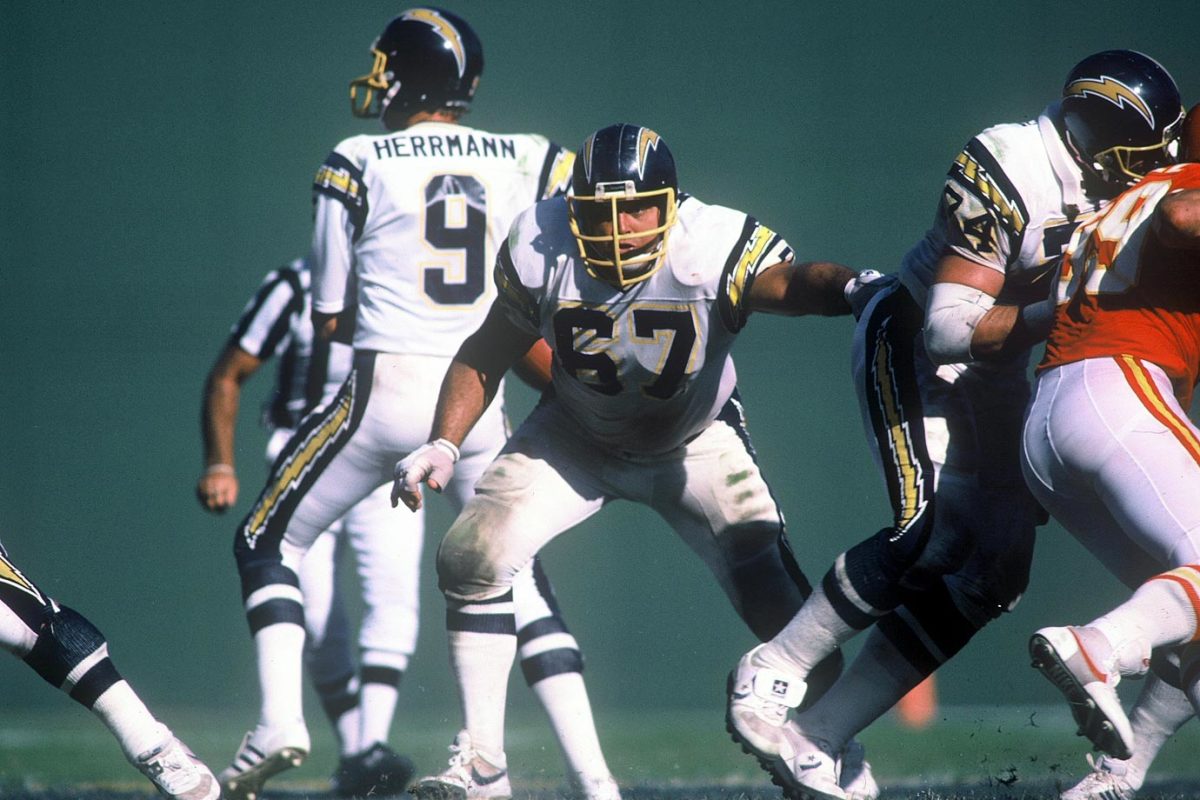
One of the more underrated players of his era, White was drafted by the Vikings just in time for their first Super Bowl season and manned the left and right guard spots during the four Super Bowls to come. In 1978, he became part of a Chargers offense that was the most explosive of its day under Don Coryell.
68 — Will Shields
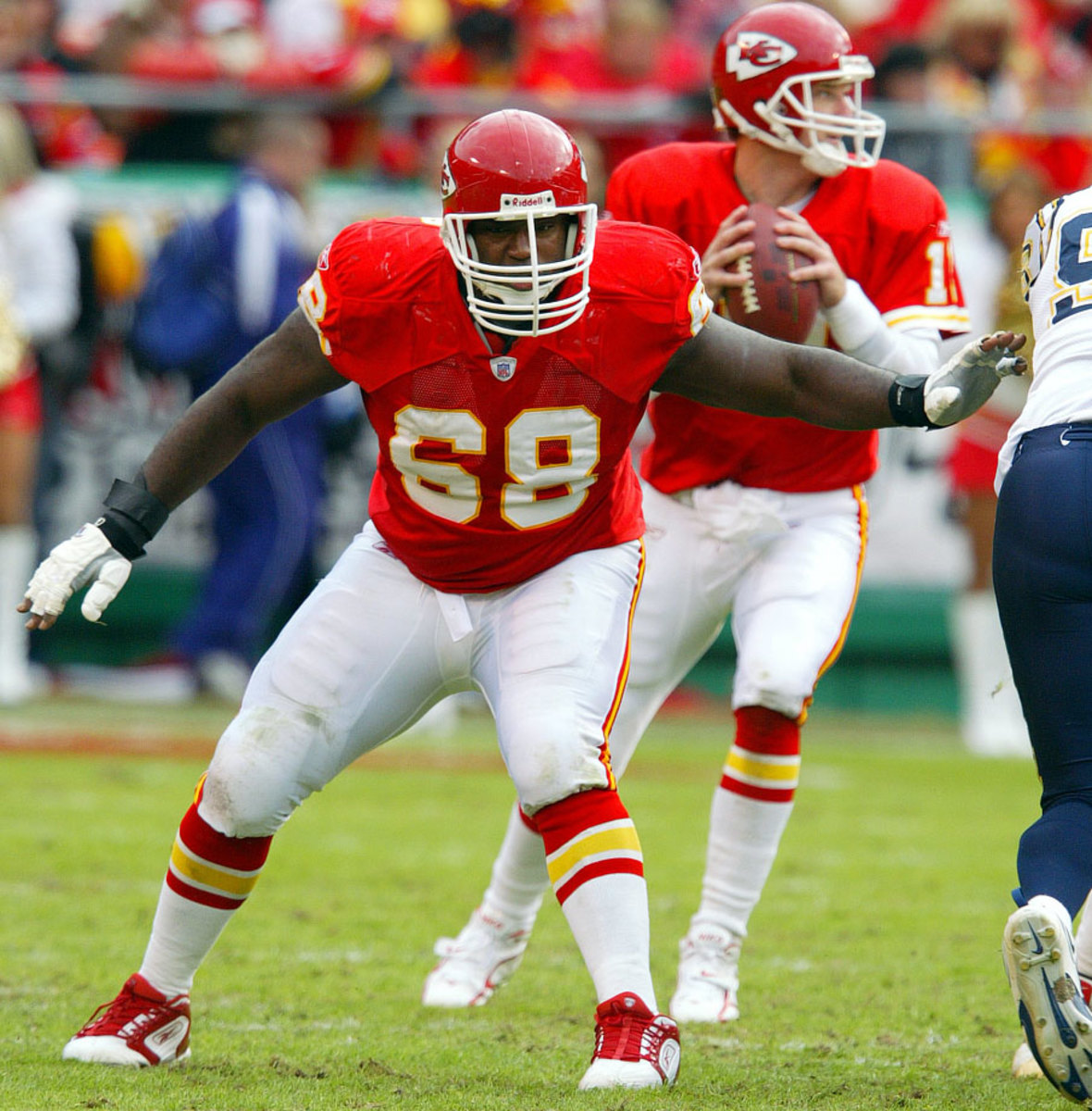
The Chiefs put Shields in his first NFL game after an injury to starter Dave Szott in 1993, and Shields never missed a game for the team until his retirement in 2006. He made 12 Pro Bowls and two first-team All-Pro squads in his career, and his rookie season marked the first division crown for Kansas City since 1971. The Chiefs led the NFL in total yards in 2004 and 2005, and Shields was a big part of that.
69 — Jared Allen
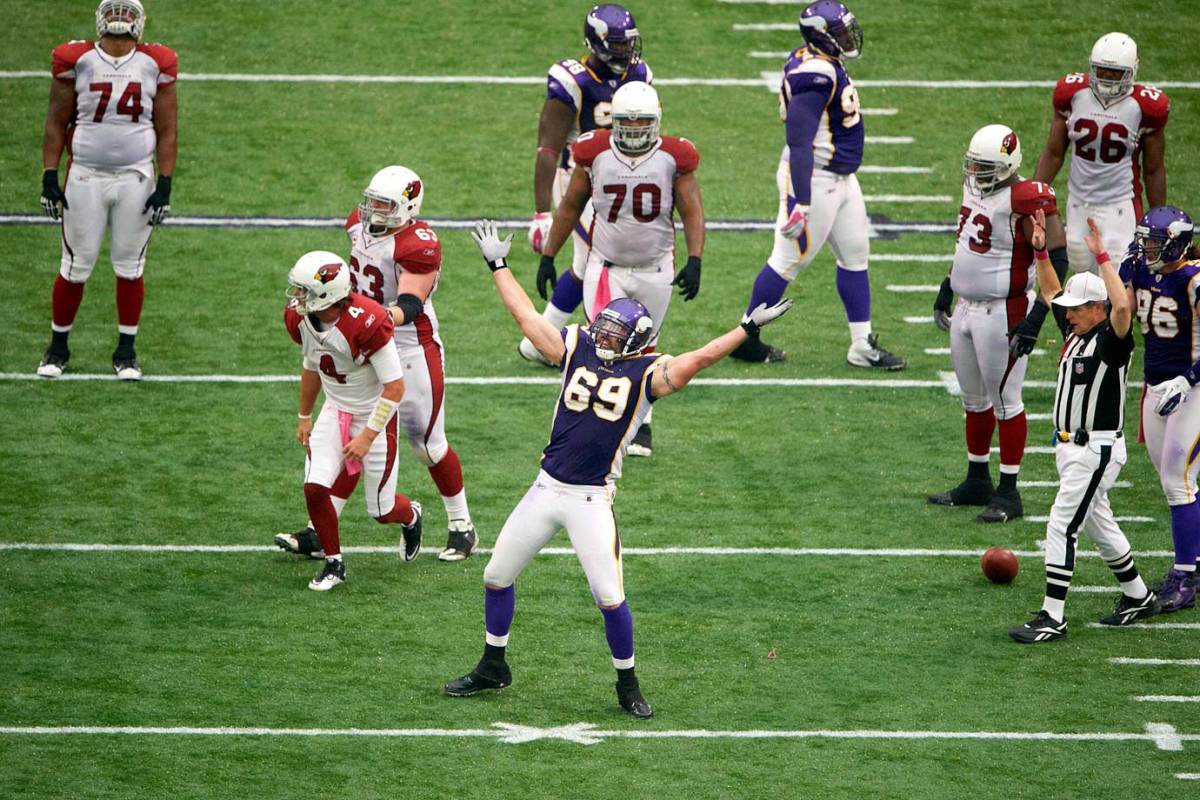
The first active player on our list, Allen put up a league-leading 15.5 sacks for the Chiefs in 2007 before Kansas City traded him to the Vikings for a first-round pick and two third-round picks the following spring. The Vikings then signed Allen to a six-year, $72.36 million deal, then the richest given to a defensive player in league history. Allen lived up to that contract with 85.5 sacks over six years in Minnesota, including 22 in 2011, tied for the second-highest single-season total of all time.
70 — Jim Marshall
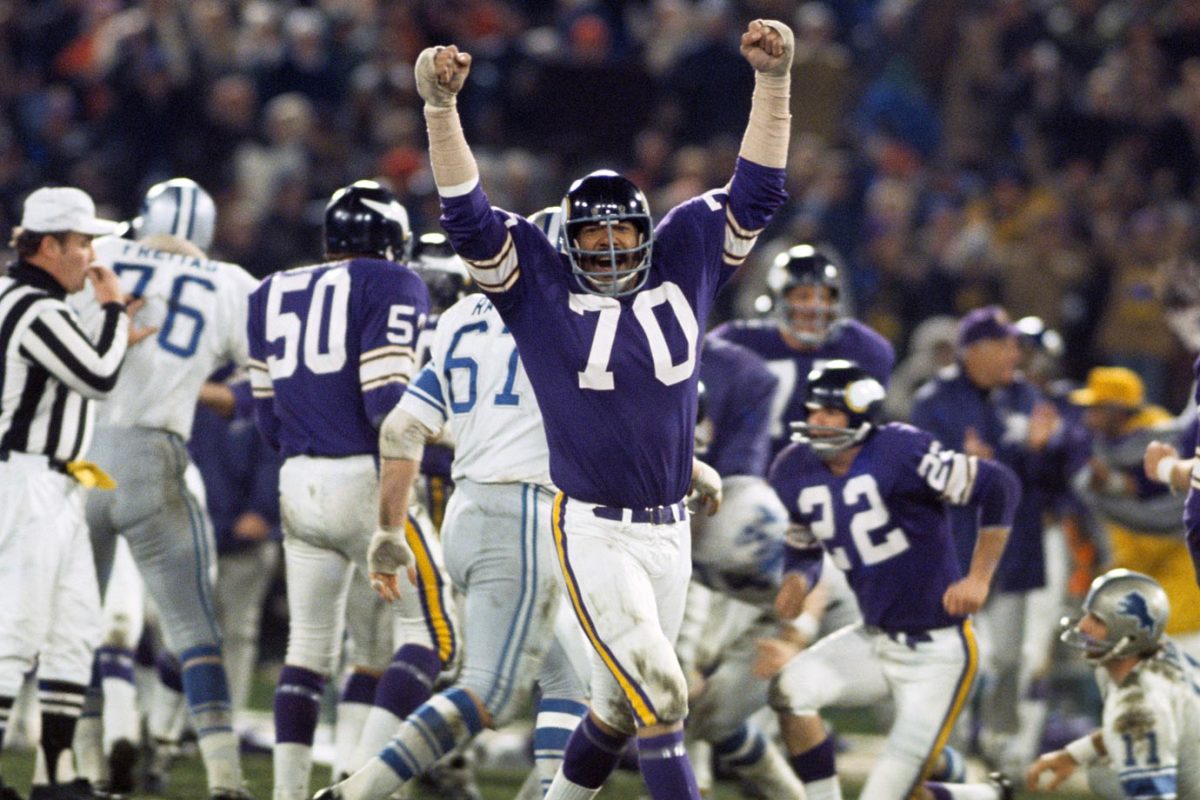
Perhaps the most glaring omission from the Hall of Fame, Marshall started 270 straight games for the Vikings, an incredible mark for a lineman. In his final game, he picked up two sacks and even played a bit of offensive tackle before his teammates carried him off the field. The Vikings credit him with 127 unofficial quarterback sacks, and he played in all four of Minnesota's Super Bowls. He was overshadowed by Alan Page and Carl Eller on the Purple People Eaters line, but he deserves his own bust in Canton.
71 — Walter Jones
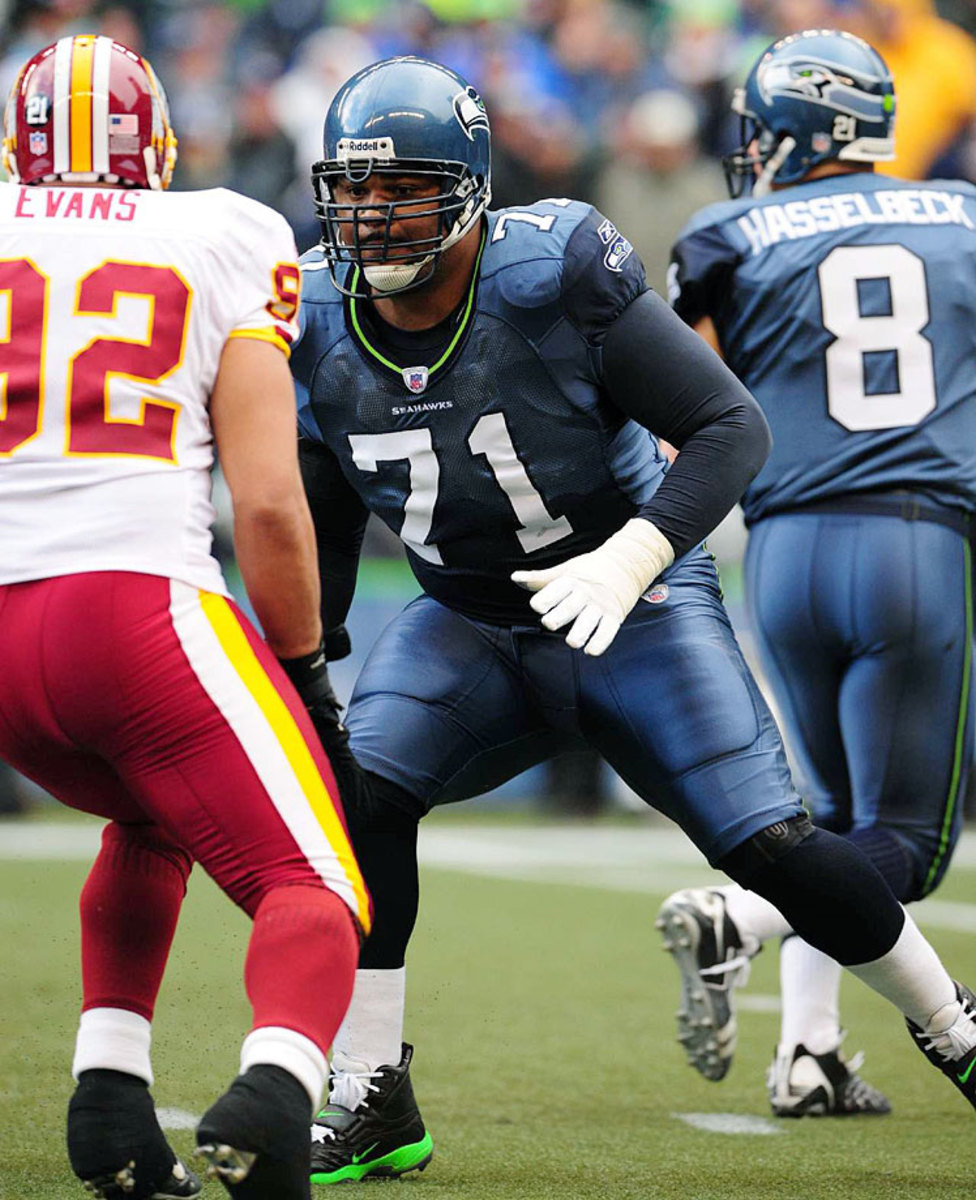
Jones is the best player in Seahawks history and arguably the best tackle in an era that also featured Jonathan Ogden and Orlando Pace. At his peak, Jones was able to do everything you'd expect from a blocker, shutting down the game's greatest pass rushers and dominating in the run game. His block on Carolina's Mike Rucker in the 2005 NFC Championship Game is perhaps the most unforgettable play in Seattle football annals. Jones made nine All-Pro teams and four first-team All-Pro squads in his career.
72 — Dan Dierdorf
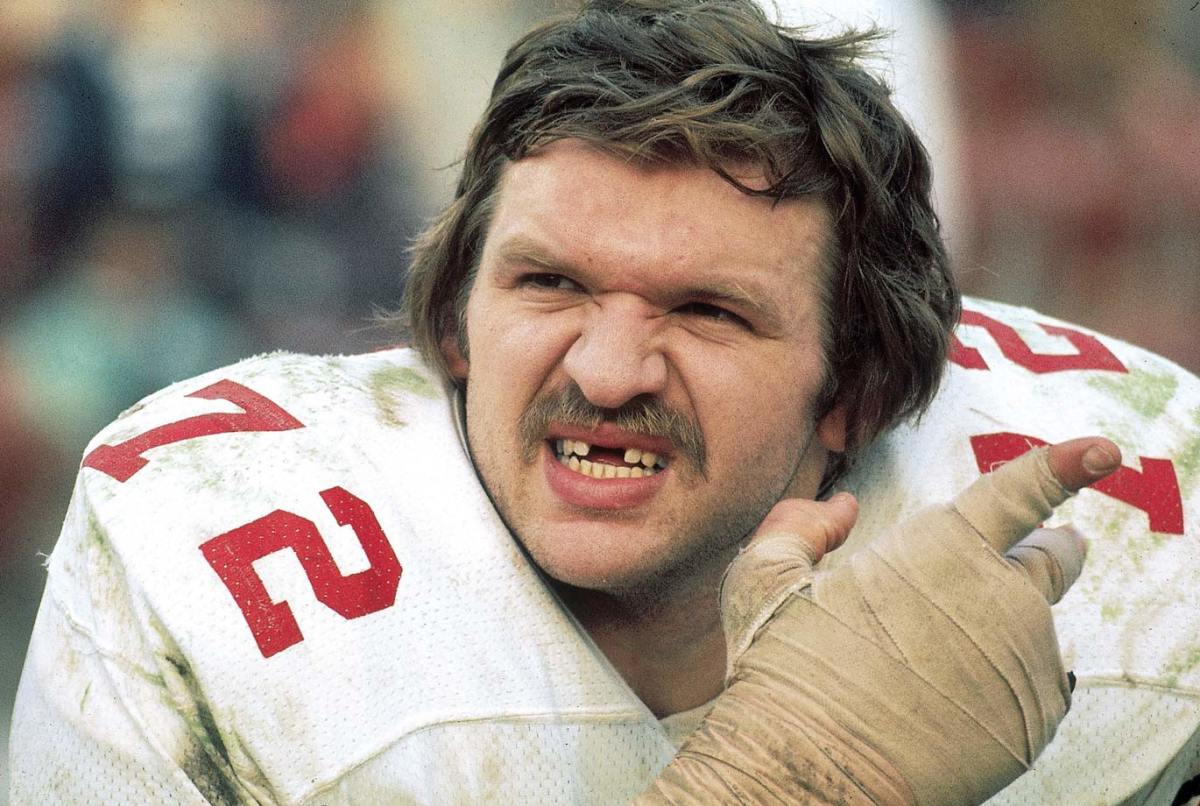
Opponents universally respected Dierdorf as a man whose game intelligence and pure physical strength made him nearly impossible to beat. The Canton, Ohio native became St. Louis's full-time right tackle in 1973, and the Cardinals offense took off with it. In Don Coryell's pass-heavy offense, the Cards allowed the fewest sacks in the NFC for half a decade, and gave up an amazing eight sacks in 355 passing attempts. Dierdorf also played some center against some of the strongest nose tackles of his era and gave no quarter.
73 — John Hannah
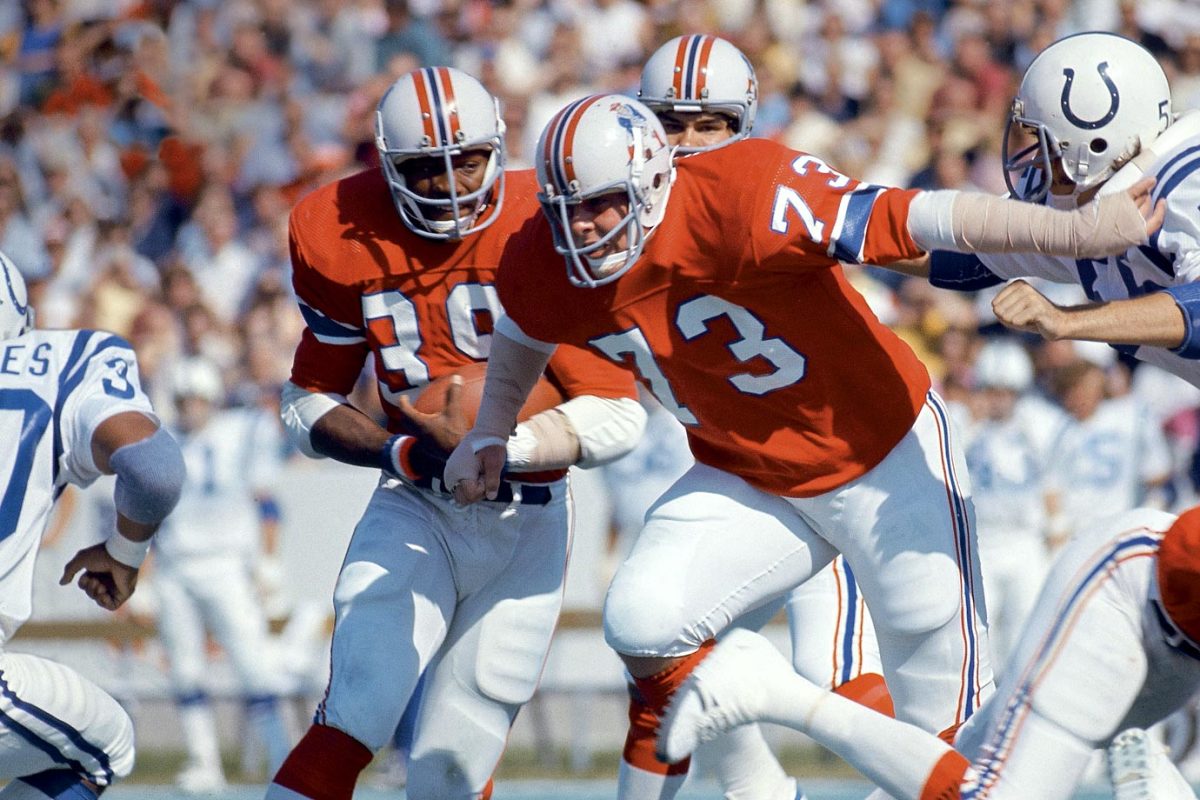
Hannah is brought up as the greatest guard in NFL history more than anyone else. The nine-time Pro Bowler and seven-time first-team All-Pro moved from the Wishbone offense at Alabama to a more complex set of schemes without missing a beat, bringing every bit of his power and savvy with him.
74 — Merlin Olsen
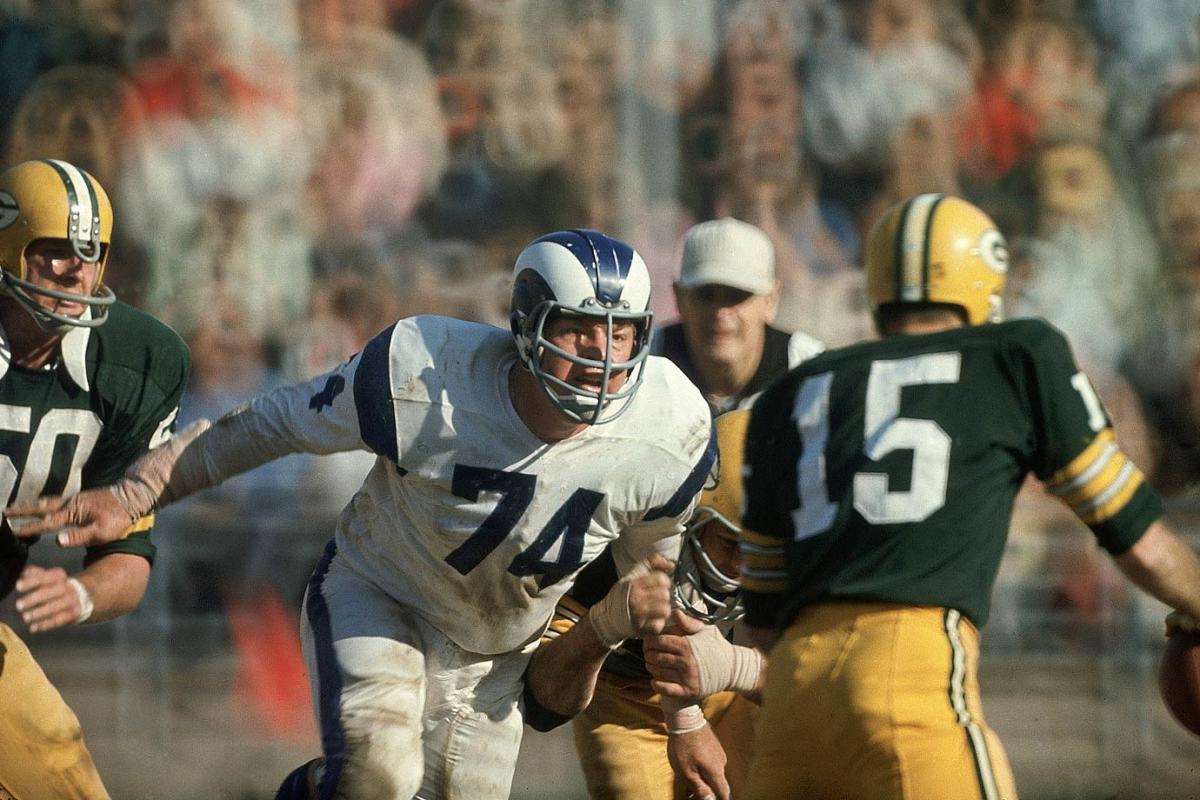
While Deacon Jones gets all the name-checks when people talk about the Rams' Fearsome Foursome front line, it's Olsen who was the greatest and most consistent player of the bunch. A 14-time Pro Bowler, Olsen brought the intelligence he used to get a degree in economics and develop a successful acting career to the field, and few could match his effectiveness. While all was chaos around him, Olsen would diagnose the offensive play and, more often than not, blow it up.
75 — Joe Greene
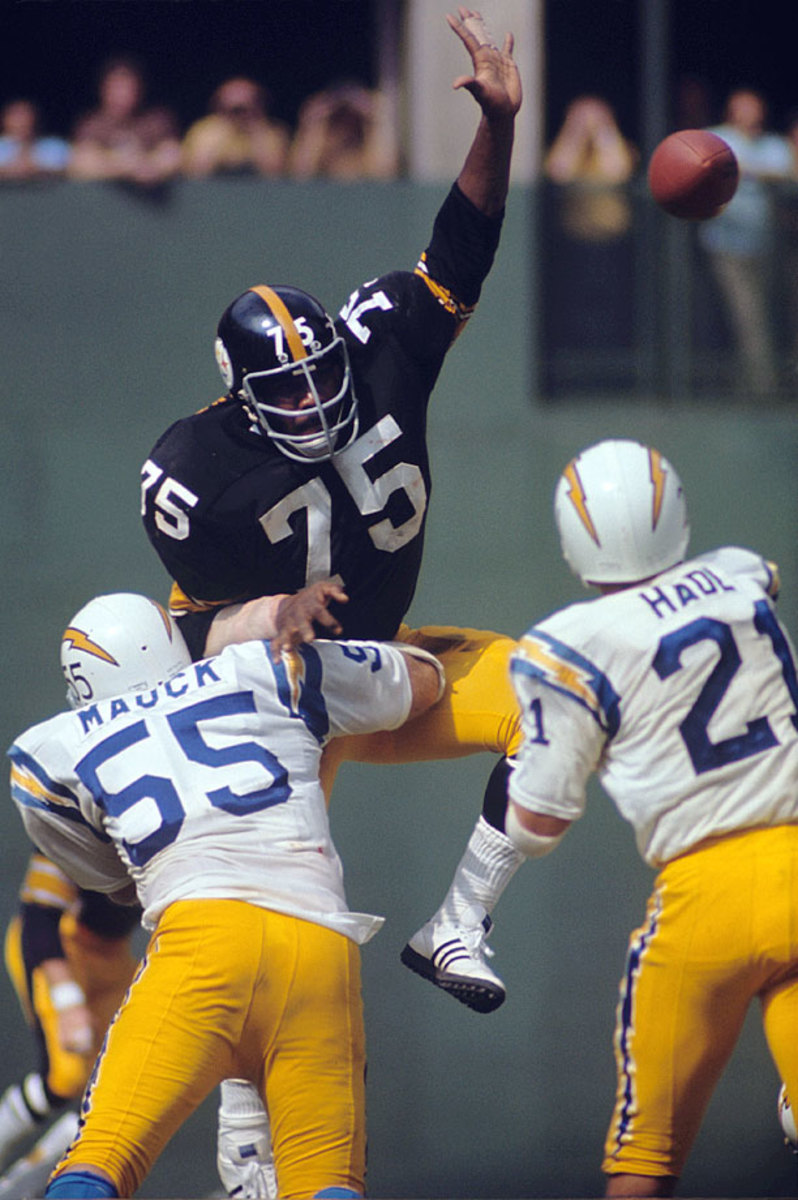
In 1974, Greene and the Steelers coaching staff devised the “Stunt 4–3”, in which Greene slanted to the center at a 45-degree angle. It made Greene even more unblockable than he had been before, which is saying something, as Greene was on the path that would eventually make him perhaps the greatest defensive tackle of all time. Sack totals were unofficial during his career, but he's unofficially credited with 11 sacks in 1972 and five sacks in one game against the Houston Oilers.
76 — Orlando Pace
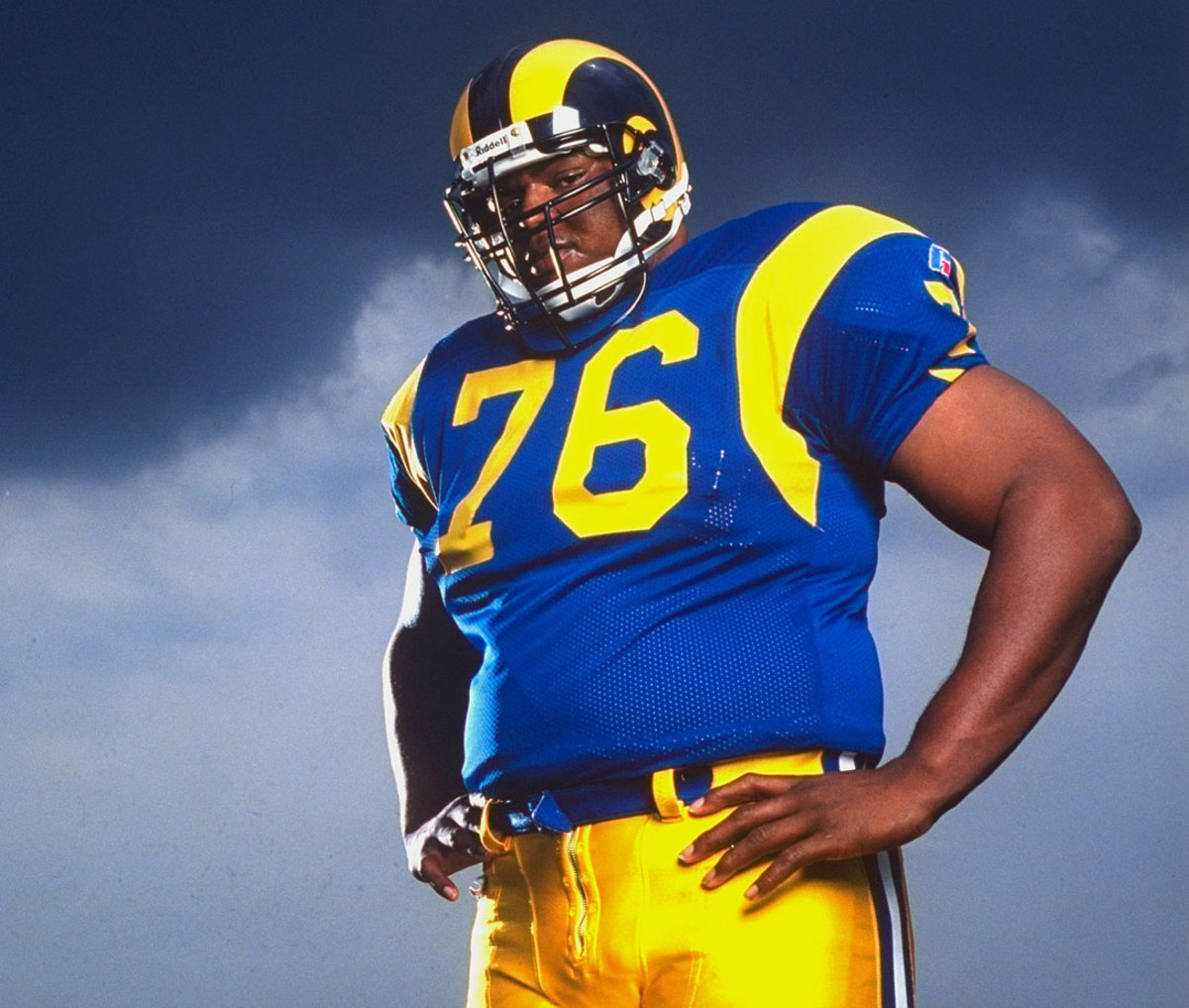
When Pace was selected by the Rams in 1997, the team had been dismal for a long time. It's no coincidence that the rise of the Greatest Show on Turf offense and the team's subsequent success started with Pace's arrival. This year was Pace's first year of eligibility for the Hall of Fame, and the seven-time Pro Bowler will get in sooner rather than later.
77 — Willie Roaf
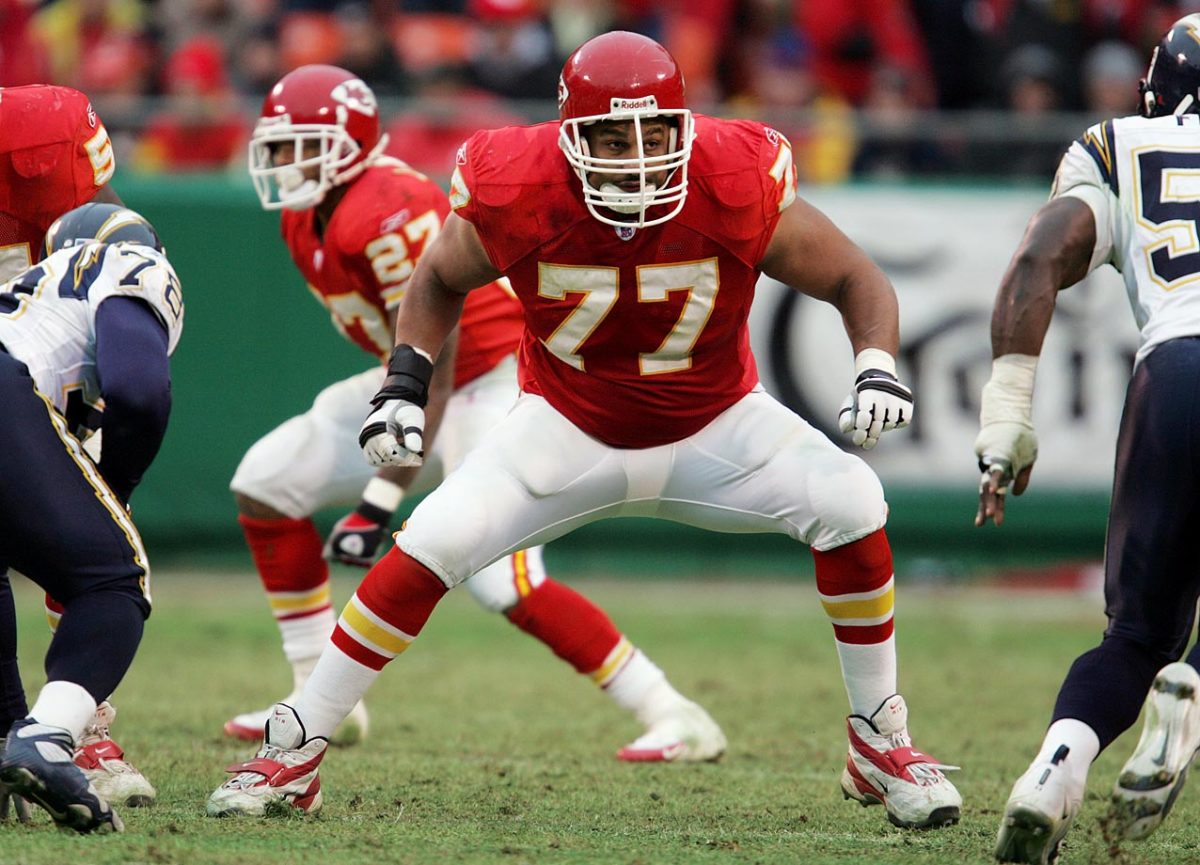
The Saints' first-round pick in 1993, Roaf played every single snap at right tackle in his first NFL season, earning All-Rookie honors. He spent the next 12 seasons on the left side, putting together a legacy of strength and technique that few tackles of his era could match. Traded from New Orleans to Kansas City in 2002, Roaf ended his career the way he started it: with four straight Pro Bowl selections.
78 — Bruce Smith
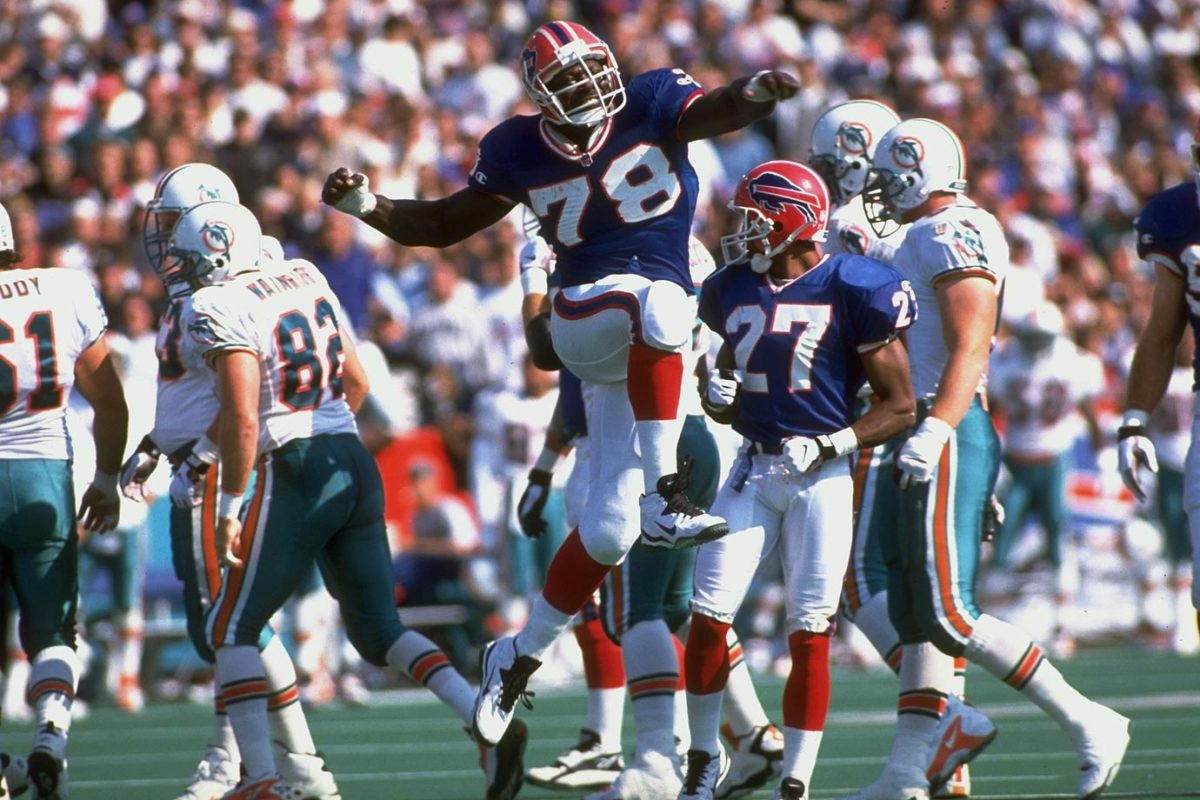
Smith is the NFL's all-time sack leader with 200, which is an amazing achievement when you consider that he spent the majority of his career as a 3–4 defensive end, double- and triple-teamed on the inside of the pass rush. He recorded 10 or more sacks in 13 seasons, which no other NFL player has ever done, and he was named to the All-Decade team for both the 1980s and 1990s. His 1990 season, in which he amassed 19 sacks and 101 tackles, will likely never be equaled by any pure 3–4 end ever again.
79 — Ron McDole
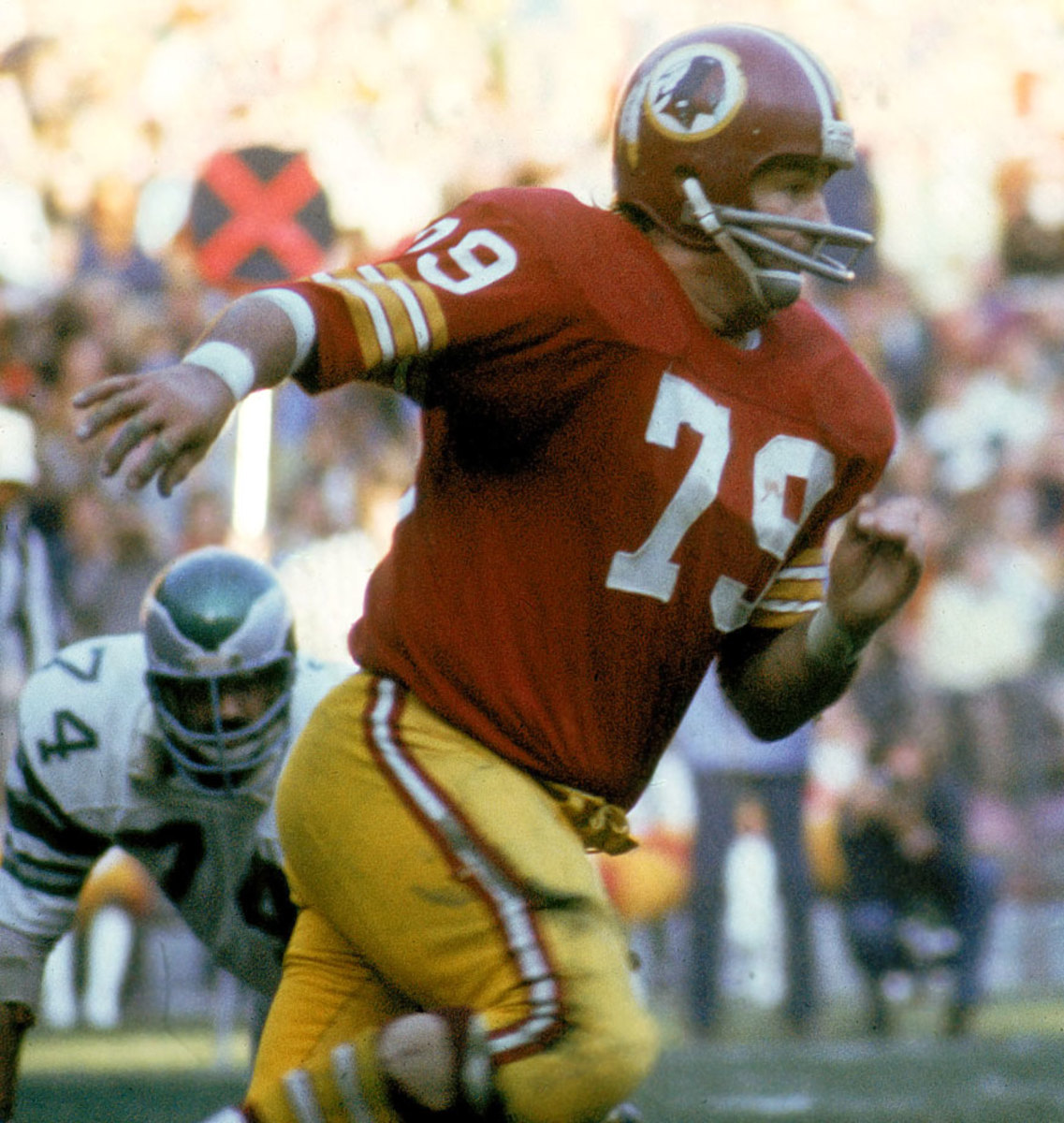
The AFL was known as an offensive league, but it had some great defenses as well, and few were better than the Bills defenses of the mid-1960s. McDole was a major part of that, as he was a big cog in the “Over-the-Hill Gang” defenses assembled by George Allen for the Washington Redskins in the 1970s. McDole finished his career with 12 interceptions, the most ever for a defensive lineman.
80 — Jerry Rice
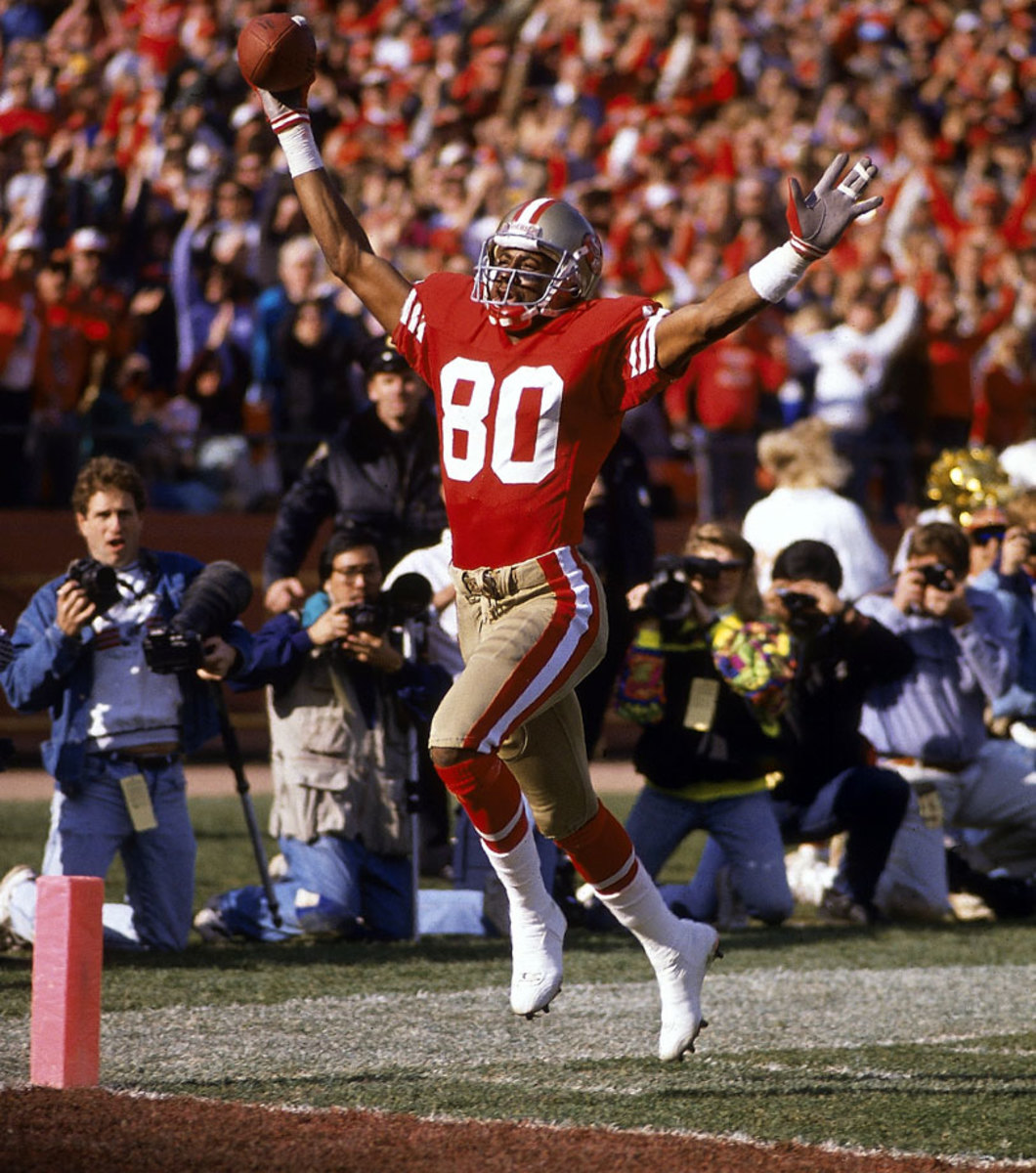
By the end of his 20-year career, Rice was a 13-time Pro Bowler and 10-time first-team All-Pro with 1,549 receptions for 22,985 yards and 197 touchdowns, and he had claimed every NFL record he possibly could. He also holds nearly every postseason receiving record.
81 — Carl Eller
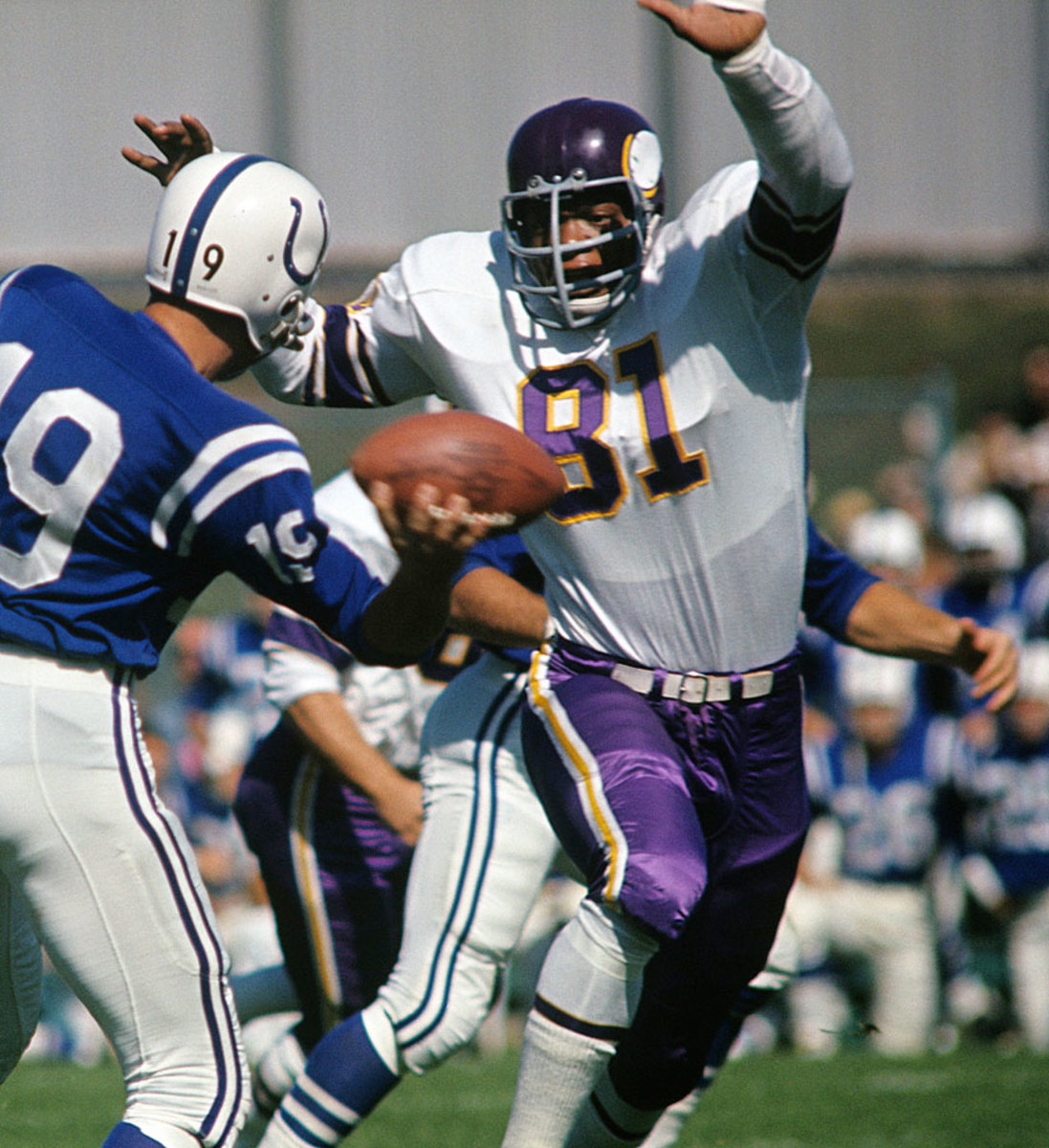
It took Eller nearly 20 years to find his way to the Hall of Fame, which seems silly in retrospect. Unofficially, he put together 44 sacks from 1975 through '77 at the peak of the Purple People Eaters' greatness, and his 23 fumble recoveries was an NFL record when he retired. He didn't miss a game from '64 through '75, and he played in all four of Minnesota's Super Bowls.
82 — Ozzie Newsome
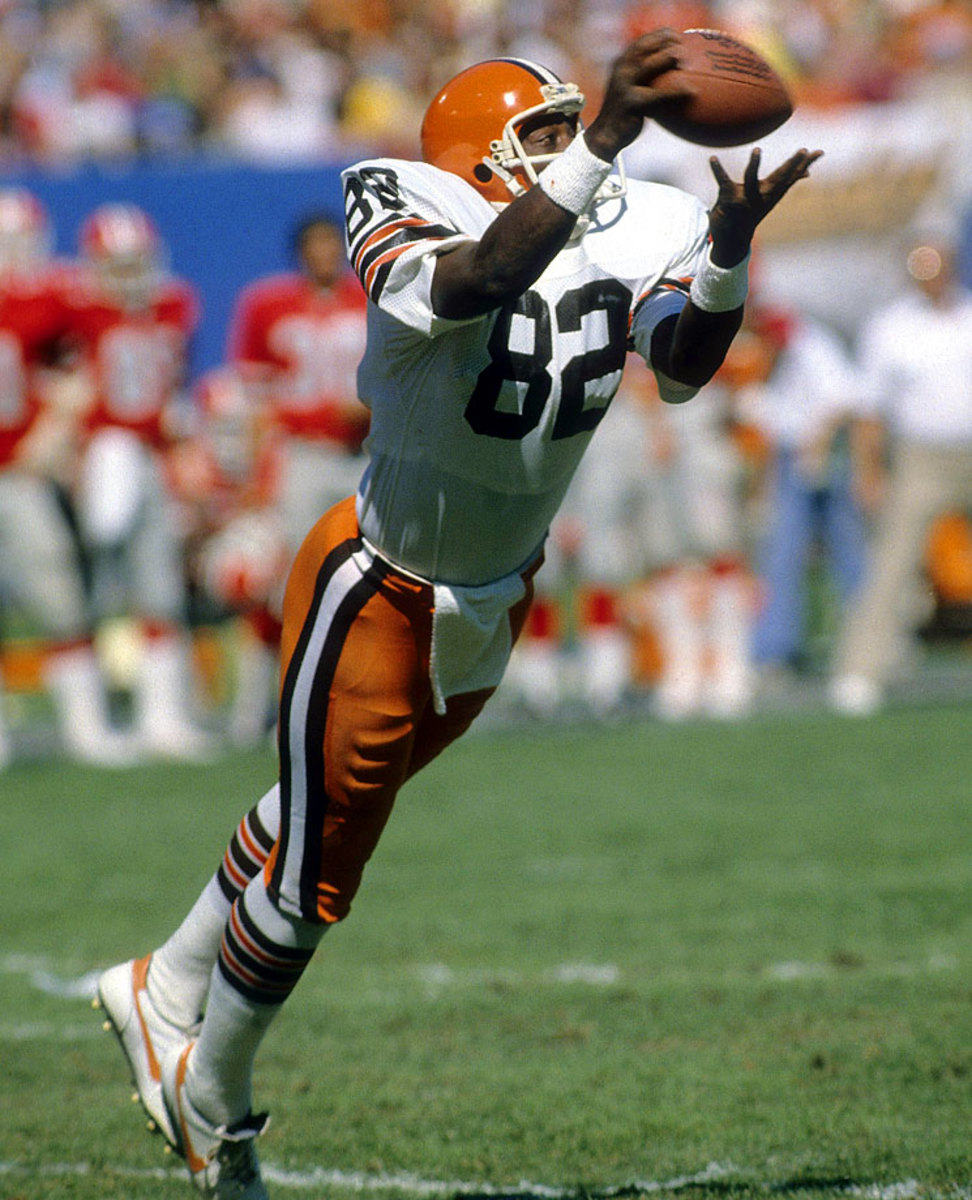
Kellen Winslow is credited by many as the NFL's first modern tight end, but Newsome's contributions were just as lasting. He had two 1,000-yard seasons in the 1980s, which was atypical for the position at the time. He retired as the leading receiver among tight ends with 662 catches for 7,080 yards and 47 touchdowns. Add in his time as an executive for the Browns and Ravens, and there are few in his era who have had a broader impact on the game.
83 — Ted Hendricks
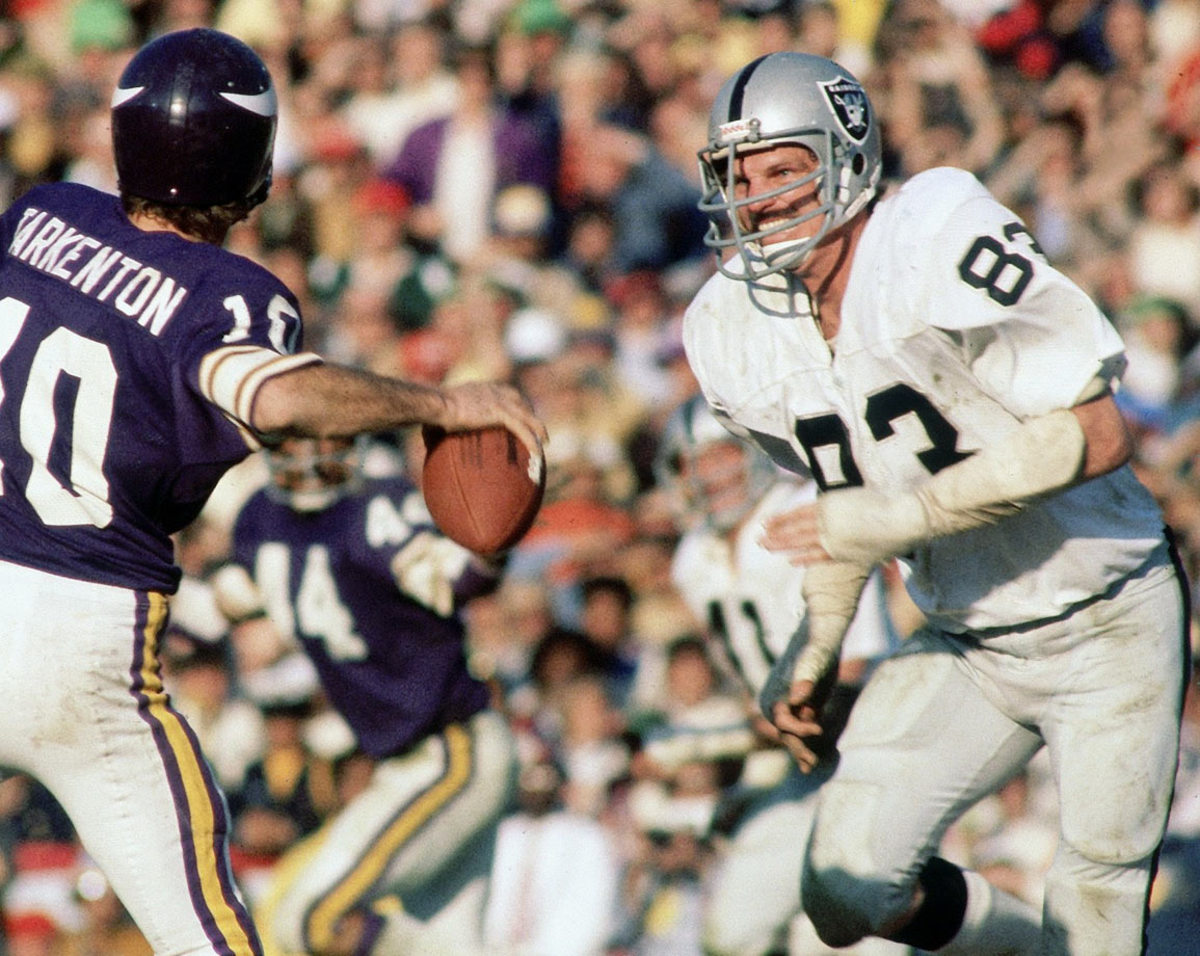
The Mad Stork was one of the smartest players of his (or any) time, often sniffing plays out before they happened and gleefully yelling to opposing coaches what he'd done. At 6'7" and 220 pounds, the eight-time Pro Bowler and four-time first-team All-Pro logged 26 interceptions and was an absolute nightmare on special teams, blocking punts and kicks all over the place. Sacks were an official stat for his final two seasons, and he put up seven in 1982, making one wonder how many he really had throughout his career.
84 — Randy Moss
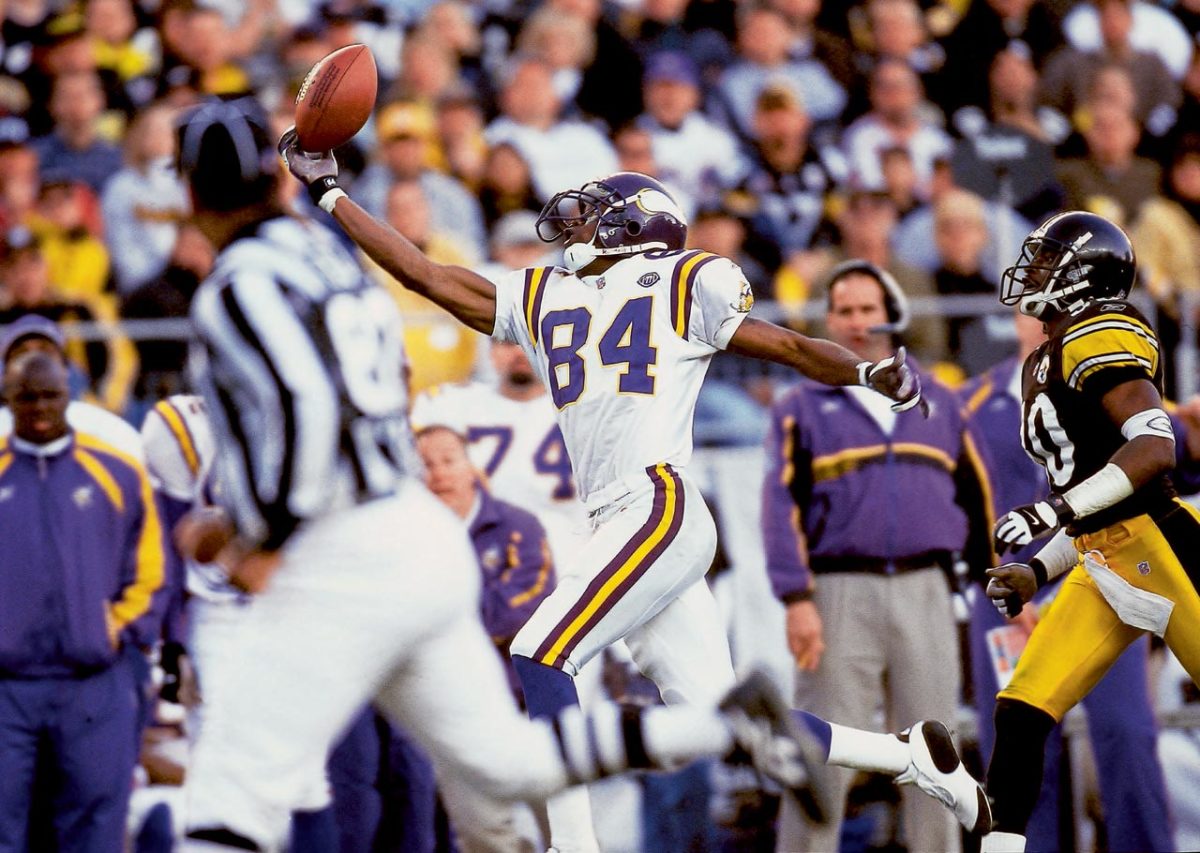
The number of teams Moss played for speaks to his mercurial nature, but at his best, he was absolutely impossible to cover. He was unstoppable in his early days in Minnesota, where he led the league with 17 touchdown receptions as a rookie, and he was certainly that way with the Patriots in 2007, when he tied Jerry Rice's record with 23 touchdowns. Those two offenses are the two highest-scoring in league history, and Moss was the main target for both.
85 — Nick Buoniconti
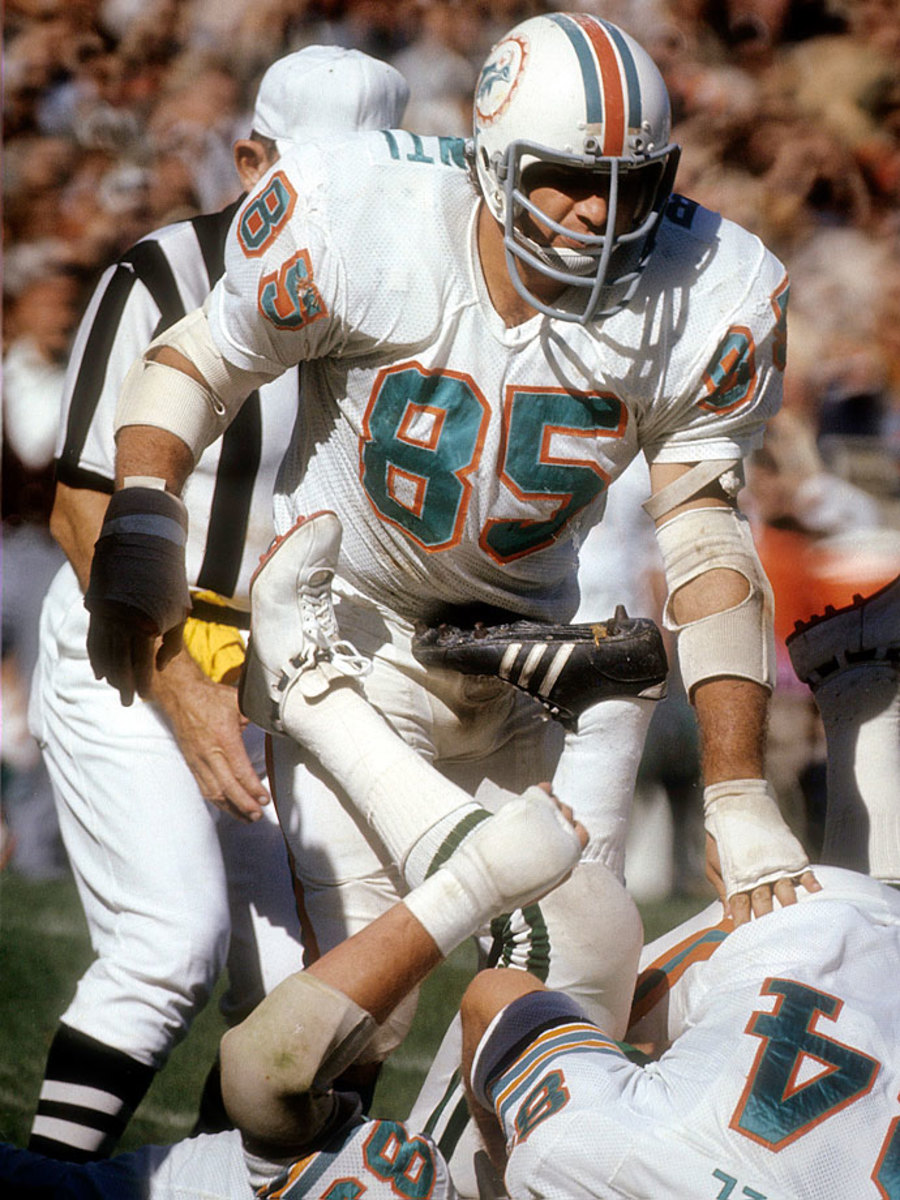
Buoniconti was a key cog for the great New England defenses in the 1960s, but his star really rose when he joined the Dolphins in 1969 and became the fulcrum of Bill Arnsparger's fabled defenses. From 1971 through '73, the Dolphins lost just five games, appeared in the Super Bowl every year, won two and put together the NFL's only perfect season in '72.
86 — Buck Buchanan
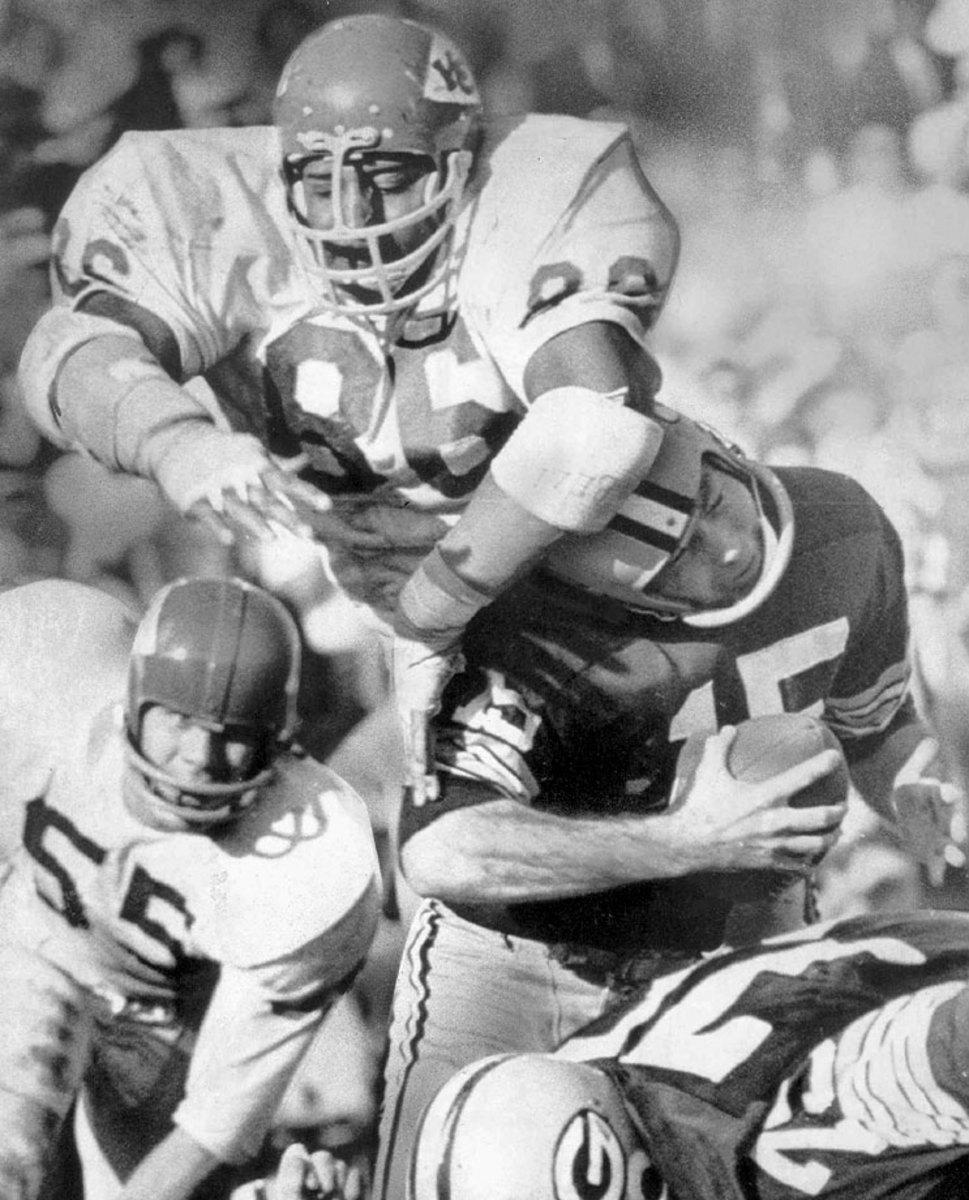
A giant man with astonishing physical gifts, the 6'7", 270-pound Buchanan was clocked at 4.9 in the 40-yard dash, and Grambling coach Eddie Robinson said that Buchanan was the best lineman he'd ever coached. Buchanan carried that to the pros, playing in two Super Bowls and making eight Pro Bowl squads.
87 — Willie Davis
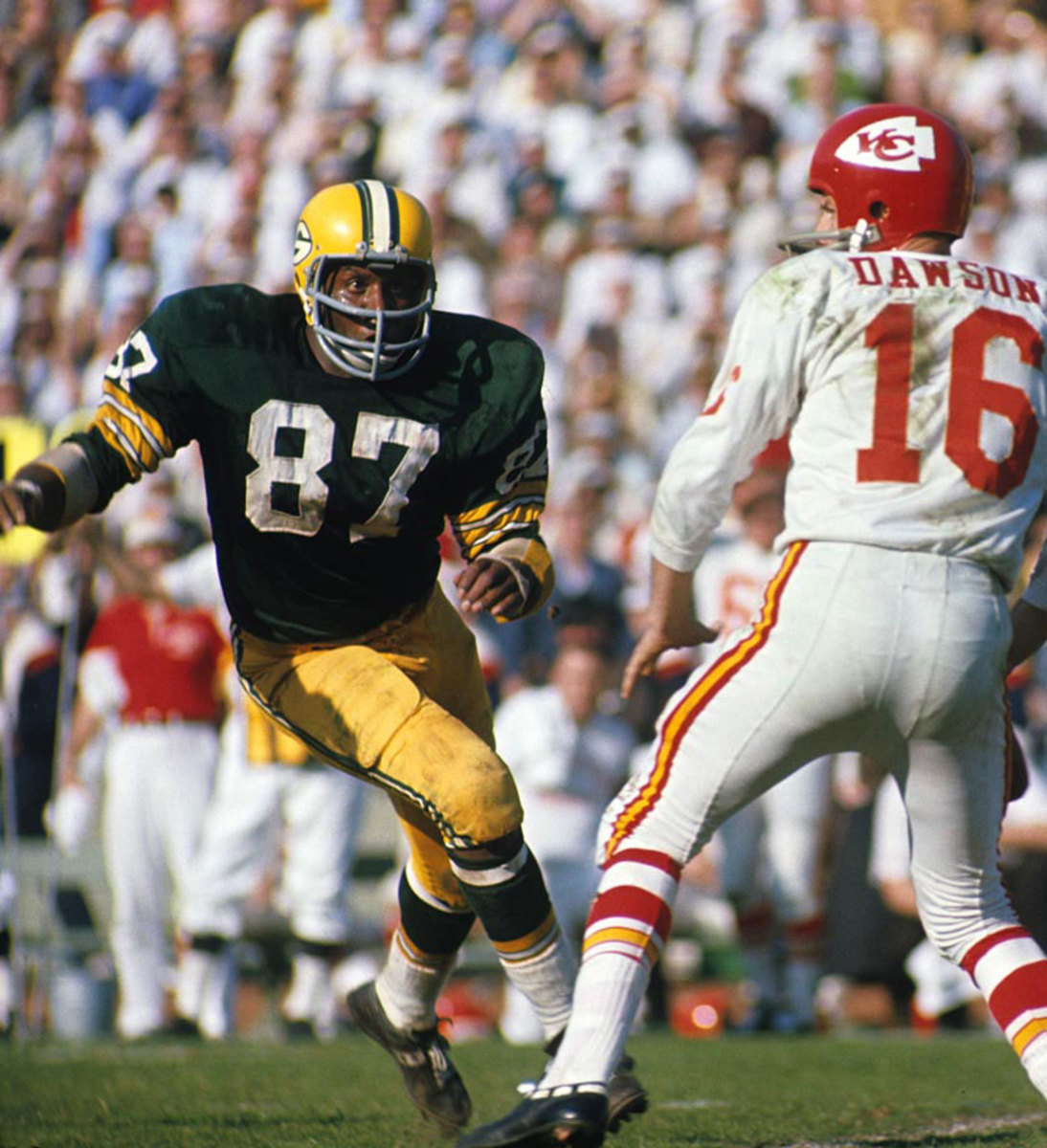
Of all the players Vince Lombardi ever coached, Davis was regarded as the smartest and most disciplined. It was said that the coach would only yell at Davis when he needed to prove that he'd yell at anybody. Davis was on board for all of Green Bay's five NFL titles and two Super Bowl wins in the 1960s.
88 — Alan Page
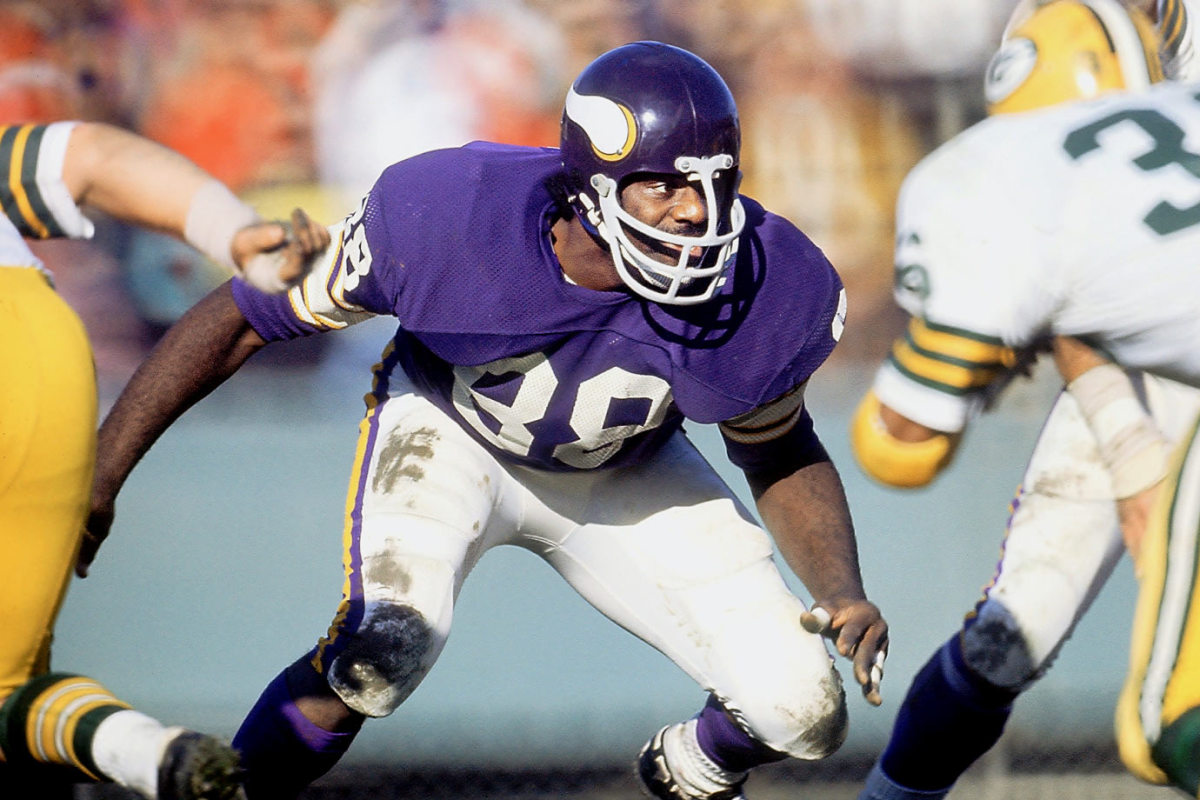
The Minnesota defensive line was full of talent, but there was little doubt that Page was the best of the lot. He won the NFL's Most Valuable Player award in 1971, a nearly unprecedented honor for a defensive player, and he made nine Pro Bowls with six first-team All-Pro honors. Waived by the Vikings in 1978, he went on to play in the formative years of the great Bears defenses of the 1980s.
89 — Mike Ditka
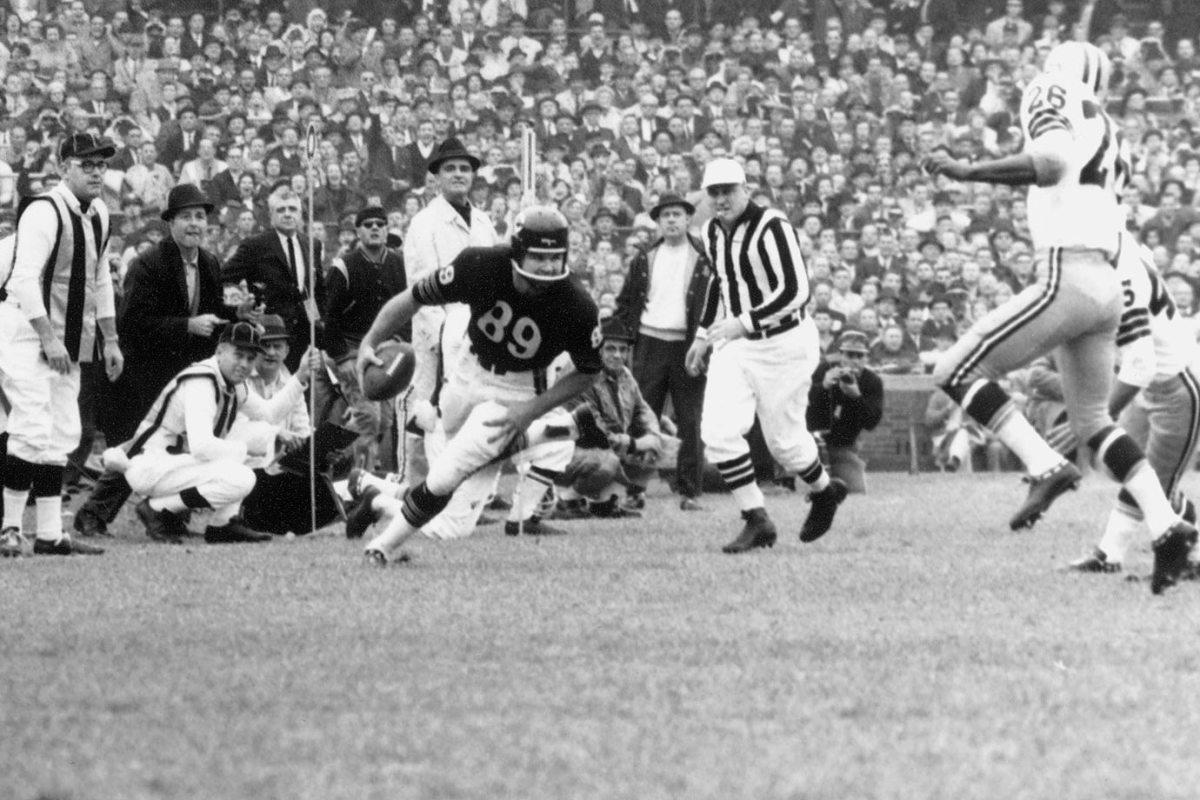
Tough and unbending, Ditka came into the NFL with a bang, catching 56 passes for 1,076 yards and 12 touchdowns in his rookie campaign, and playing a part in the Bears' 1963 NFL championship victory. He was also one of the best blockers of his era, and he developed a taste for coaching as he moved from Chicago to Philadelphia to Dallas. A longtime assistant to Tom Landry, Ditka got his shot as Chicago's head coach in 1982, and three years later, guided the Bears to their first championship since that 1963 season.
90 — Ndamukong Suh
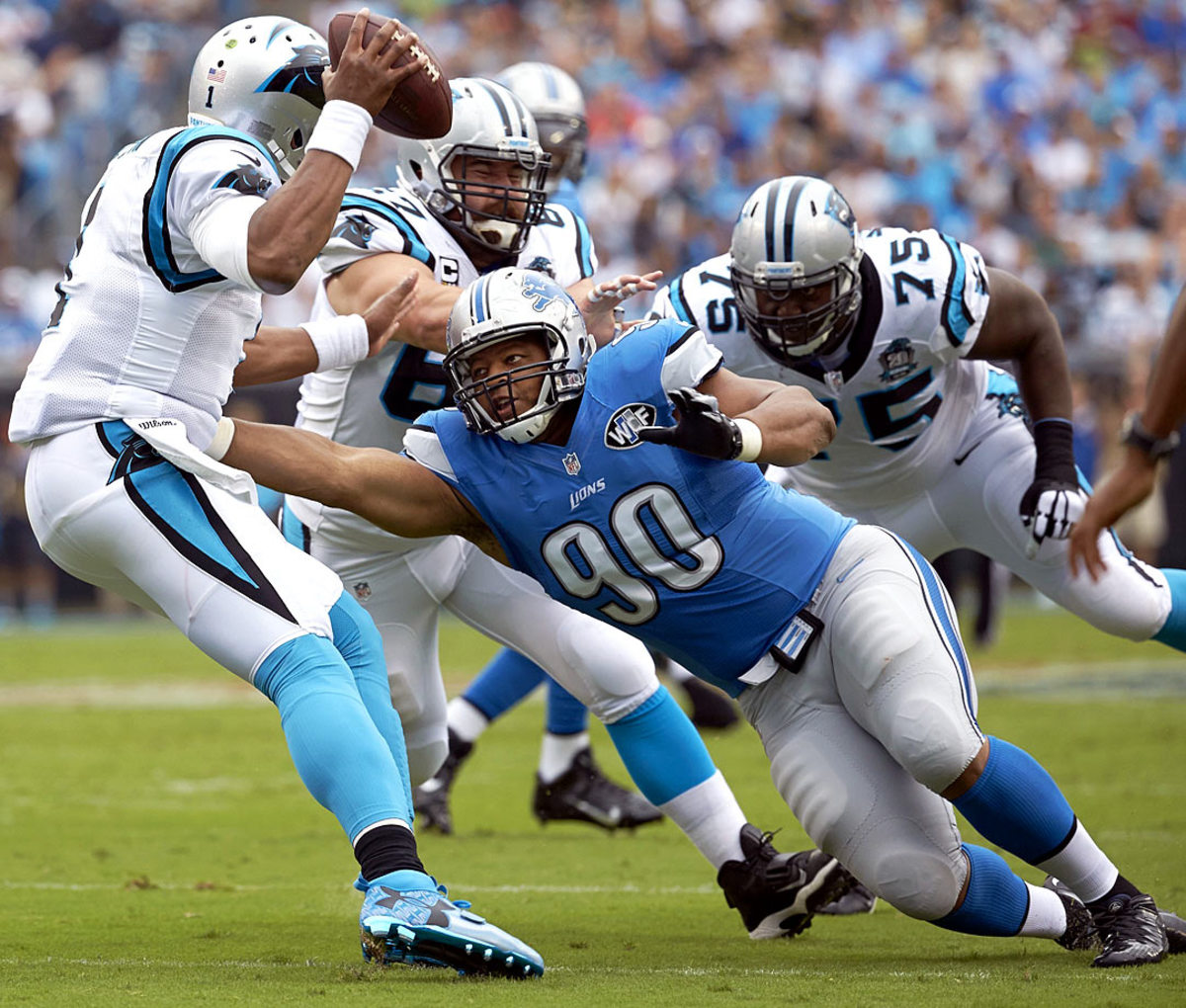
All apologies to defensive tackle Neil Smith, but Suh has been the most dominant and disruptive defensive tackle wearing number 90 of the Super Bowl era. In his first five seasons, the four-time Pro Bowler and three-time first-team All-Pro logged 36 sacks, often proving to be unblockable despite the constant presence of double teams. He signed a six-year, $114 million deal with the Dolphins in March.
91 — Kevin Greene
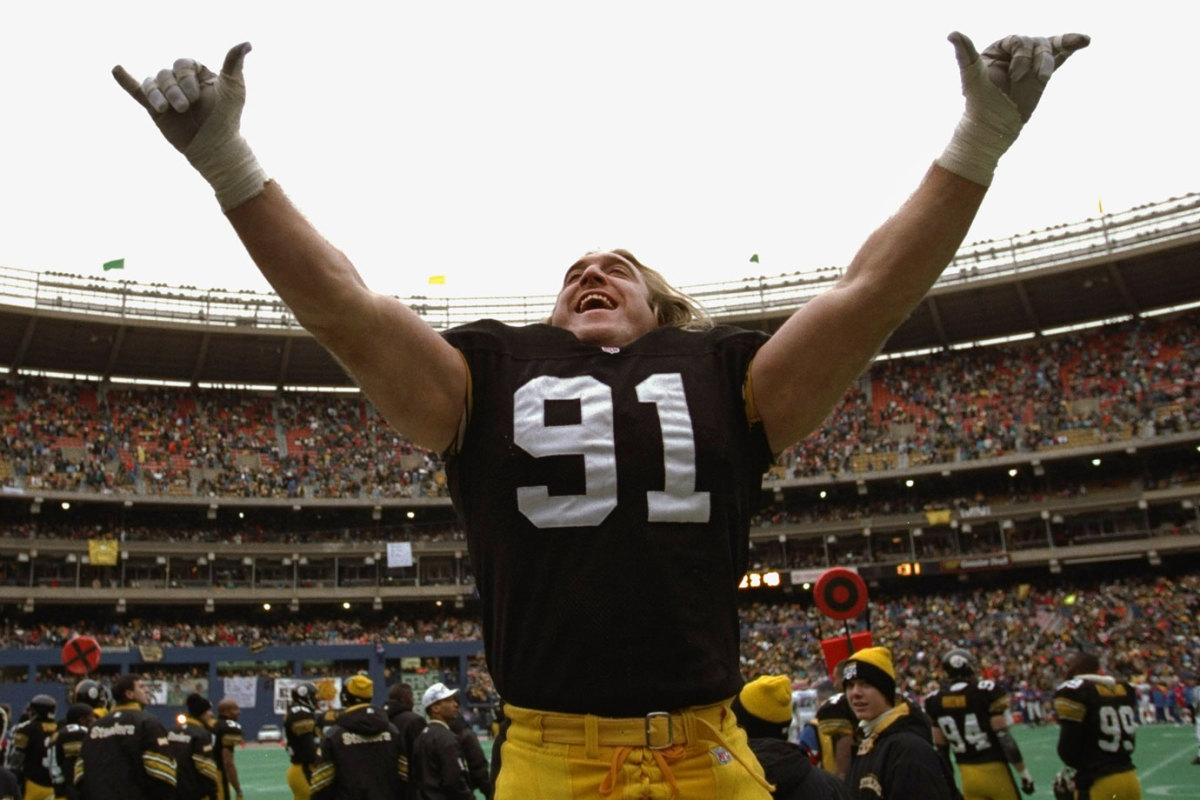
Who has the third most sacks in NFL history, behind Bruce Smith and Reggie White? It's Greene, who amassed 160 in his career and was the NFL's sack king in two seasons. His best campaign came with the Panthers in 1996, when he racked up 14.5 sacks and recovered a fumble for a touchdown, but he's best known as a major part of Dick LeBeau's “Blitzburgh” defenses from '93 through '95.
92 — Reggie White
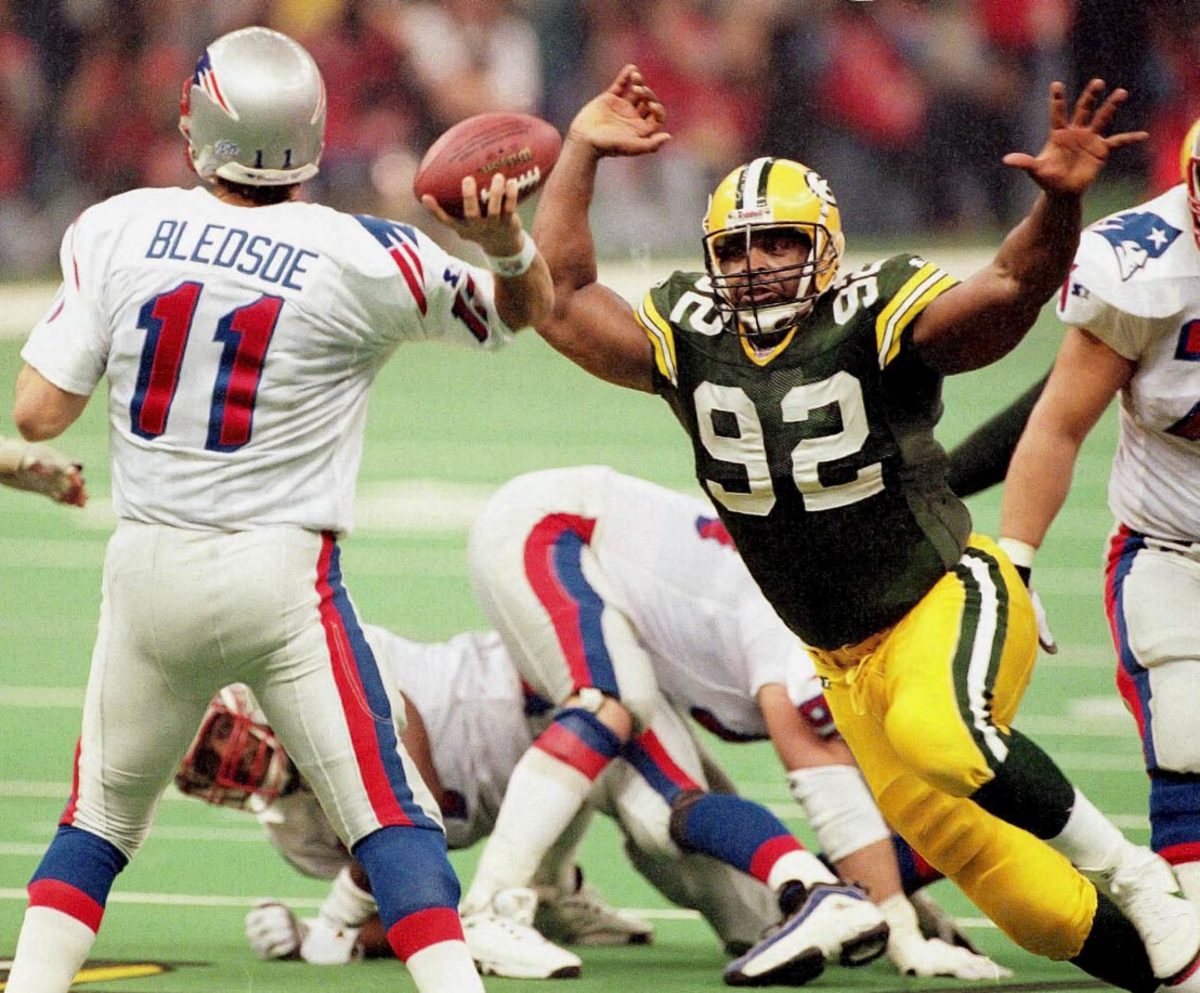
The gold standard among 4-3 defensive ends, White had a combination of strength and explosiveness that was simply unmatched and impossible to counter. He was dominant from his first plays in the NFL in 1985, putting up 124 sacks with the Eagles in eight years. White got his Lombardi Trophy with the Packers in Super Bowl XXXI, when he recorded three sacks and probably should have been the game's MVP.
93 — John Randle
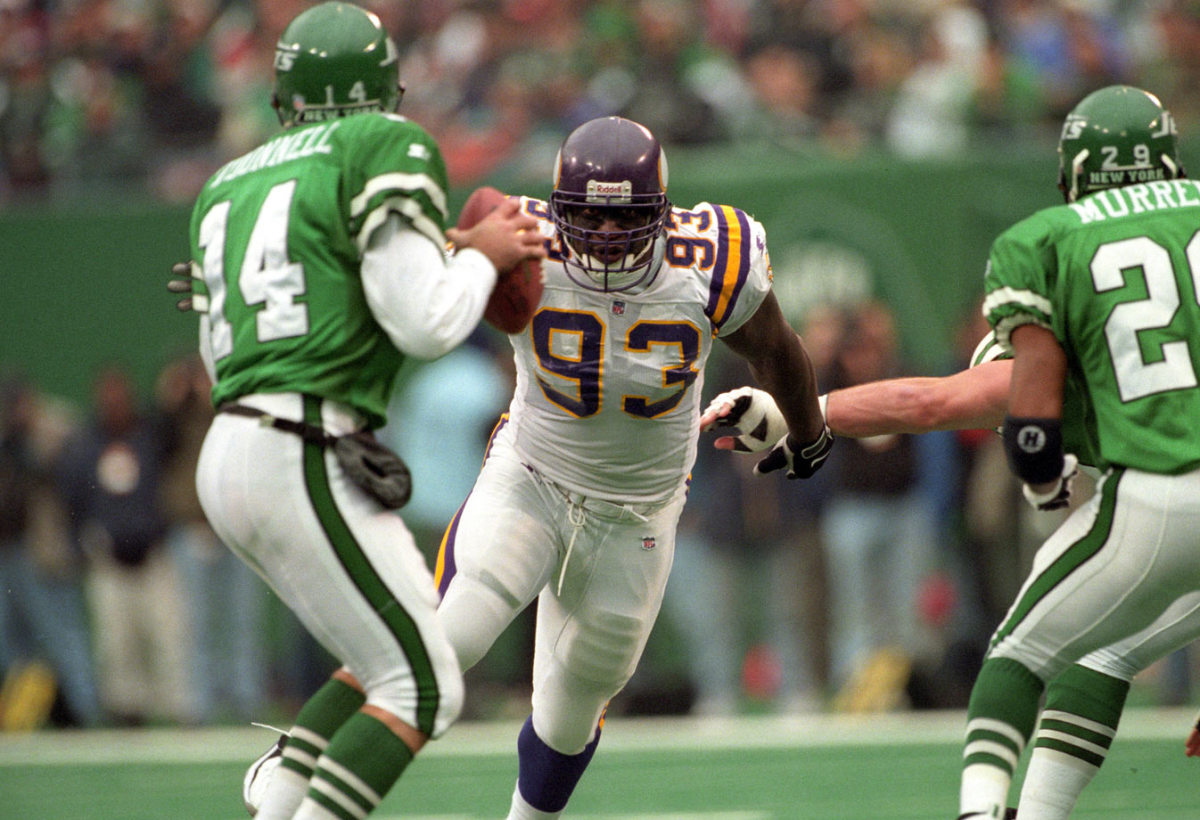
The 6'1", 290-pound Randle went undrafted out of Texas A&M-Kingsville, caught on with the Vikings and never looked back. With his amazing speed and leverage, Randle became the prototype of the modern three-technique tackle, putting up 137.5 sacks over his career, including 10 or more in eight straight seasons from 1992 through '99.
94 — DeMarcus Ware
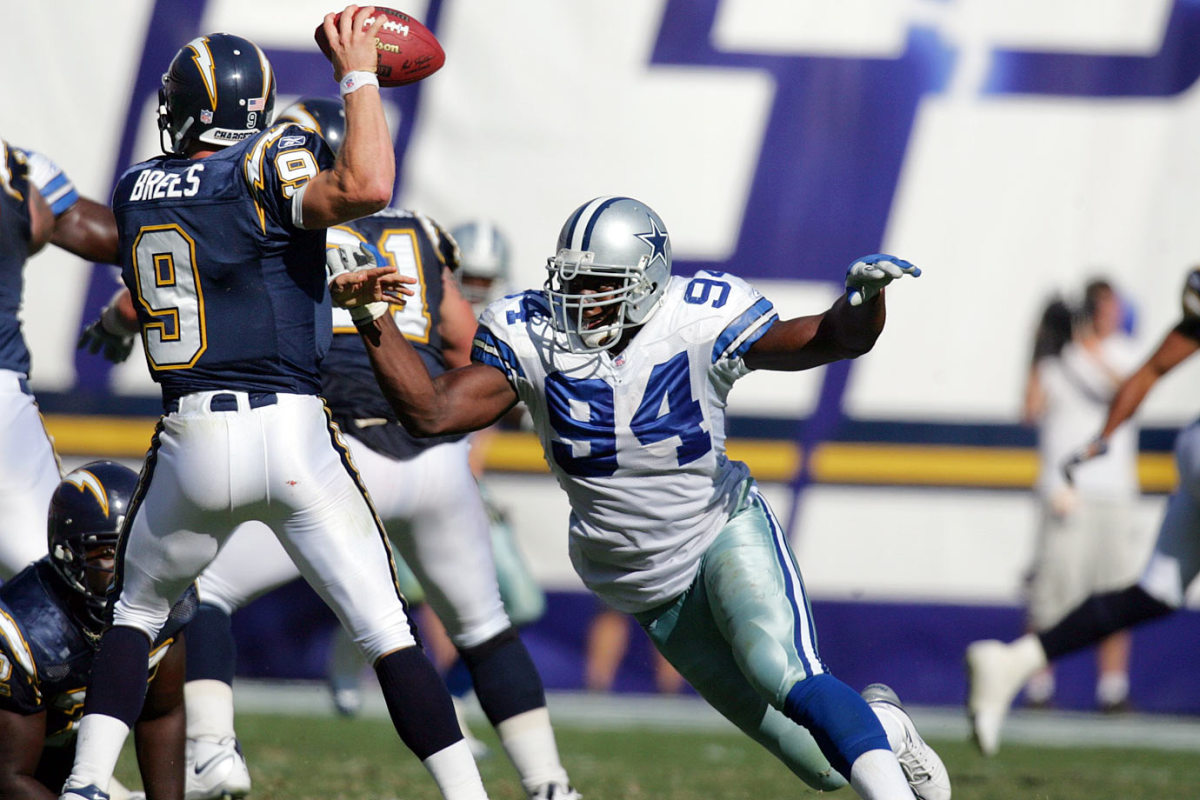
Charles Haley almost made the cut here, but we went with another former Cowboys pass rusher. Ware amassed 117 sacks over his eight seasons in Dallas, leading the league in 2008 and '10. He fell off a bit when schematic changes limited his role, but he picked up 10 sacks with the Broncos in '14 and appears ready to maintain his Hall of Fame trajectory.
95 — Richard Dent
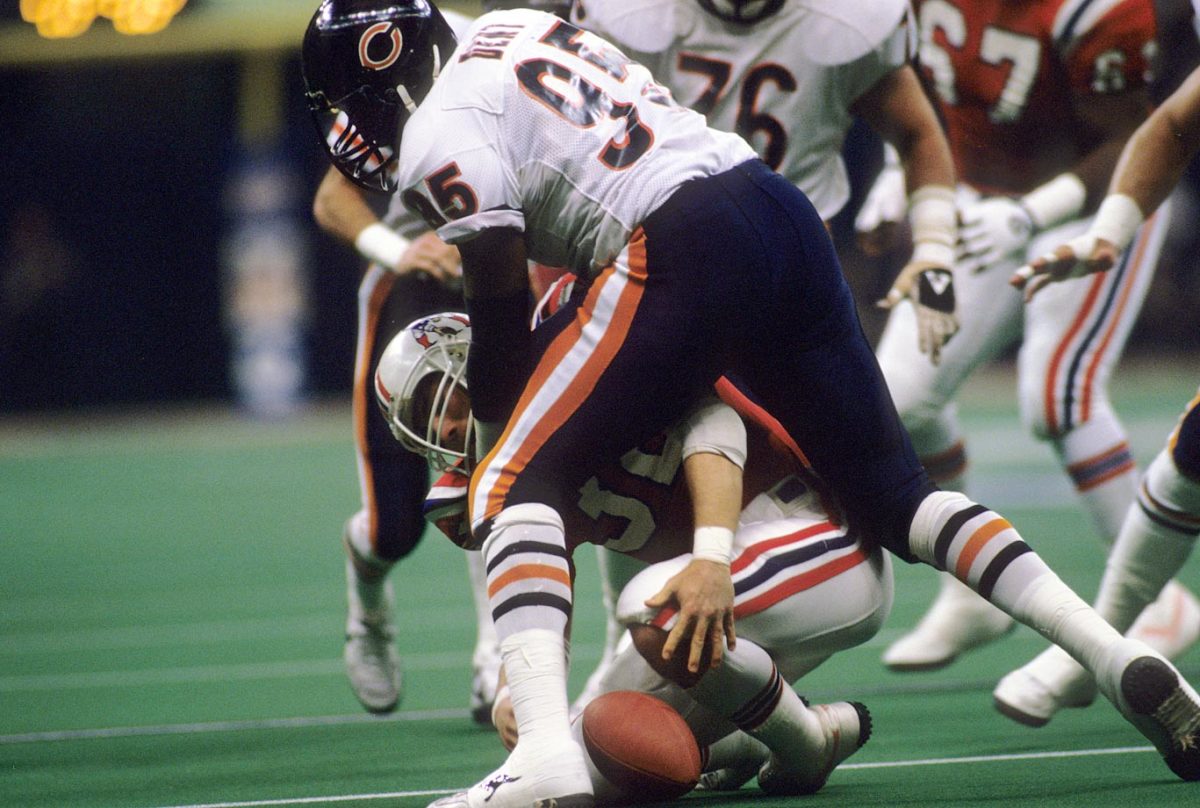
An eighth-round pick out of Tennessee State, Dent rose to unexpected heights as one of the most important parts of Buddy Ryan's 46 defense in Chicago. He was the MVP of Super Bowl XX, and he was highly effective into his later years, amassing 12.5 sacks in 1993 at age 33. He finished his career with 137.5 sacks, four Pro Bowls and one first-team All-Pro mention.
96 — Cortez Kennedy
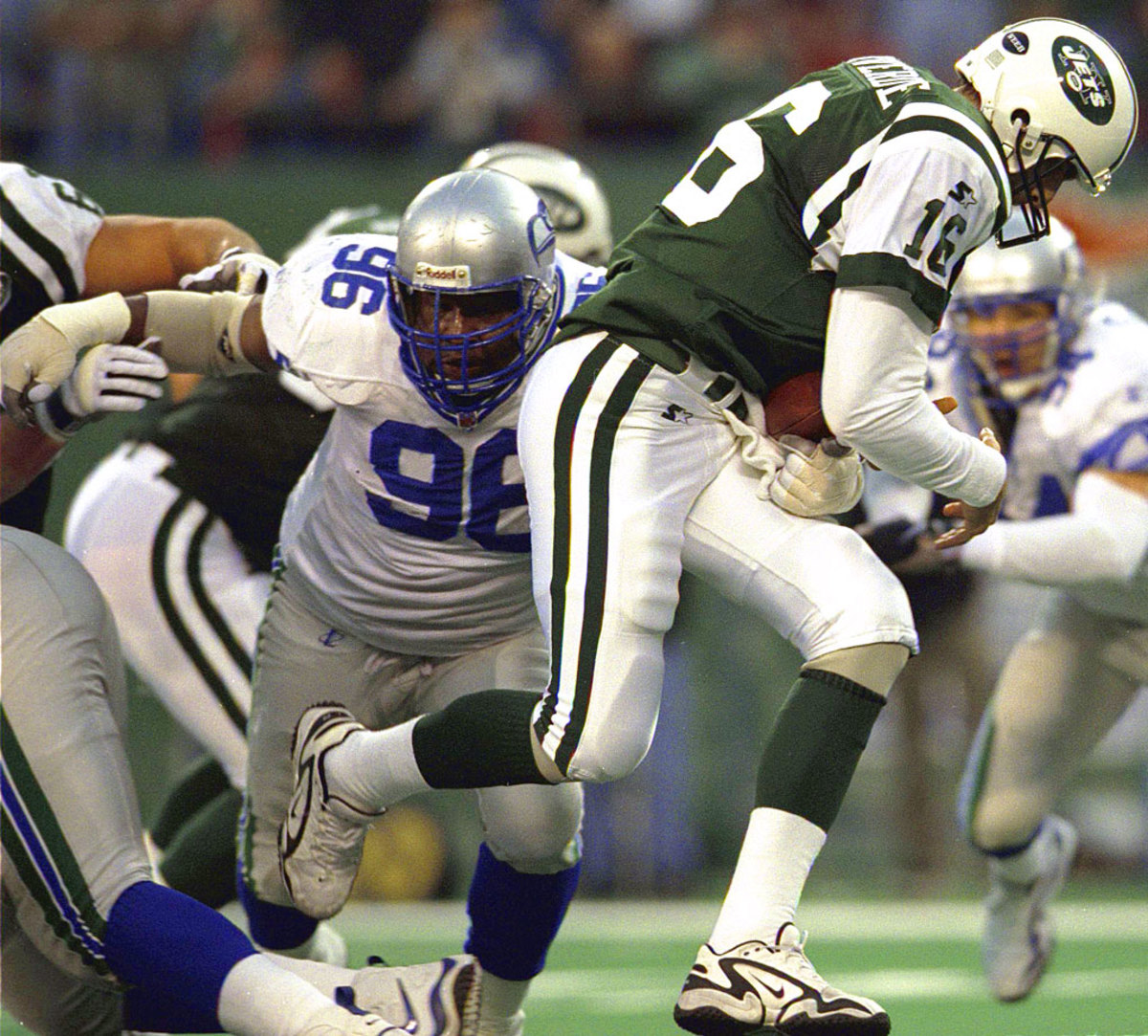
Kennedy was named the NFL's Defensive Player of the Year in 1992, when he had 14 sacks on one of the worst teams in NFL history. It was that way through most of his career, with Kennedy surpassing the achievements of the bad-to-mediocre teams around him, but Kennedy never lost hope or gave less than full effort. With eight Pro Bowls and three first-team All-Pro nominations, his status as one of the best defenders of the 1990s remains secure.
97 — Bryant Young
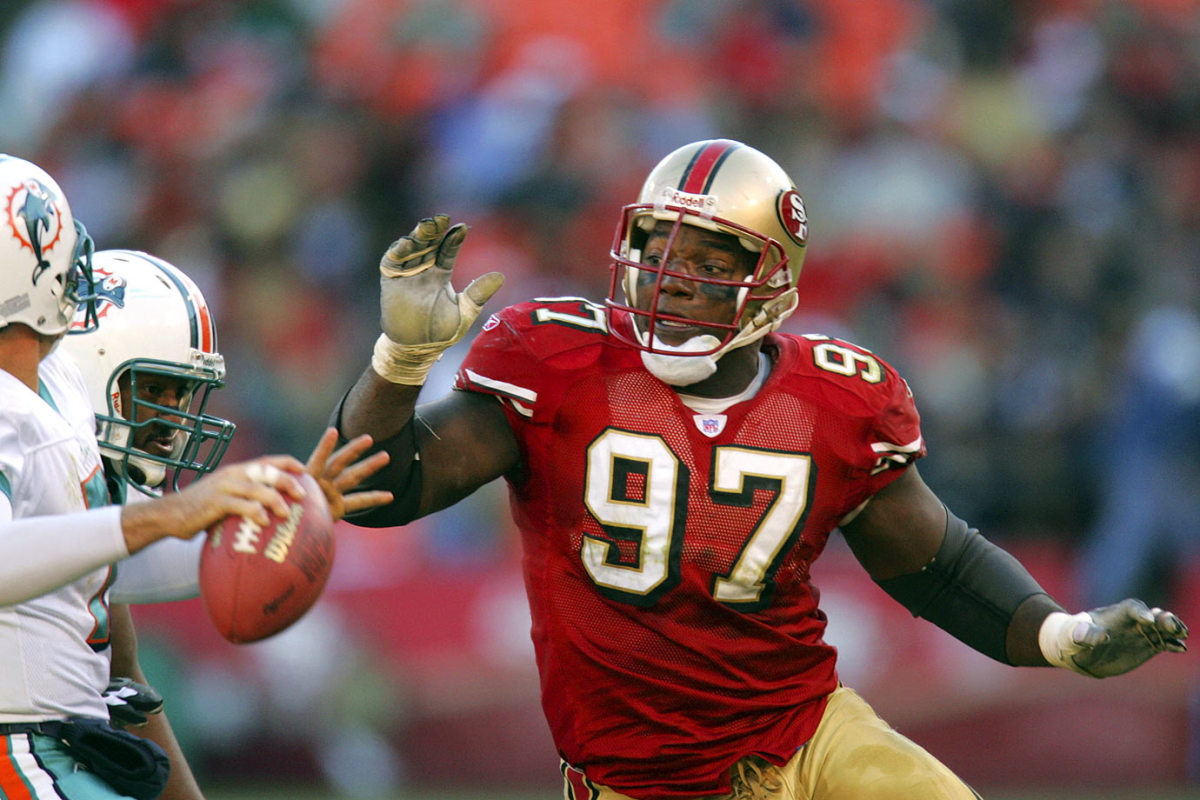
The 49ers won the last of their five Super Bowls in Young's rookie season, and the first-round pick played an important part with six regular-season sacks and another in the playoffs. He would top 10 sacks in two different seasons and end his career with 89.5. Only Warren Sapp, John Randle and Trevor Pryce have more career sacks among full-time tackles.
98 — Casey Hampton
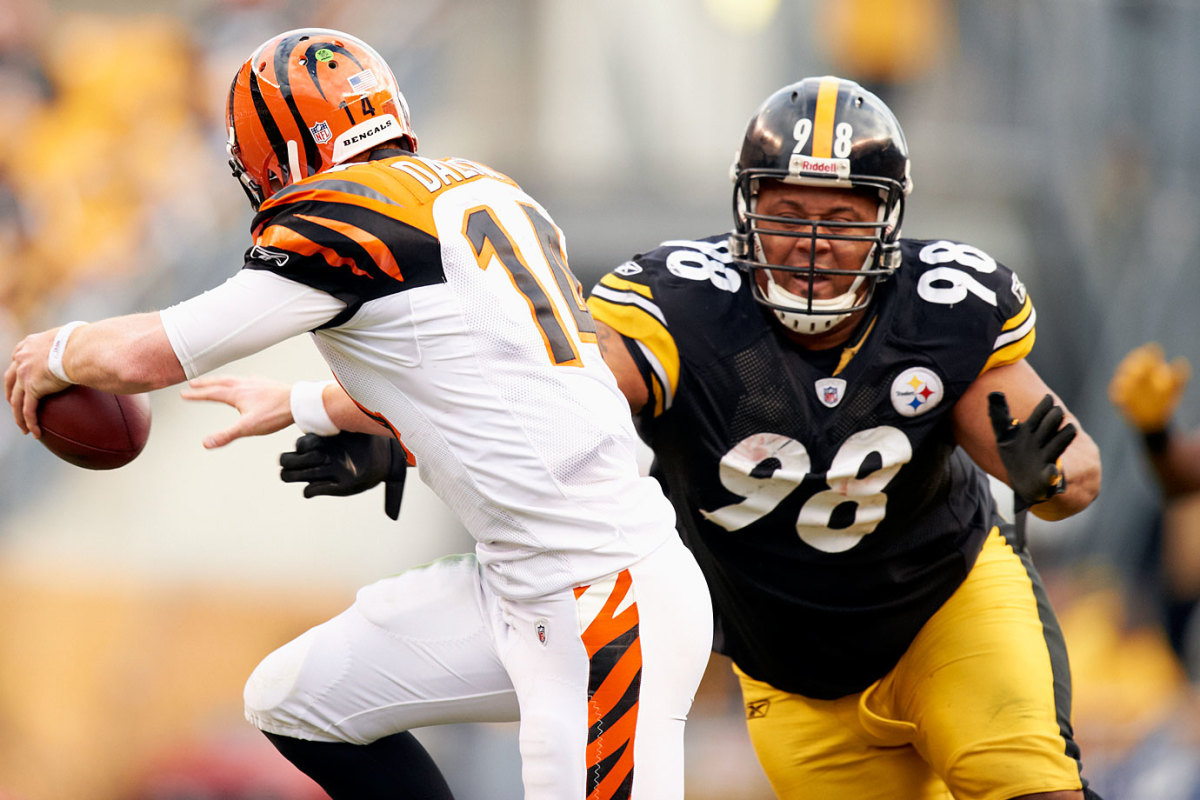
Selected in the first round out of Texas, Hampton immediately became the ideal nose tackle for Pittsburgh's 3–4 defense and really came into prominence when Dick LeBeau became the team's defensive coordinator in 2004. Not only could Hampton hold the point against double teams so that others could succeed, he was also a sneaky-fast coverage man in LeBeau's zone blitzes. He did those jobs well enough to make five Pro Bowls in his career.
99 — Warren Sapp
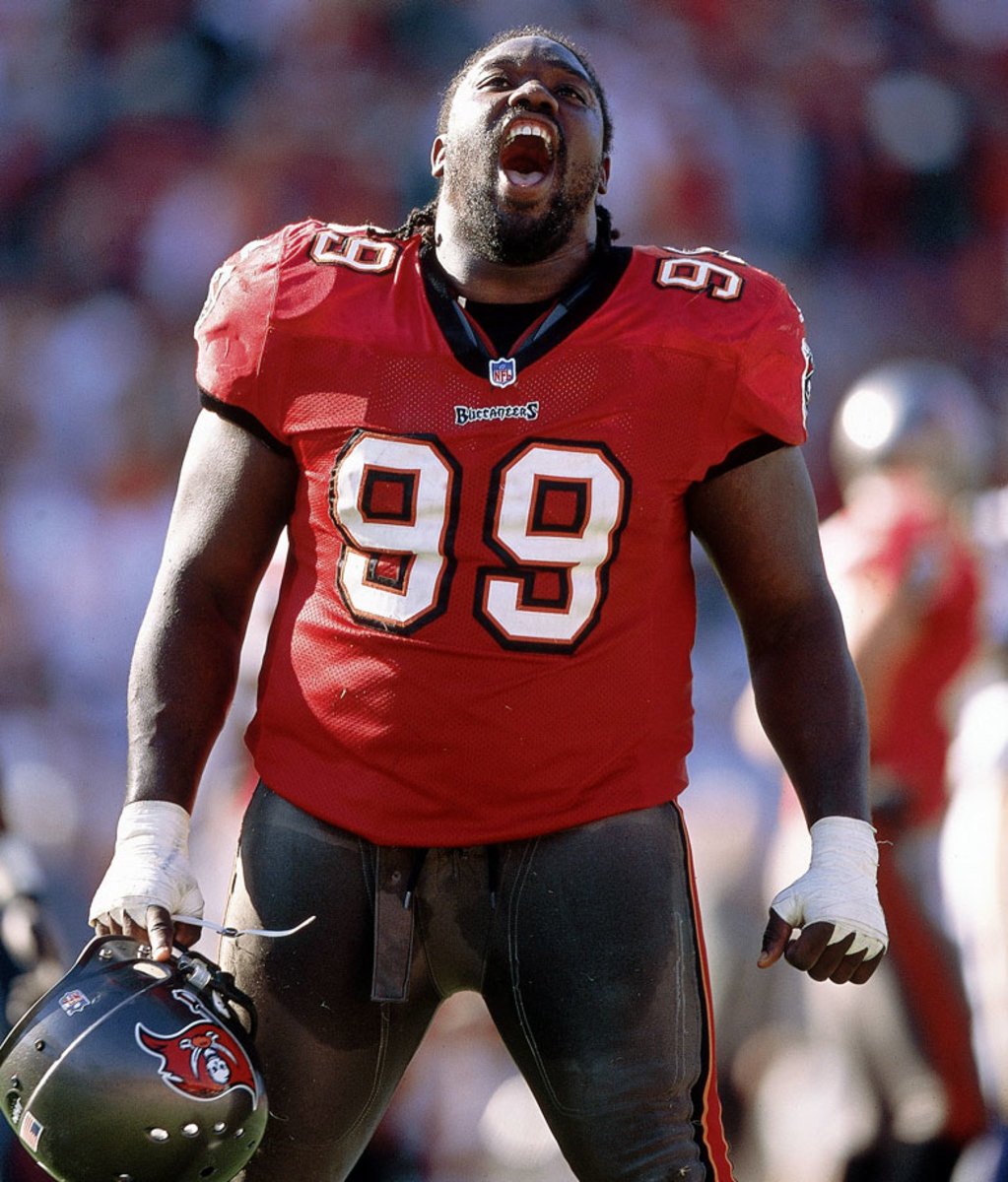
The Bucs' 1995 draft, with Sapp and linebacker Derrick Brooks taken in the first round, changed the fortunes of the entire franchise. Sapp was a non-stop terror at his best; he logged more than 10.0 sacks in four seasons, including an incredible 16.5 in 2000. Sapp was just as much a force against the run, and he may be the best defensive tackle of his era.
